Manga Hokusai Manga – An Japanese Manga Comics Exhibition in Chennai : Approaching the Master’s Compendium from the Perspective of Contemporary Comics (Updated)
– traveling exhibition to mark the celebration of the 70th anniversary of the Japan-India diplomatic relations
| CasualWalker’s Rating for Manga Hokusai Manga – Japanese Manga Comics Exhibition : | |

9.8 – Superb Awesome
|
To mark the celebration of the 70th anniversary of the Japan-India diplomatic friendly relations, the Japanese Manga Comics Exhibition held at Lalit Kala Akademi, titled – “Manga Hokusai Manga: Approaching the Master’s Compendium from the Perspective of Contemporary Comics”. This traveling exhibition was wonderfully organized by the Consulate-General of Japan, Chennai, The Japan Foundation, and ABK-AOTS Dosokai, Tamil Nadu Centre.
The exhibition was inaugurated by Shri. Taga Masayuki, the Consulate General of Japan in Chennai, Shri G Chandramohan, president of ABK-AOTS Dosokai, Shri. Koizumi Nami, Shri Taga Sakura, Shri. Irish harpist, and Shri Sovan Kumar, regional secretary of Lalit Kala Akademi.
The Japanese manga – the worldwide famous comics fandom sensational art form of pictorial storytelling has evolved over the years in Japan. Katsushika Hokusai is one of the artists who has made an immense contribution to this development of Manga comics, whose works are popularly known as ‘Hokusai Manga’. His is also the world’s most popular for his If there is one work of Japanese artist Katsushika neophyte artworks like the Kanagawa oki namiura – The Great Wave.
This exhibition showcased the various works of Hokusai’s works and also features contemporary manga artists based on Hokusai’s manga like Ichikawa Haruko – Summer Fields, Igarashi Daisuke – A Person Who Draws the World, Kyō Machiko – Innocent Toys, Nishijima Daisuke – La Mer I, Okadaya Tetuzoh – That’s All For Now, Shiriagari Kotobuki – Funny Face 2015, Yokoyama Yuichi – Giant Elephant.
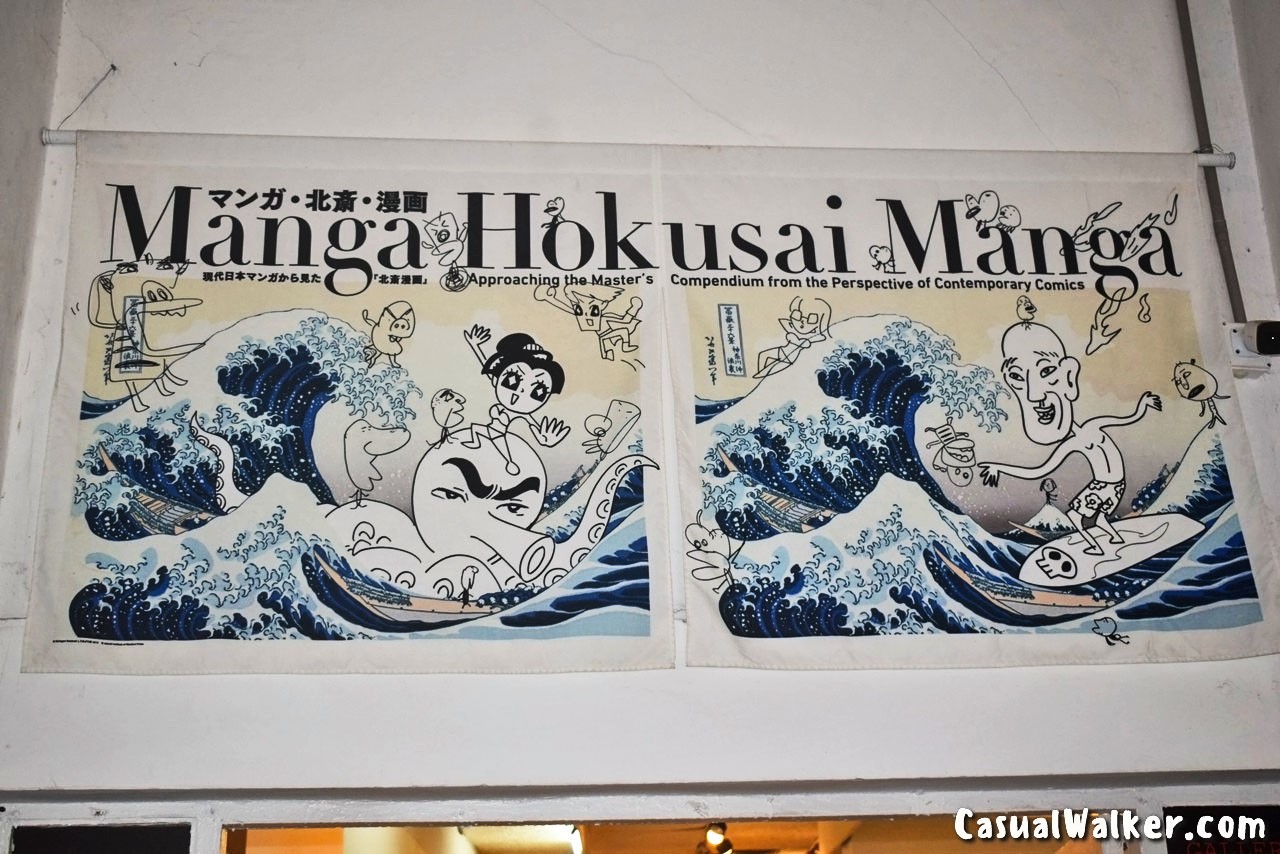
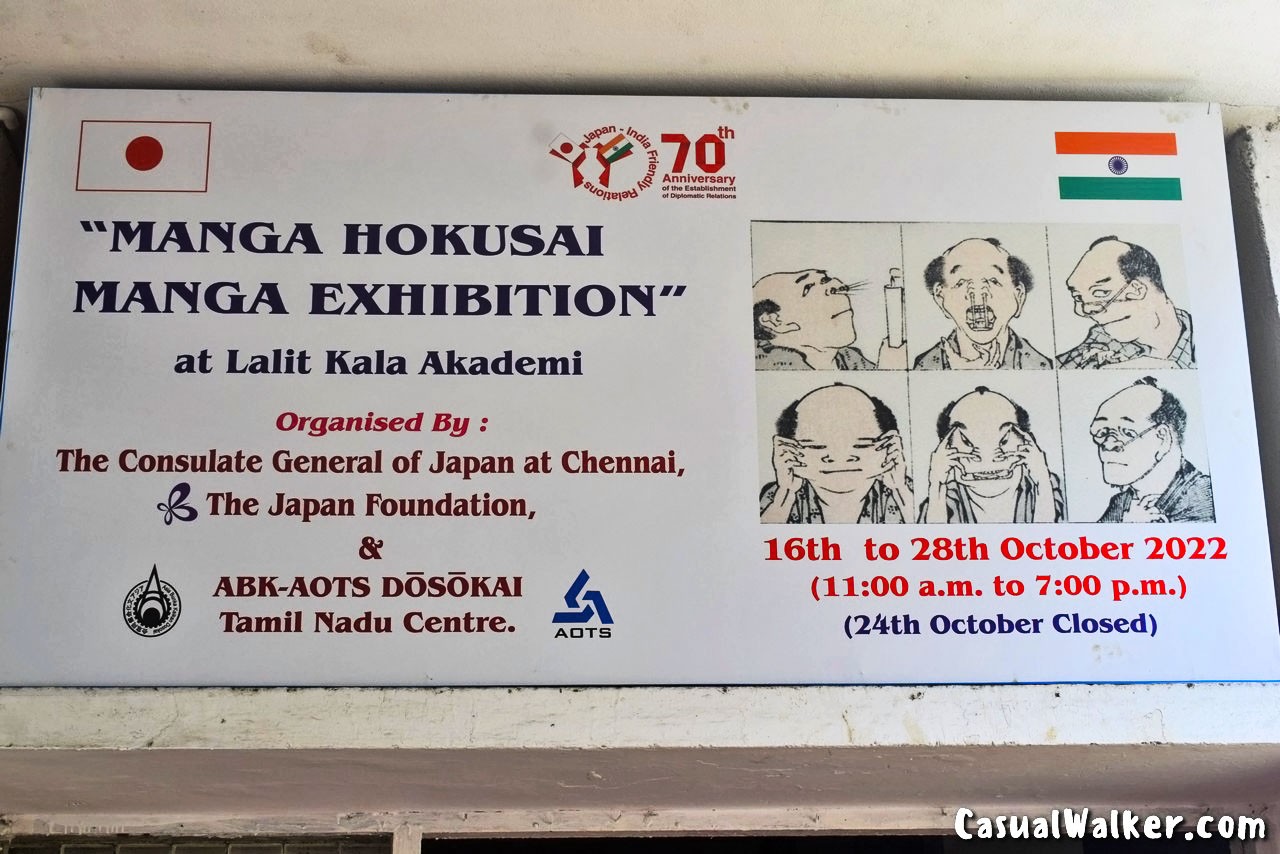
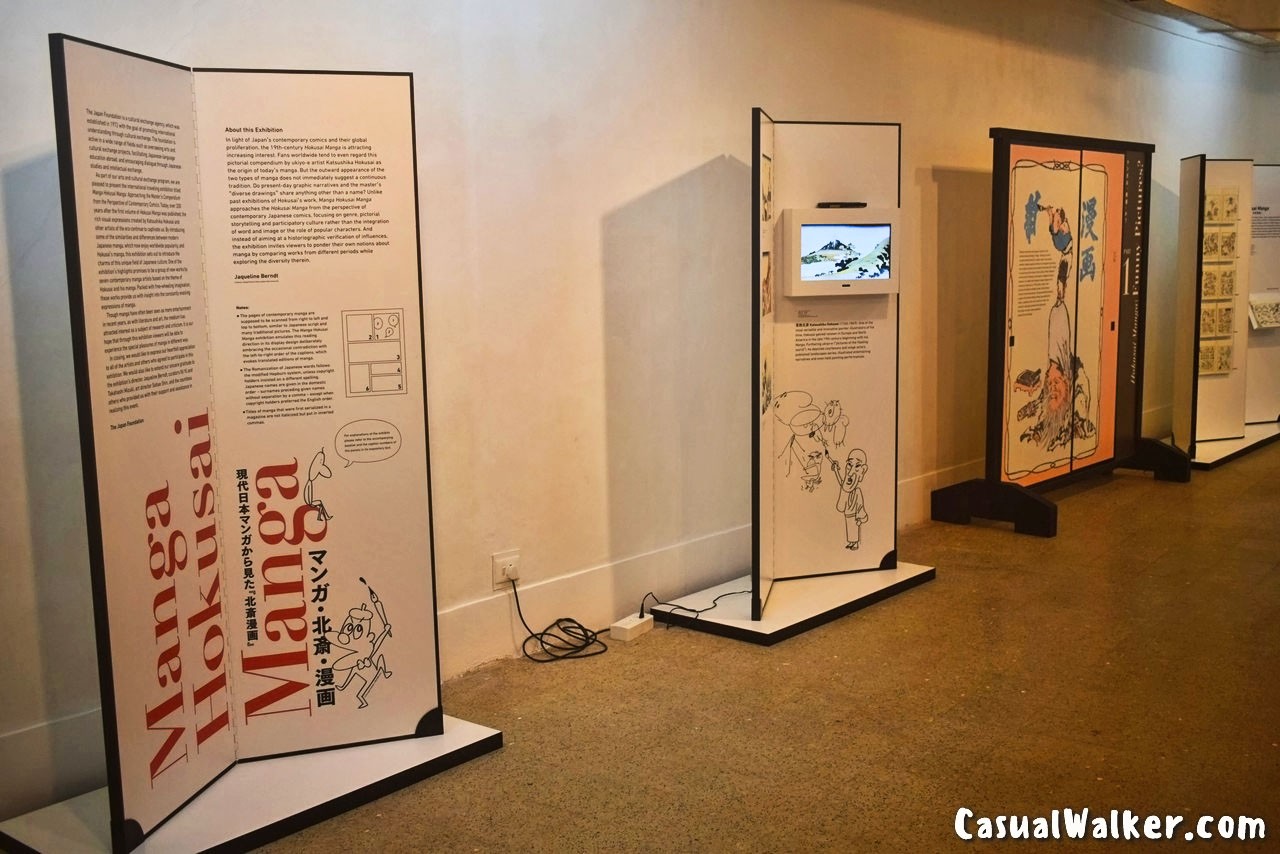
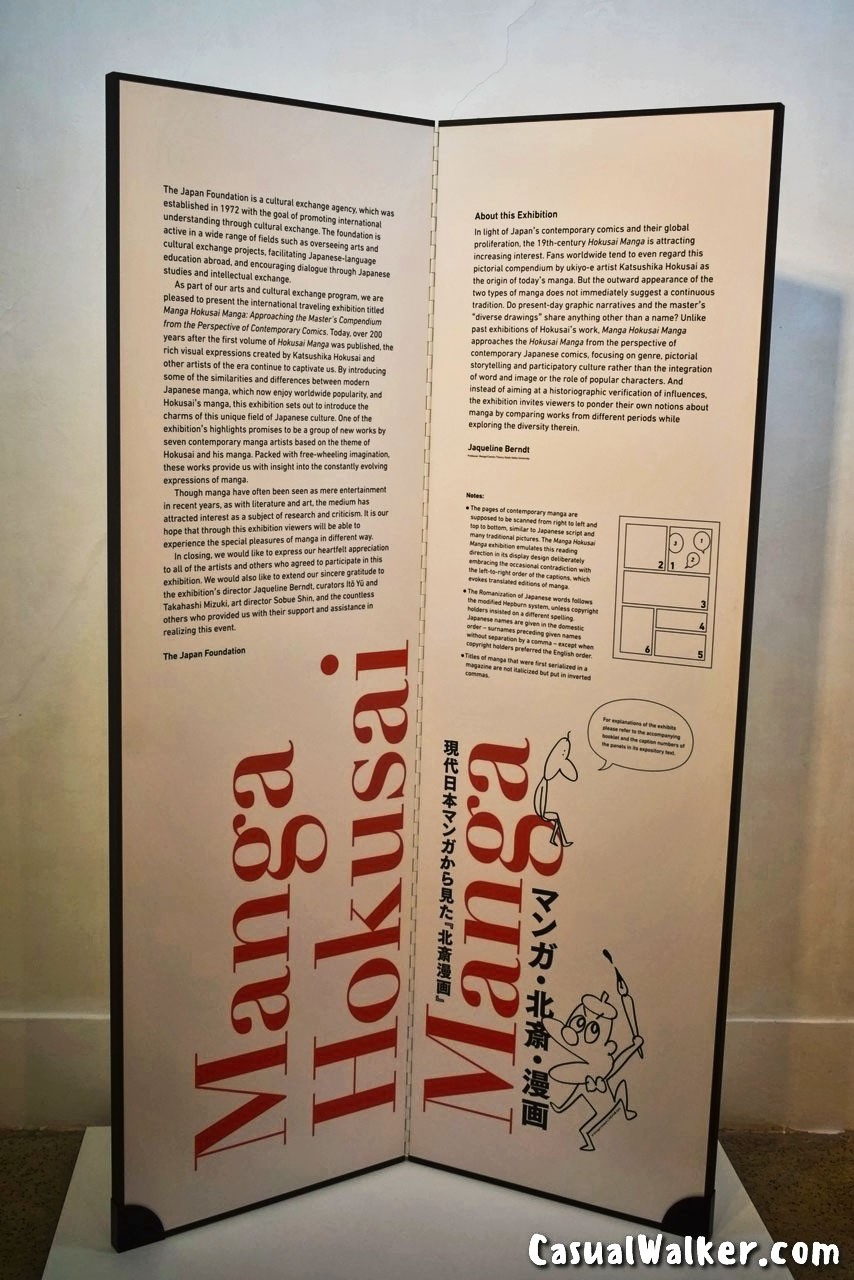
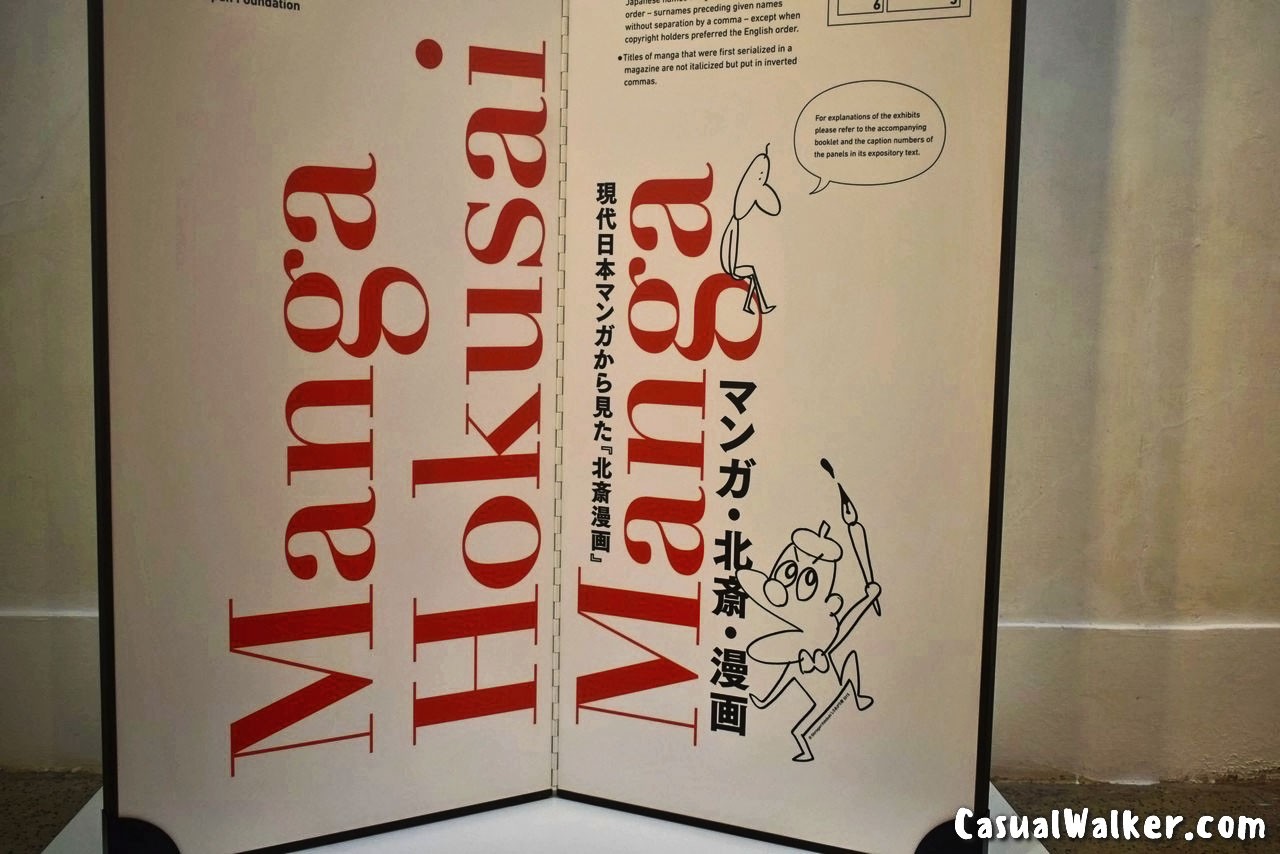
About the Manga – Japanese Comics Exhibition
In light of Japan’s contemporary comics and their global proliferation, the 19th-century Hokusai Manga is attracting increasing interest. Fans worldwide tend to even regard this pictorial compendium by ukiyo-e artist Katsushika Hokusai as the origin of today’s manga. But the outward appearance of the two types of manga does not immediately suggest a continuous tradition. Do present-day graphic narratives and the master’s “diverse drawings” share anything other than a name? Unlike past exhibitions of Hokusai’s work, Manga Hokusai Manga approaches the Hokusai Manga from the perspective of contemporary Japanese comics, focusing on genre, pictorial storytelling, and participatory culture rather than the integration of word and image or the role of popular characters. And instead of aiming at a historiographic verification of influences, the exhibition invites viewers to ponder their own notions about manga by comparing works from different periods while exploring the diversity therein.
The pages of contemporary manga are supposed to be scanned from right to left and top to bottom, similar to Japanese script and many traditional pictures. The Manga Hokusai Manga exhibition emulates this reading direction in its display design deliberately embracing the occasional contradiction with the left-to-right order of the captions, which evokes translated editions of manga.
The Romanization of Japanese words follows the modified Hepburn system unless copyright holders insisted on a different spelling. Japanese names are given in the domestic order surnames preceding given names without separation by a comma – except when copyright holders preferred the English order. Titles of manga that were first serialized in a magazine are not italicized but put in inverted
commas.
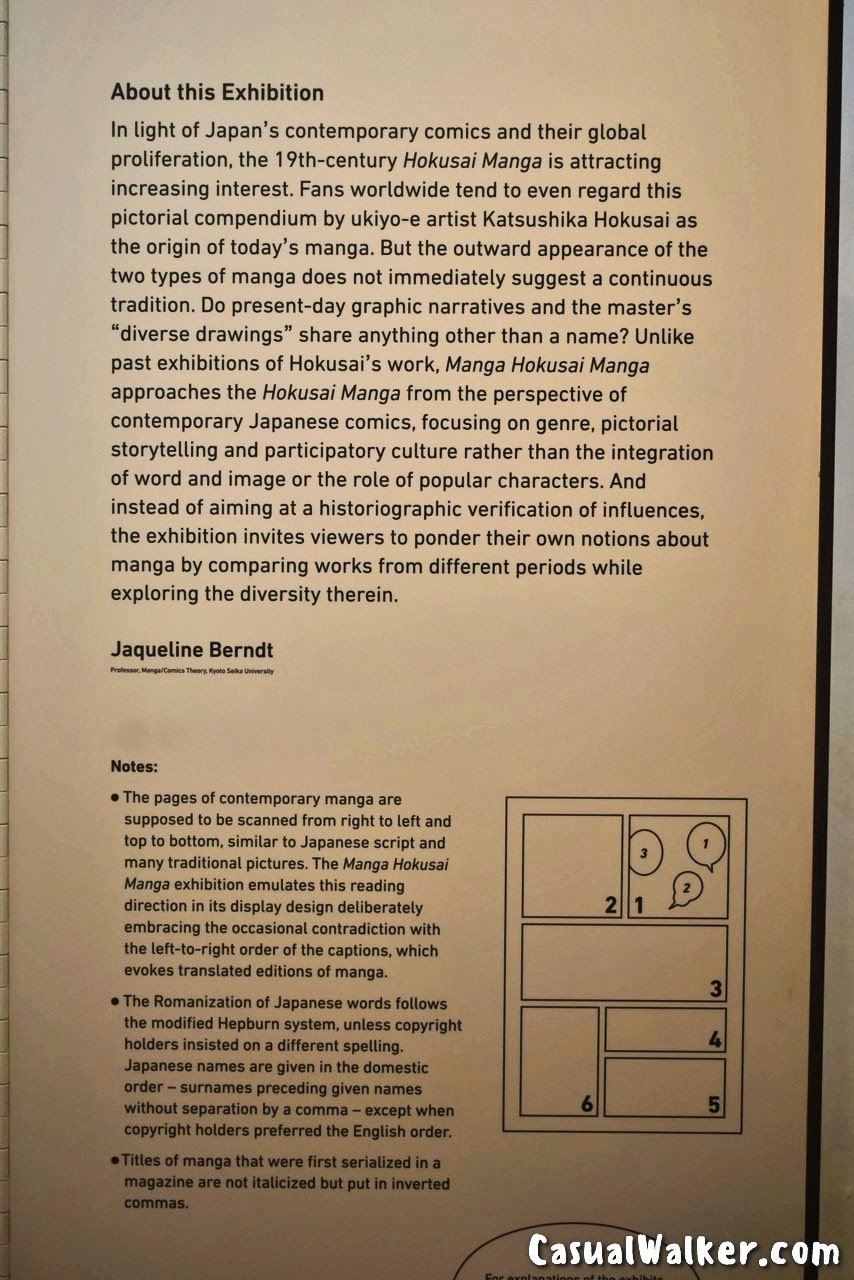
About The Japan Foundation
The Japan Foundation is a cultural exchange agency, which was established in 1972 with the goal of promoting international understanding through cultural exchange. The foundation is active in a wide range of fields such as overseeing arts and cultural exchange projects, facilitating Japanese-language education abroad, and encouraging dialogue through Japanese studies and intellectual exchange.
As part of our arts and cultural exchange program, we are pleased to present the international traveling exhibition titled Manga Hokusai Manga: Approaching the Master’s Compendium from the Perspective of Contemporary Comics. Today, over 200 years after the first volume of Hokusai Manga was published, the rich visual expressions created by Katsushika Hokusai and other artists of the era continue to captivate us. By introducing some of the similarities and differences between modern Japanese manga, which now enjoy worldwide popularity, and Hokusai’s manga, this exhibition sets out to introduce the charms of this unique field of Japanese culture. One of the exhibition’s highlights promises to be a group of new works by seven contemporary manga artists based on the theme of Hokusai and his manga. Packed with free-wheeling imagination, these works provide us with insight into the constantly evolving expressions of manga.
Though manga has often been seen as mere entertainment in recent years, as with literature and art, the medium has attracted interest as a subject of research and criticism. It is our hope that through this exhibition viewers will be able to experience the special pleasures of manga in different ways.
In closing, we would like to express our heartfelt appreciation to all of the artists and others who agreed to participate in this exhibition. We would also like to extend our sincere gratitude to the exhibition’s director Jaqueline Berndt, curators Itō Yū and Takahashi Mizuki, art director Sobue Shin, and the countless others who provided us with their support and assistance in realizing this event.
What does the term “Manga” mean?
The word “Manga” was initially written with two Sino-Japanese characters: (man: diverse, random, rambling, capricious) and 9 (ga: line drawing, picture). When the term first spread in the early 19th century, it was primarily used to indicate a large and wide assortment of drawings or an extensive catalog of motifs. Pictures with a comical orientation were more specifically referred to as giga or toba-e.
With the emergence of modern newspapers around 1900, the quantitative term “manga” assumed the qualitative meaning of the satirical picture. It ultimately became part of everyday parlance in the 1920s.
Throughout the 20th century, the word denoted cartoons, caricatures, comic strips (koma manga), and, eventually, graphic narratives serialized in manga magazines. Since the 1960s, these narratives have often been indicated by rendering the word “manga” in katakana syllabary. The term was also used for animated films (manga eiga, TV manga). Outside of Japan, however, manga generally signifies novel-like fiction in comic form.
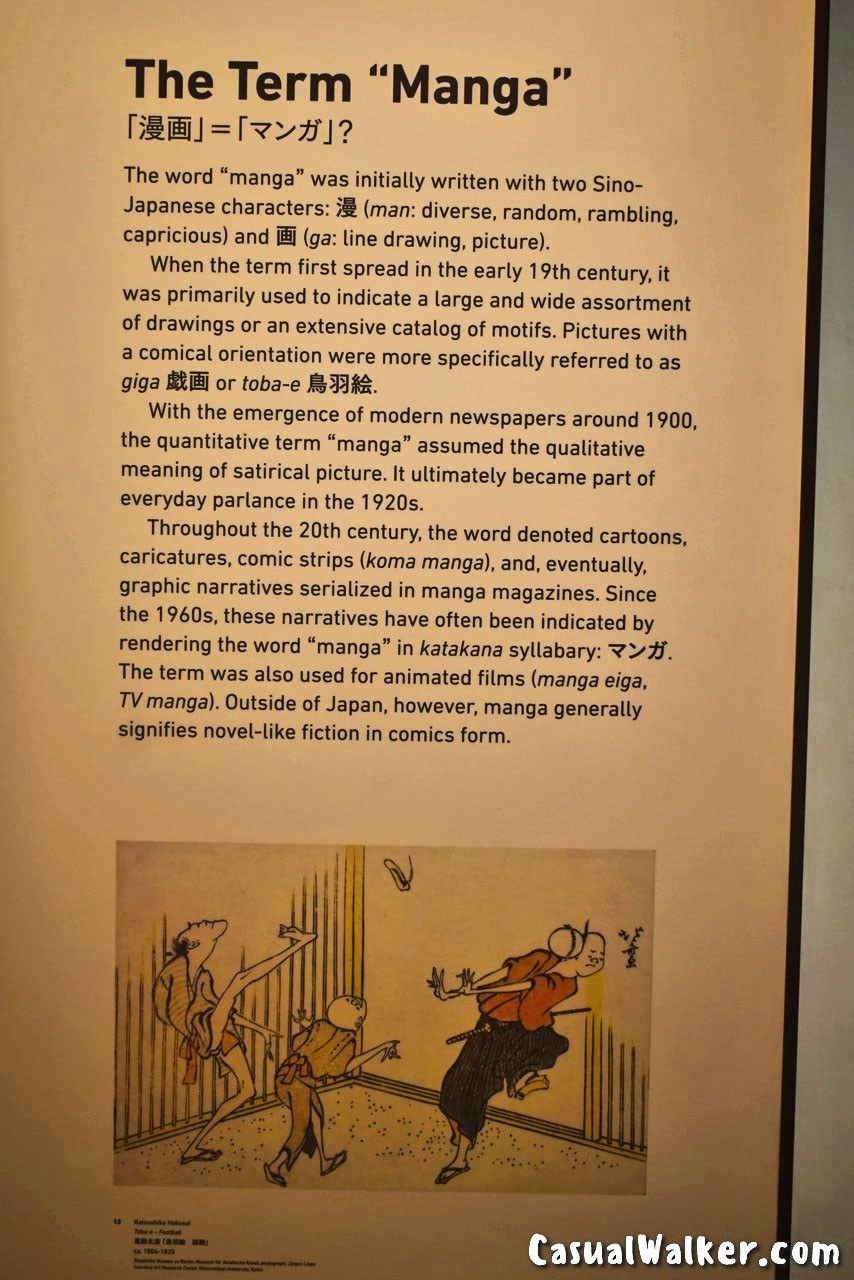
Katsushika Hokusai (1760-1849)
One of the most versatile and innovative painter-illustrators of his time, Hokusai gained renown in Europe and North America in the late 19th century beginning with his Manga. Furthering ukiyo-e (“pictures of the floating world”), he depicted courtesans and stage actors, published landscapes series, illustrated entertaining narratives, and even held painting performances.
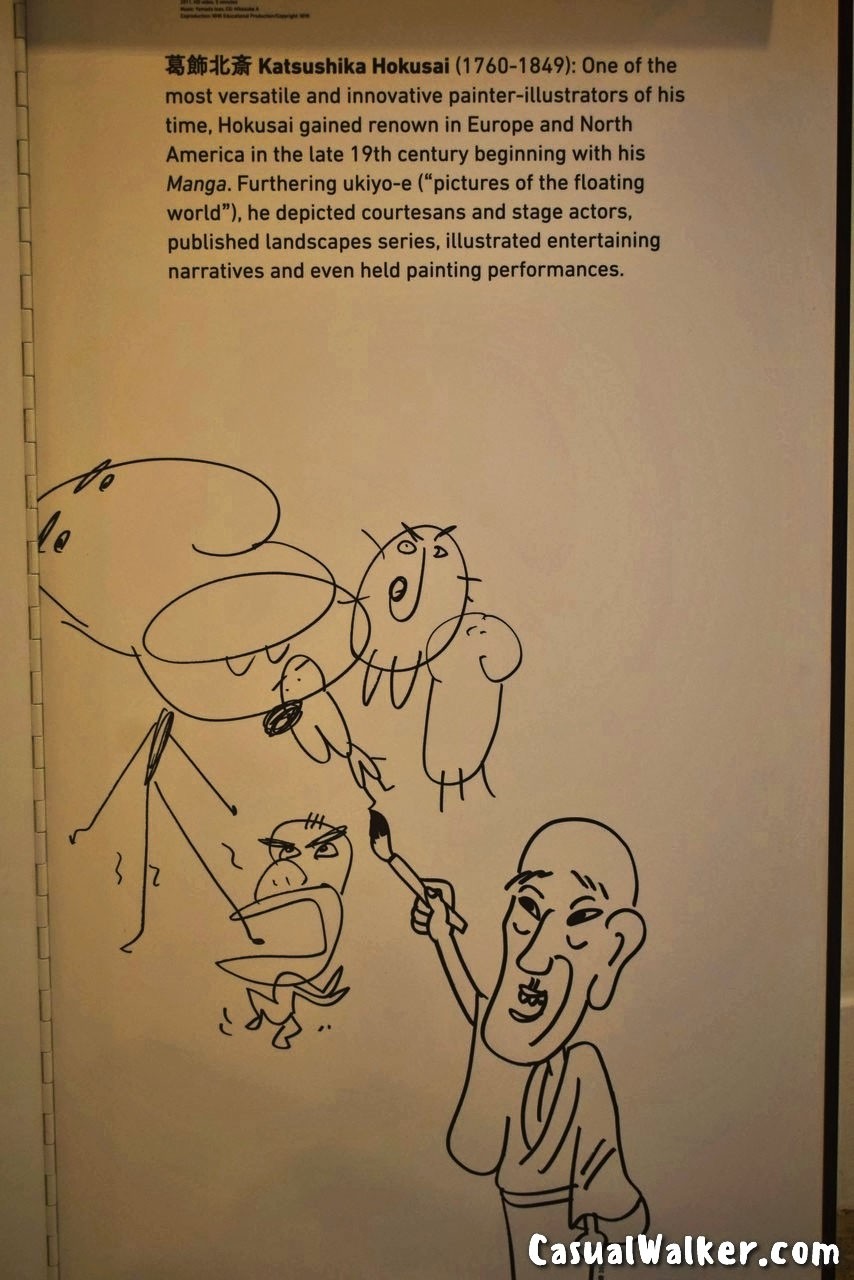
This manga exhibition is divided into four categories, which walk us through the history of manga and Hokusai’s manga.
The first part Hokusai Manga: Funny Pictures?
It showcases the block-printed figures explaining everyday life in Japan.
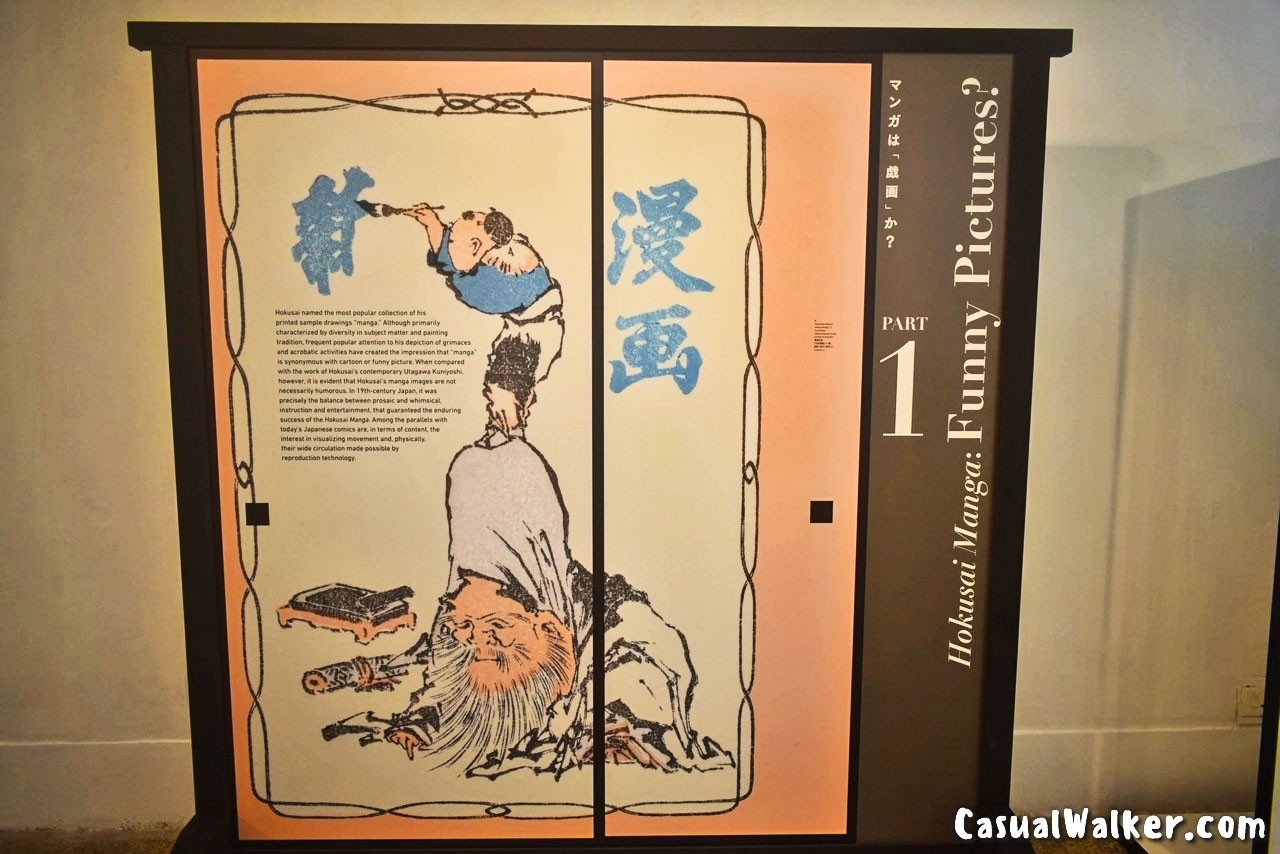
Hokusai named the most popular collection of his printed sample drawings Manga. Although primarily characterized by diversity in subject matter and painting tradition, frequent popular attention to his depiction of grimaces and acrobatic activities has created the impression that “manga” is synonymous with cartoons or funny pictures. When compared with the work of Hokusai’s contemporary Utagawa Kuniyoshi, however, it is evident that Hokusai’s manga images are not necessarily humorous.
In 19th-century Japan, it was precisely the balance between prosaic and whimsical, instruction and entertainment, that guaranteed the enduring success of the Hokusai Manga. Among the parallels with today’s Japanese comics are, in terms of content, the interest in visualizing movement and, physically, their wide circulation made possible by
reproduction technology.
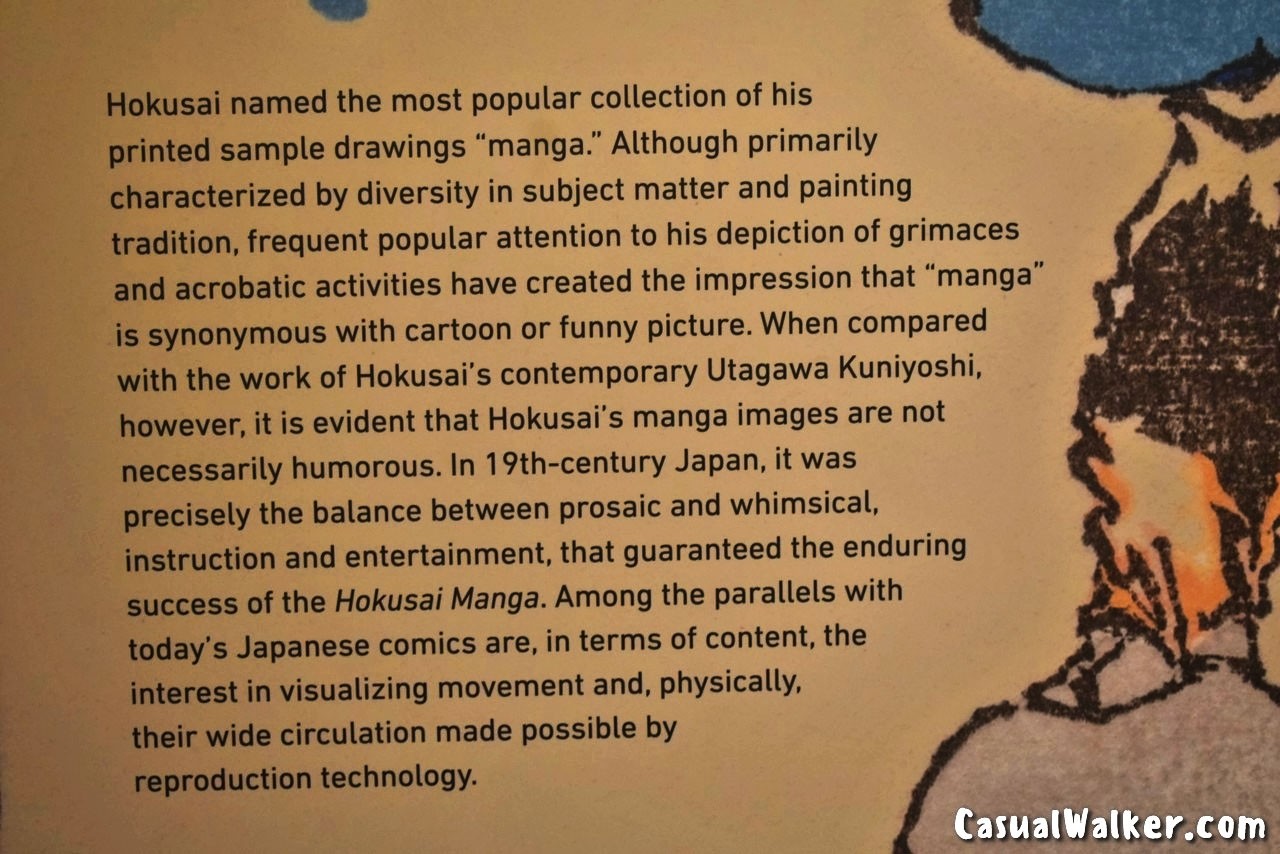
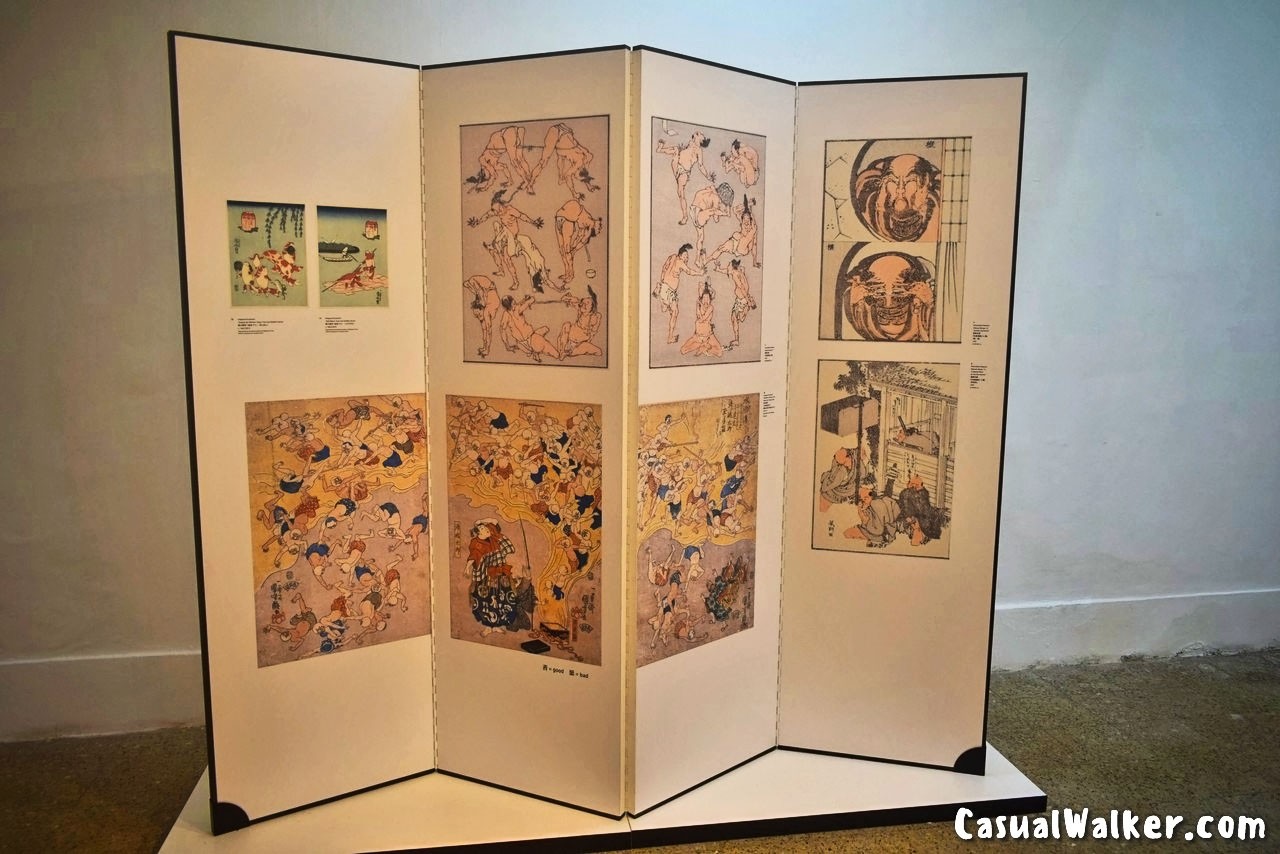
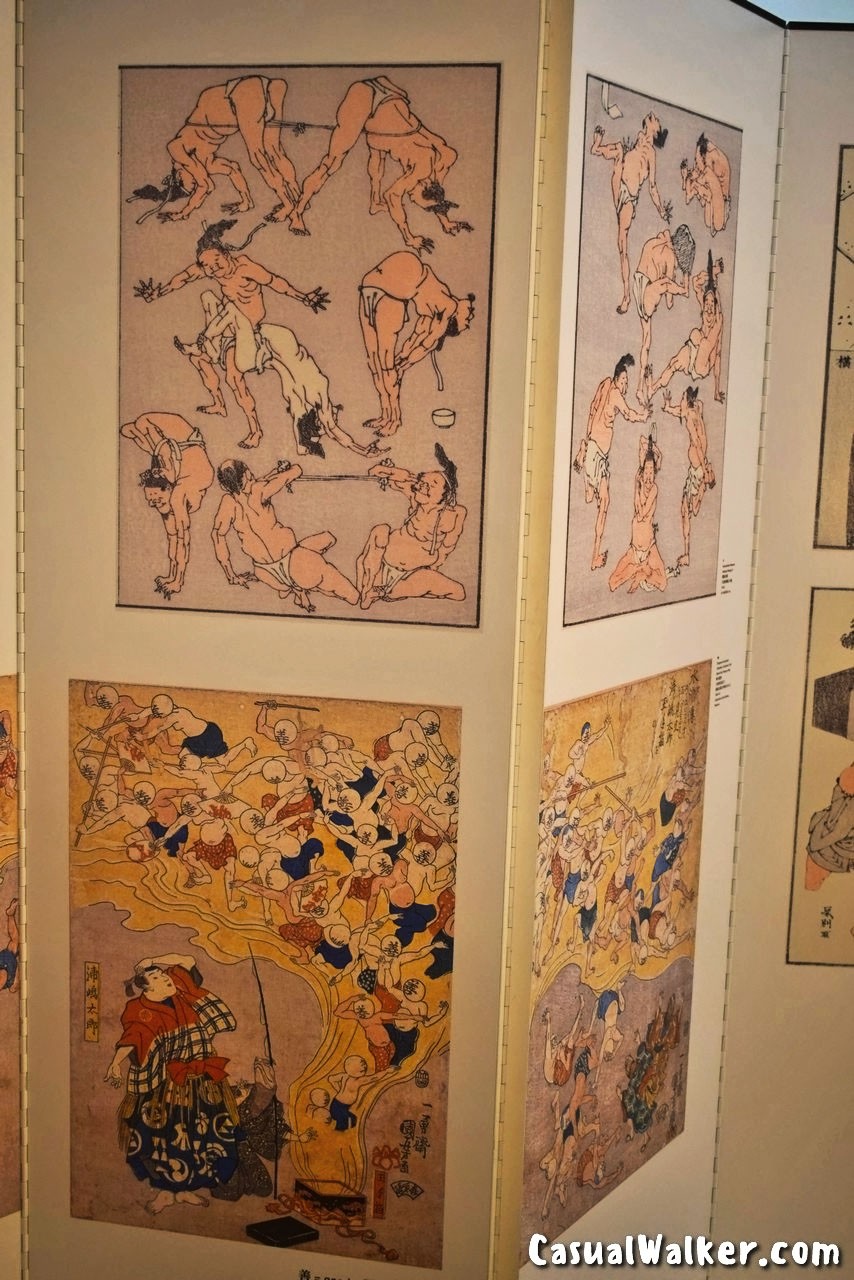
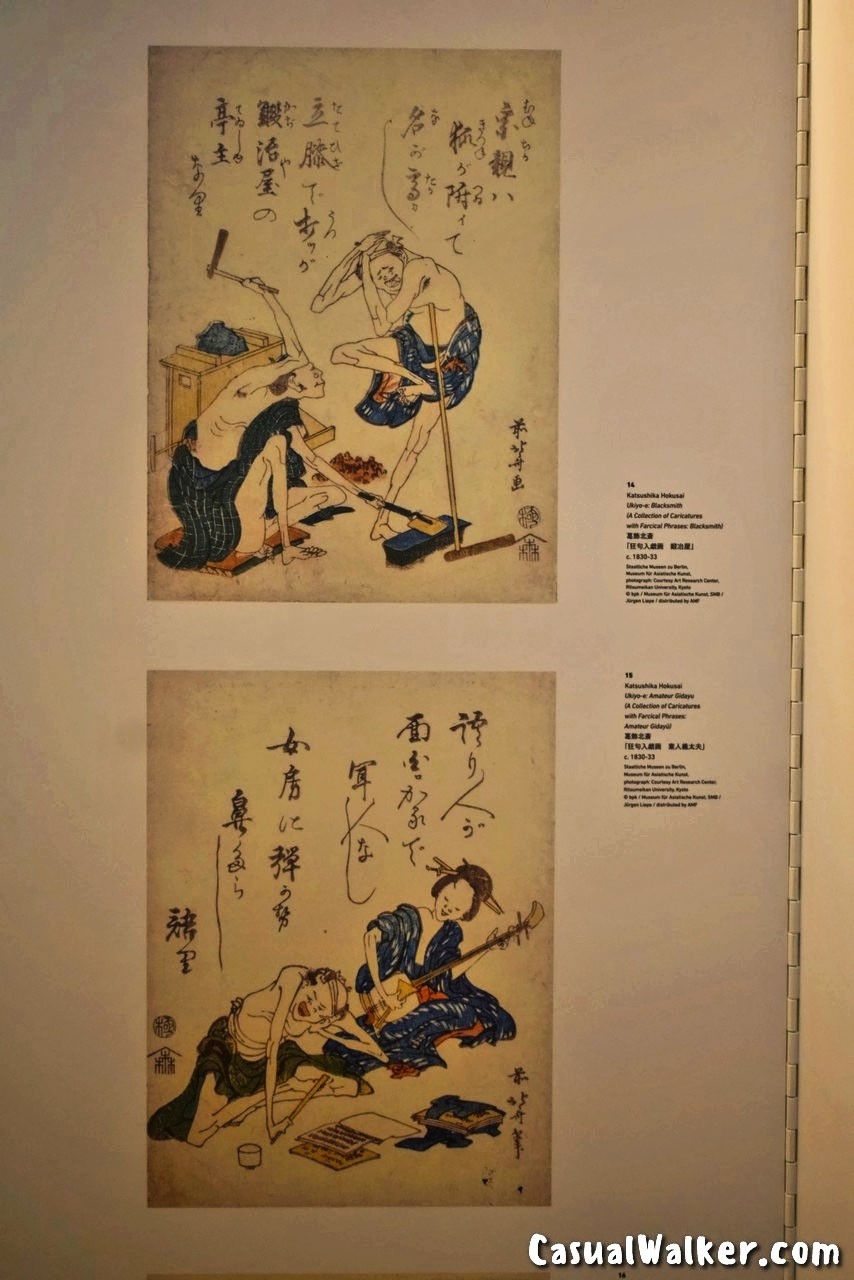
Hokusai Manga
Block-printed in three colors – black, gray, and pale flesh and published from 1814 to 1878 in 15 stitched-bound volumes, the Hokusai Manga consists of 4.000 images and some 800 pages. The phrase which precedes the title, denshin kaishu (“conveying the spirit, learning the trade”). indicates the original instructional purpose of the series, which enjoyed such great popularity that it continued to be published for almost three decades after Hokusai’s death.
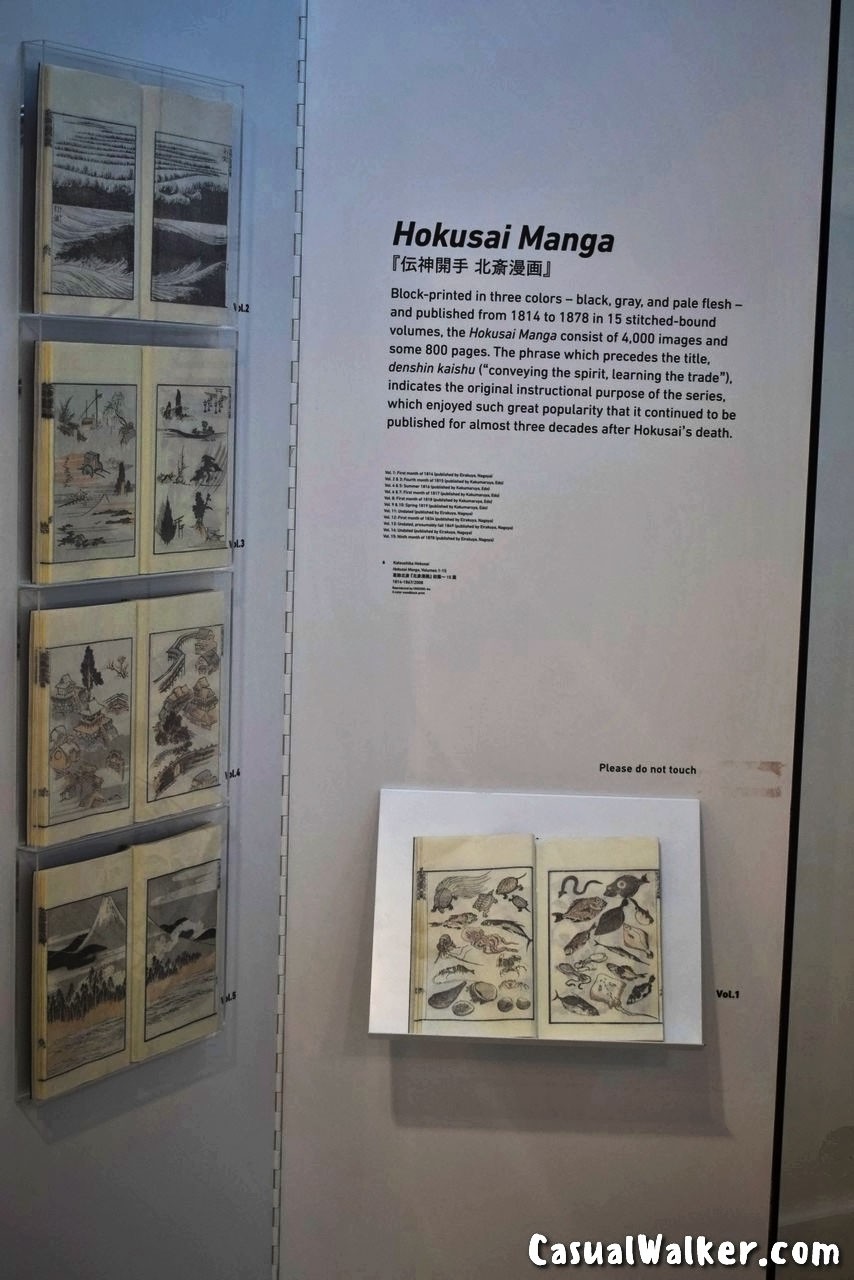
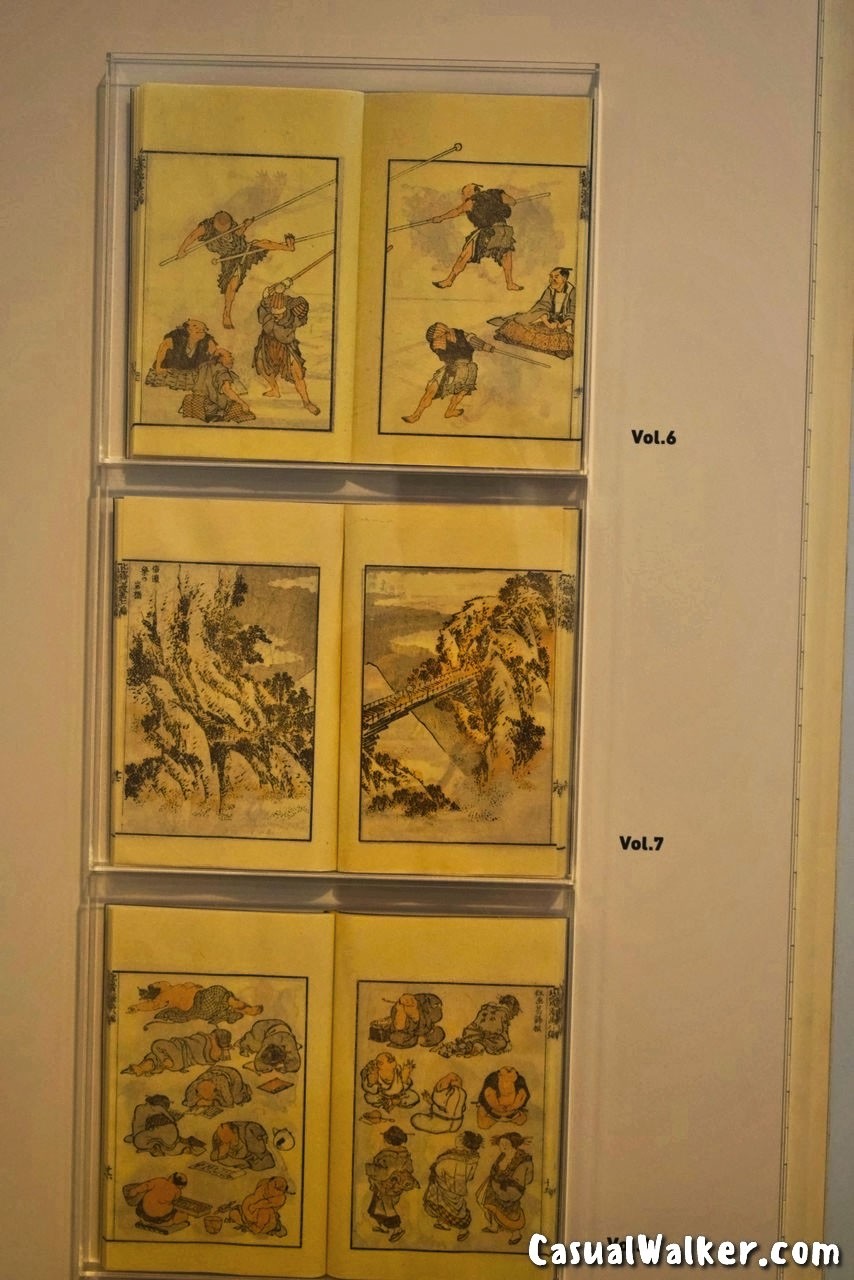
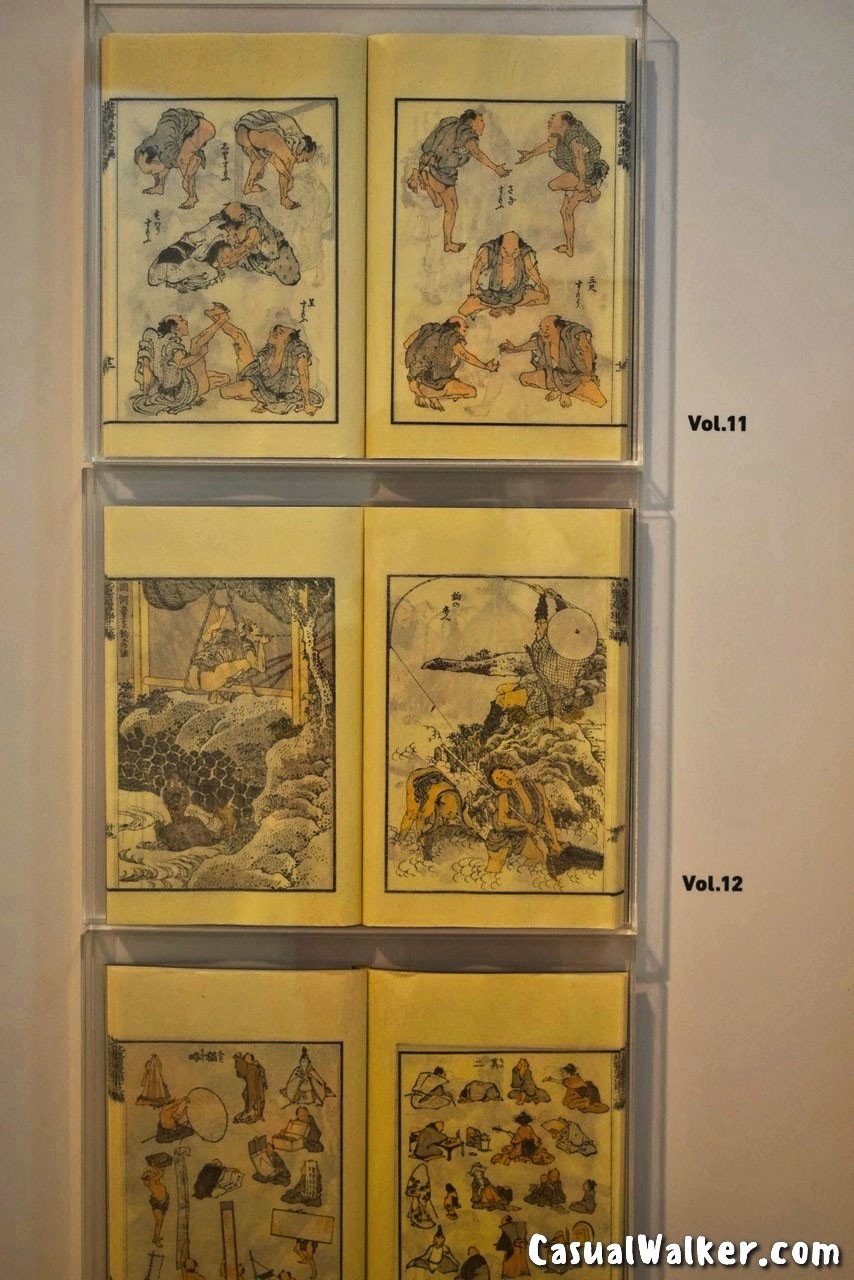
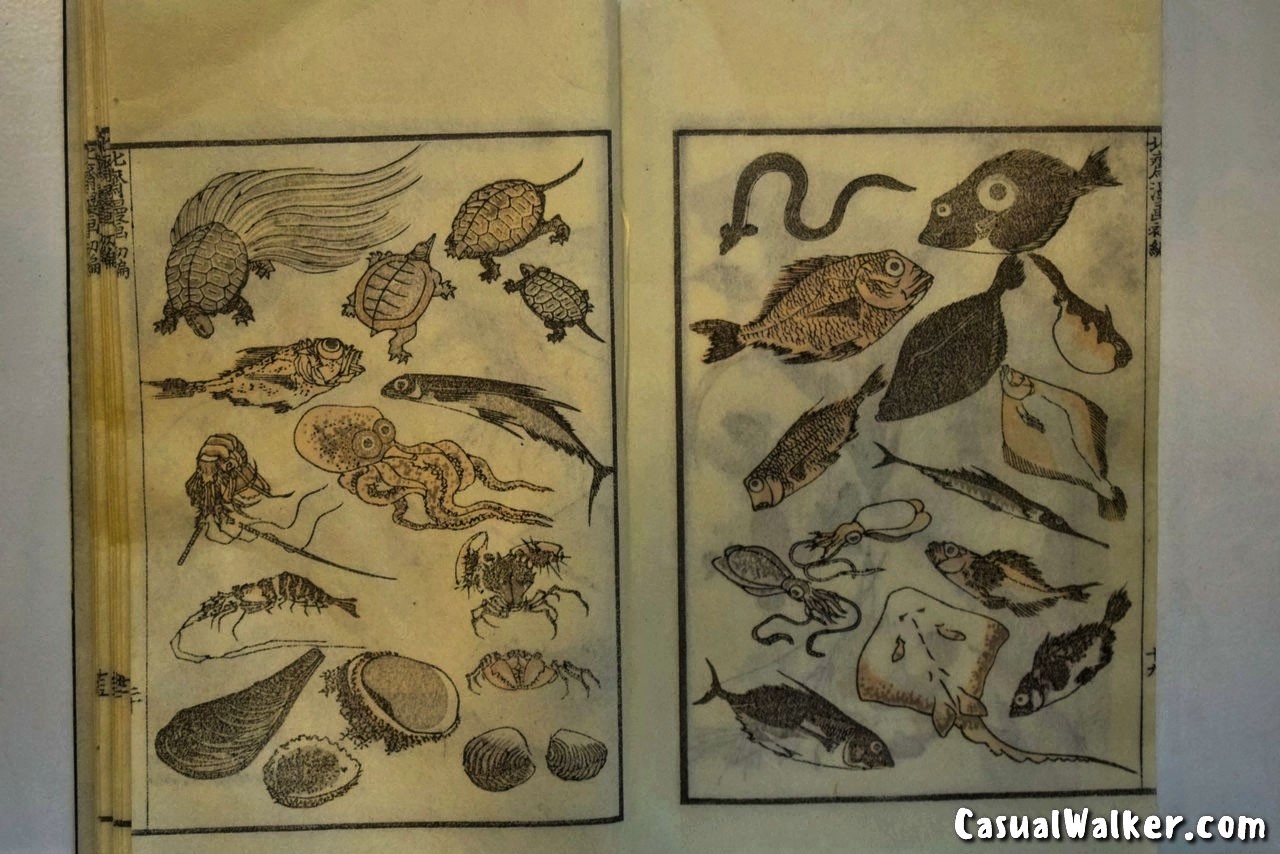
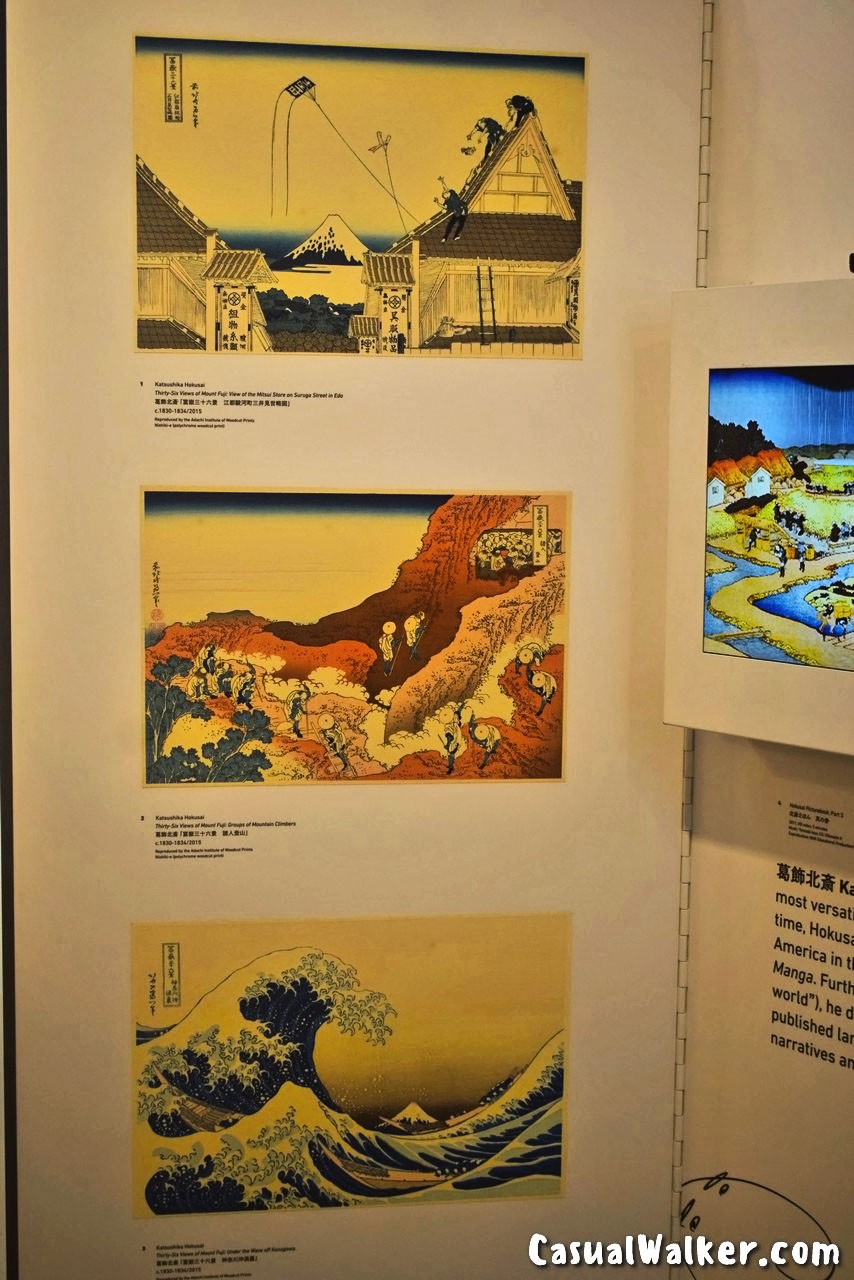
The second part showcased the A Character Named Hokusai
It displayed several contemporary mangas which featured Hokusai as a part of their narratives. Some of the manga artists who incorporated this are- Kamimura Kazuo, Sugiura Hinako, Ishoinomori Shotaro, Samura Hiroaki, Sakura Sawa, and Saeki Konosuke.
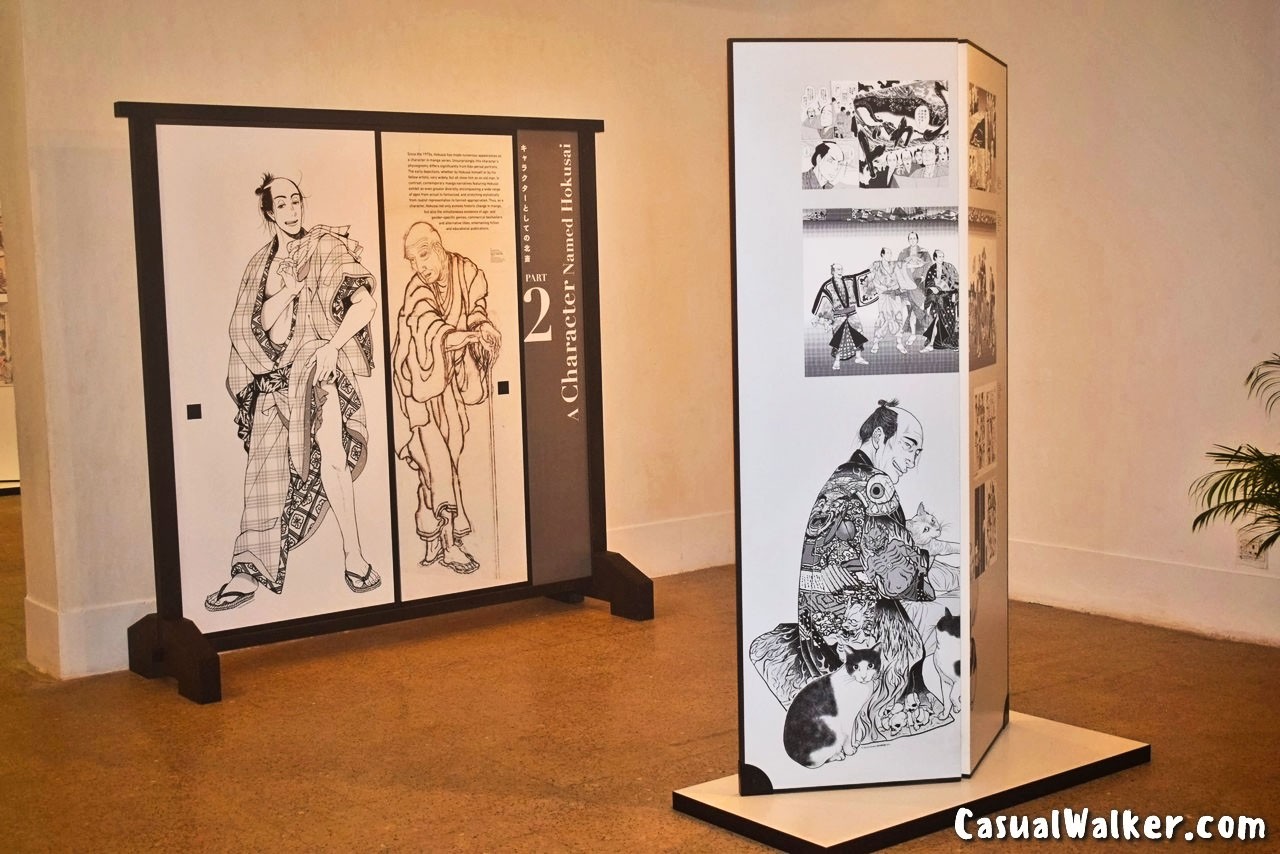
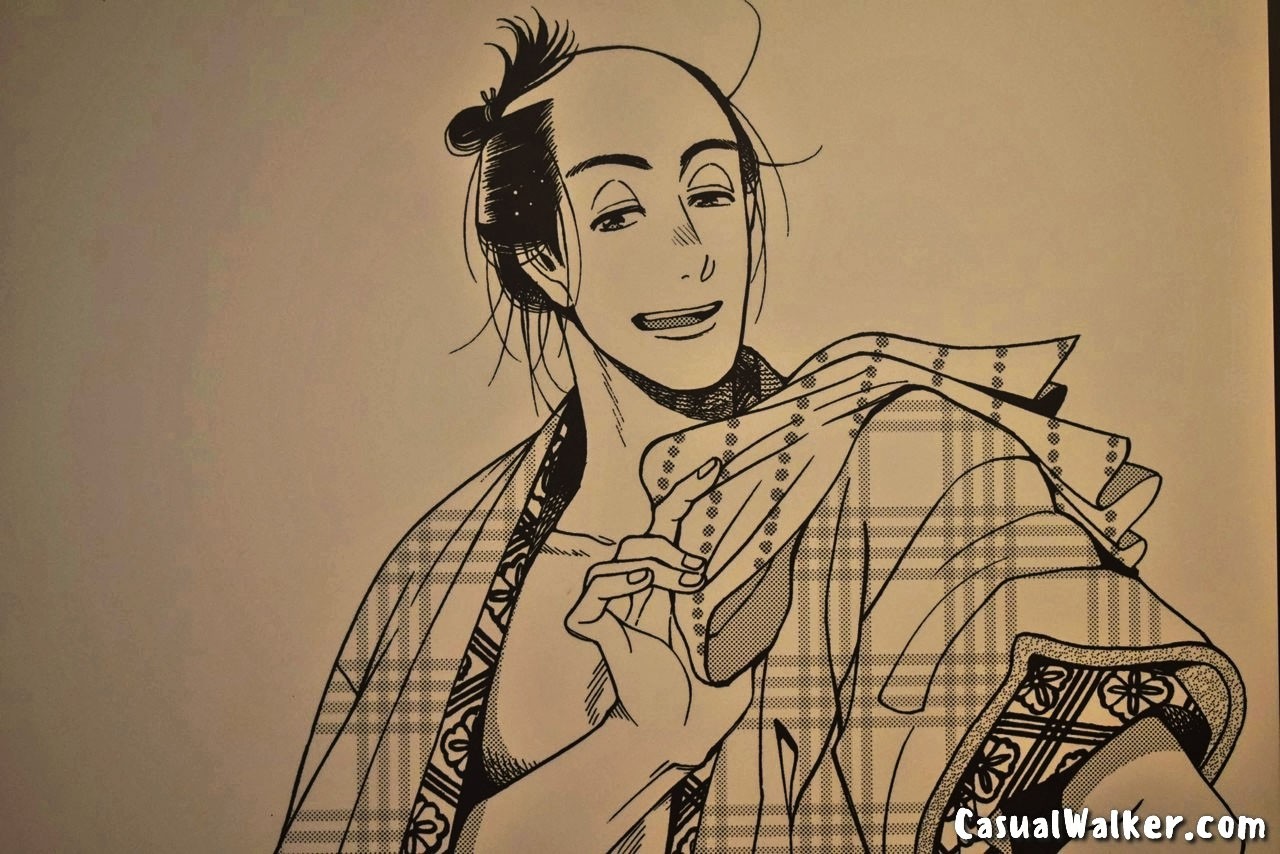
Since the 1970s, Hokusai has made numerous appearances as a character in manga series. Unsurprisingly, this character’s physiognomy differs significantly from Edo-period portraits. The early depictions, whether by Hokusai himself or by his fellow artists, vary widely, but all show him as an old man. In contrast, contemporary manga narratives featuring Hokusai exhibit even greater diversity, encompassing a wide range of ages from actual to fantasized, and stretching stylistically from realist representation to fannish appropriation.
Thus, as a character, Hokusai not only evinces historic change in the manga but also the simultaneous existence of age- and gender-specific genres, commercial bestsellers and alternative titles, entertaining fiction, and educational publications.
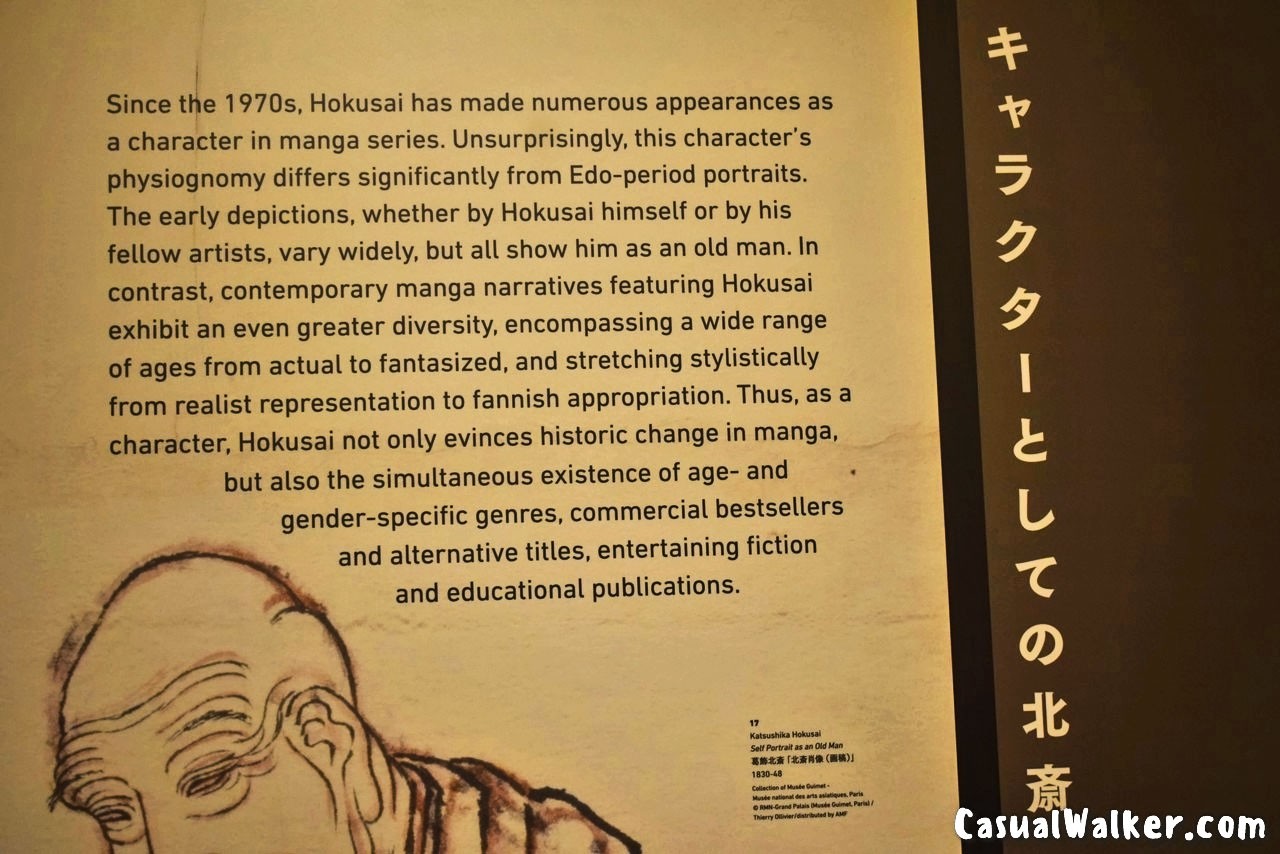
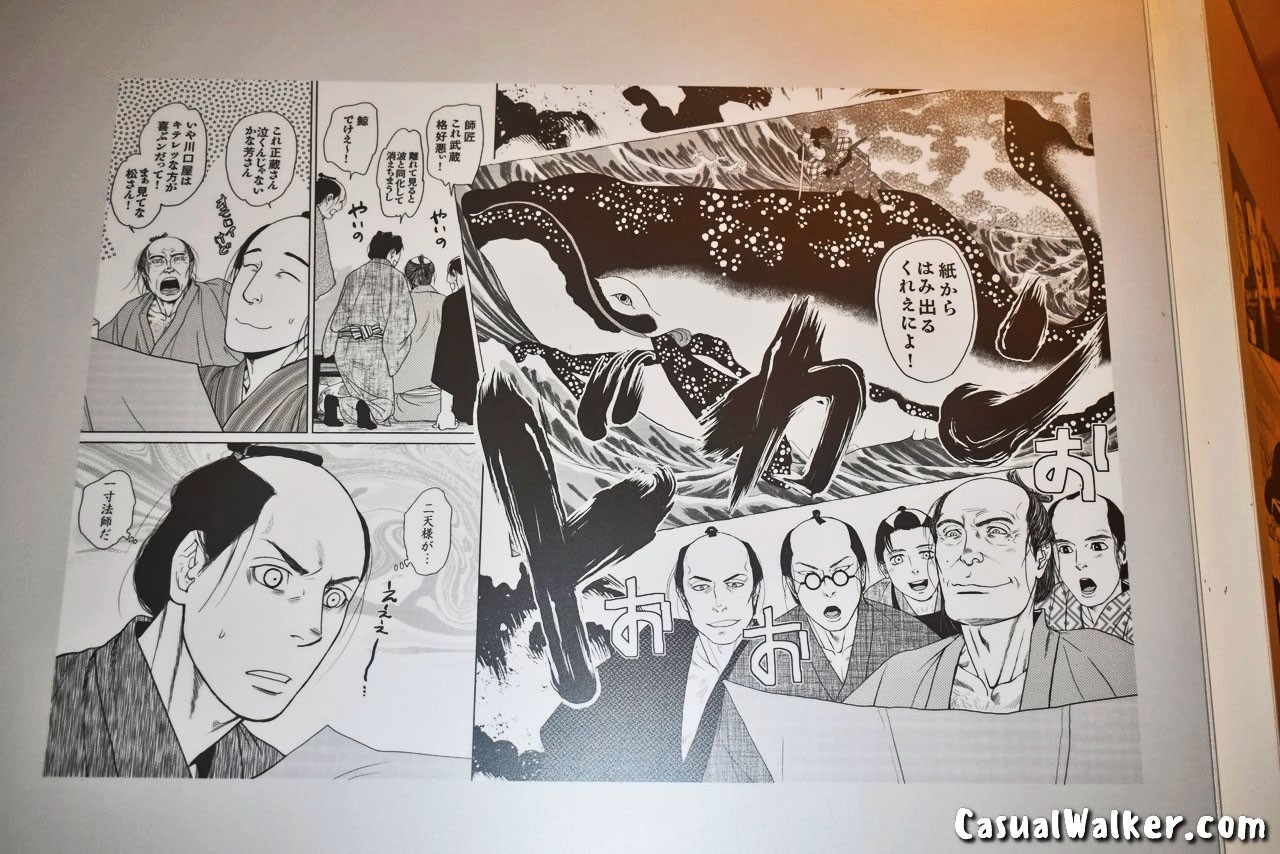
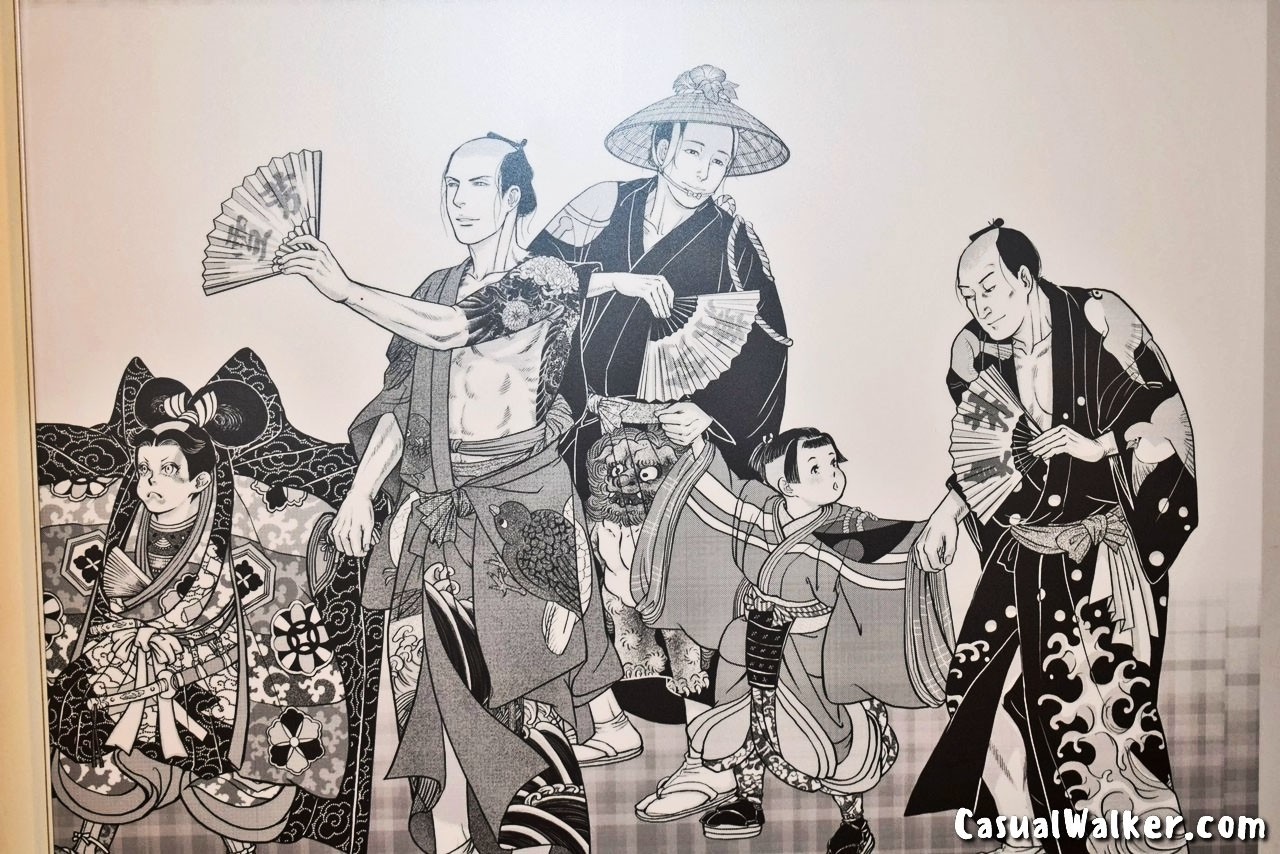
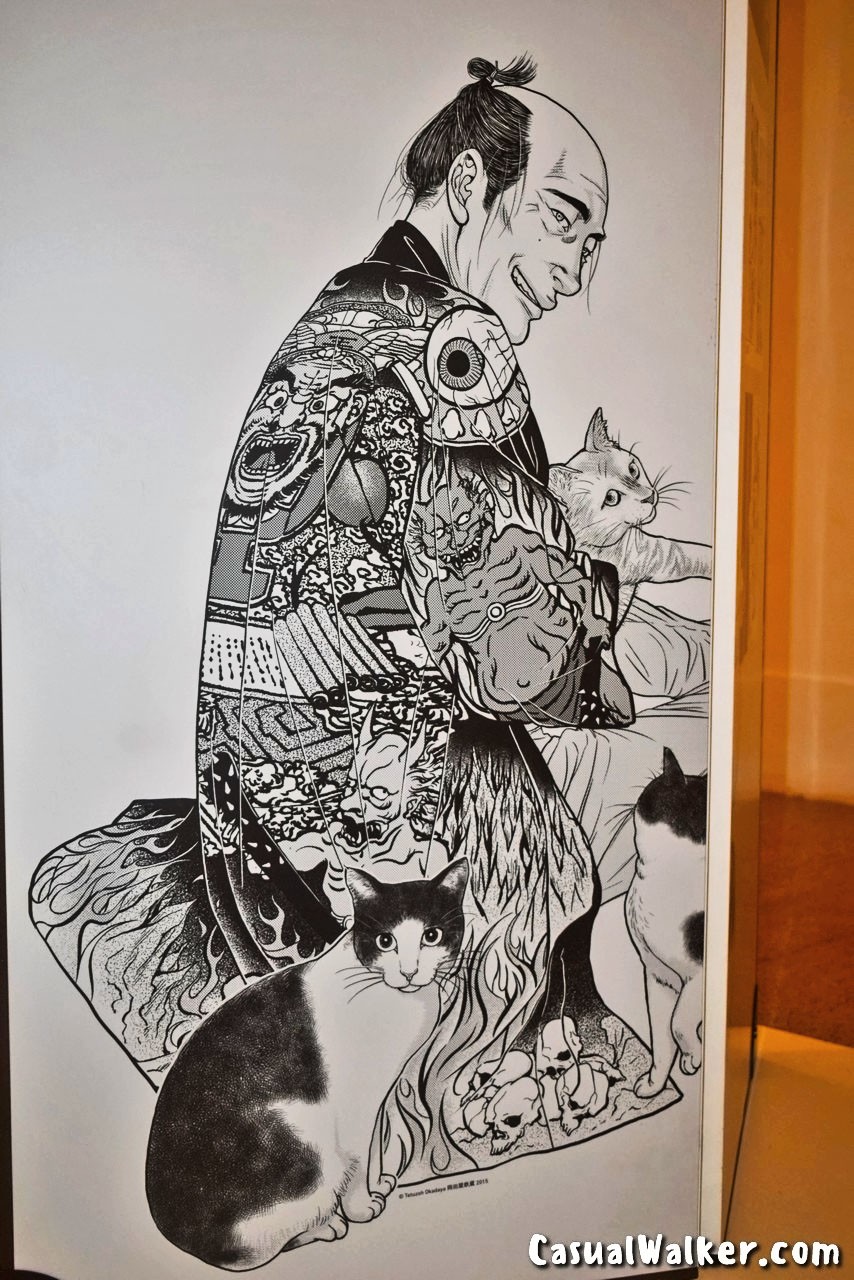
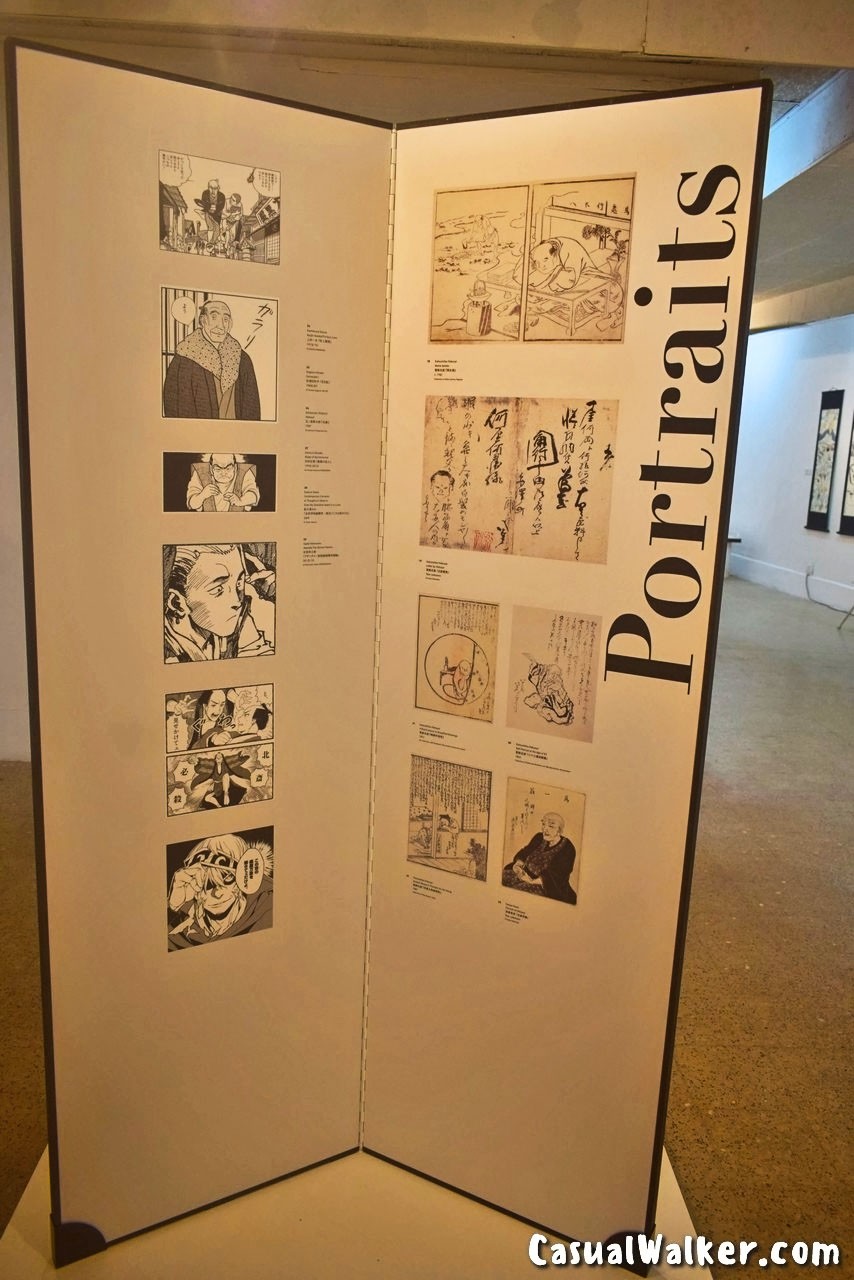
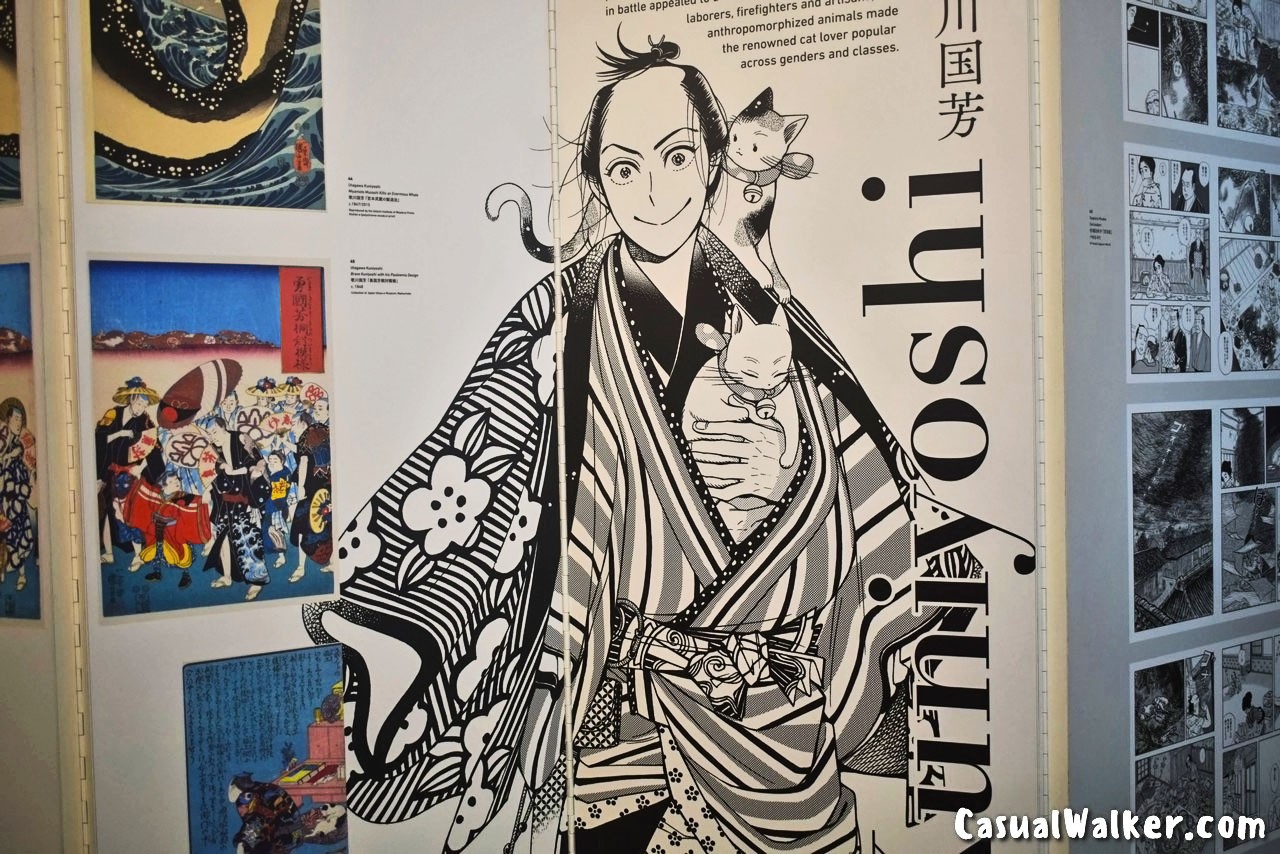
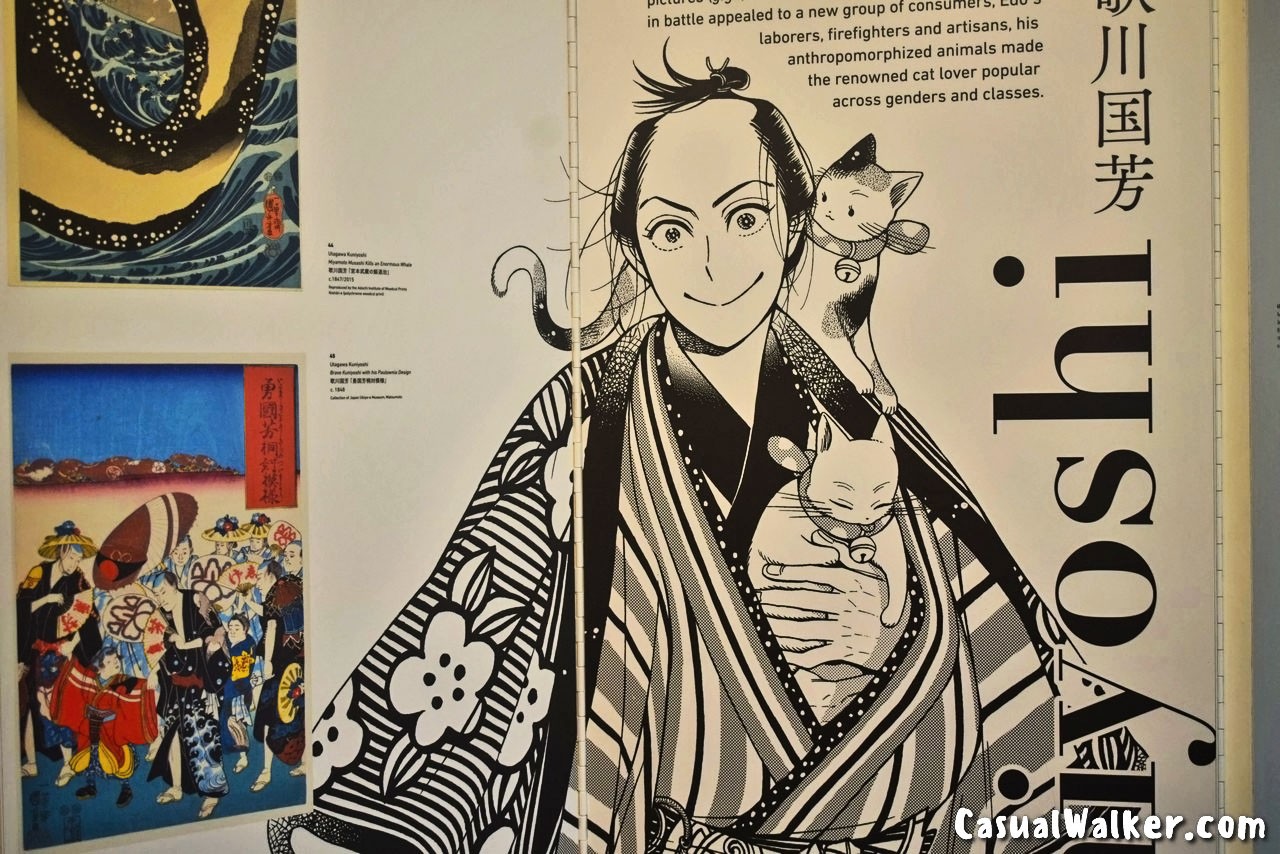
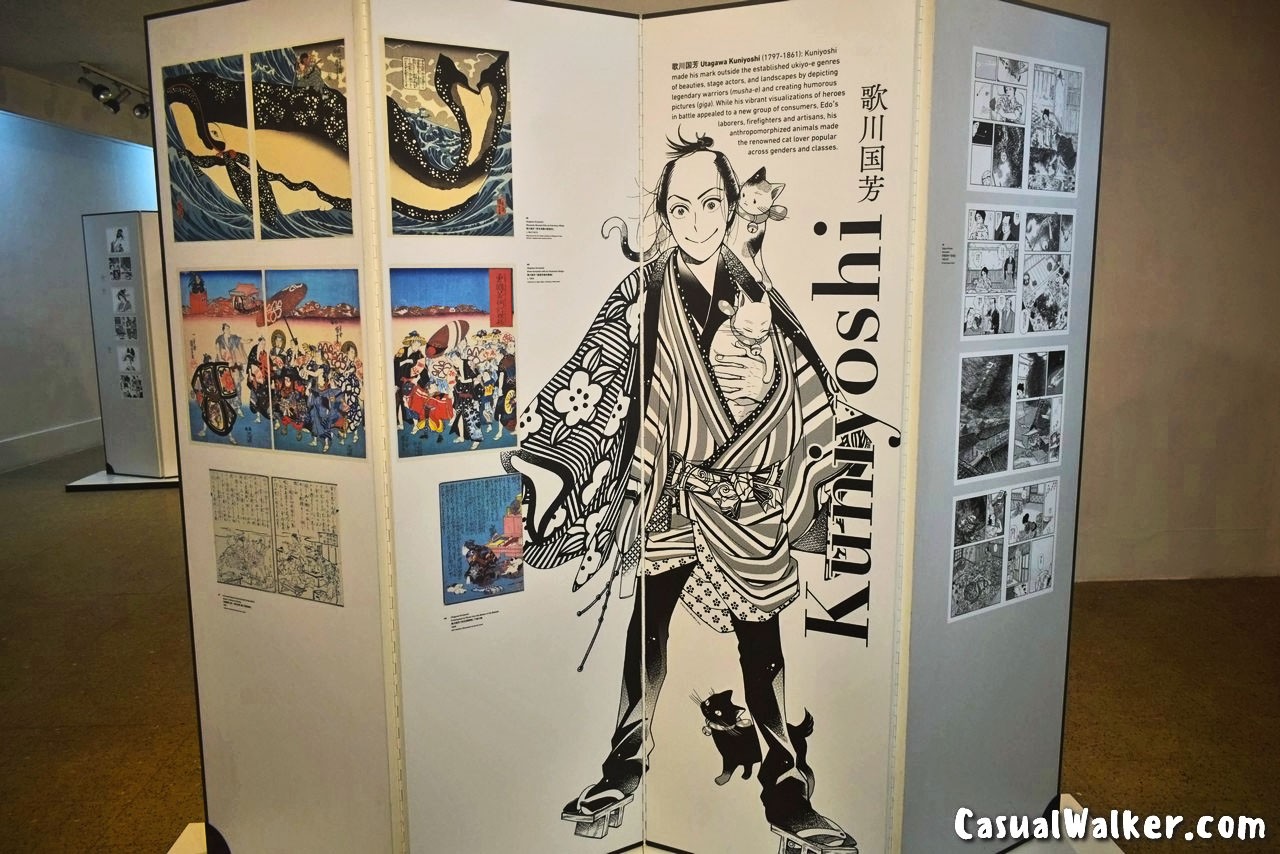
Utagawa Kuniyoshi (1797-1861)
Kuniyoshi made his mark outside the established ukiyo-e genres of beauties, stage actors, and landscapes by depicting legendary warriors (musha-e) and creating humorous pictures (giga). While his vibrant visualizations of heroes in battle appealed to a new group of consumers, Edo’s laborers, firefighters, and artisans, his anthropomorphized animals made the renowned cat lover popular across genders and classes.
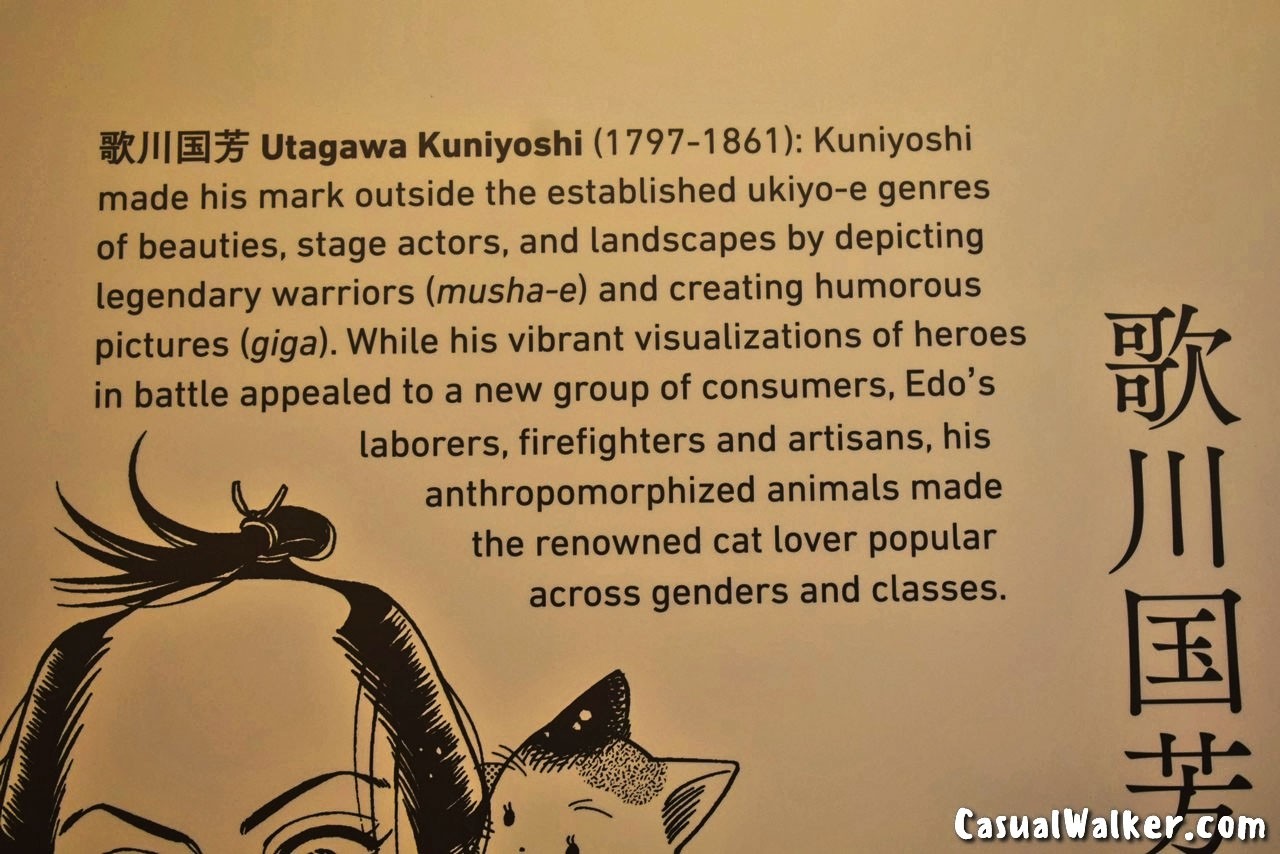
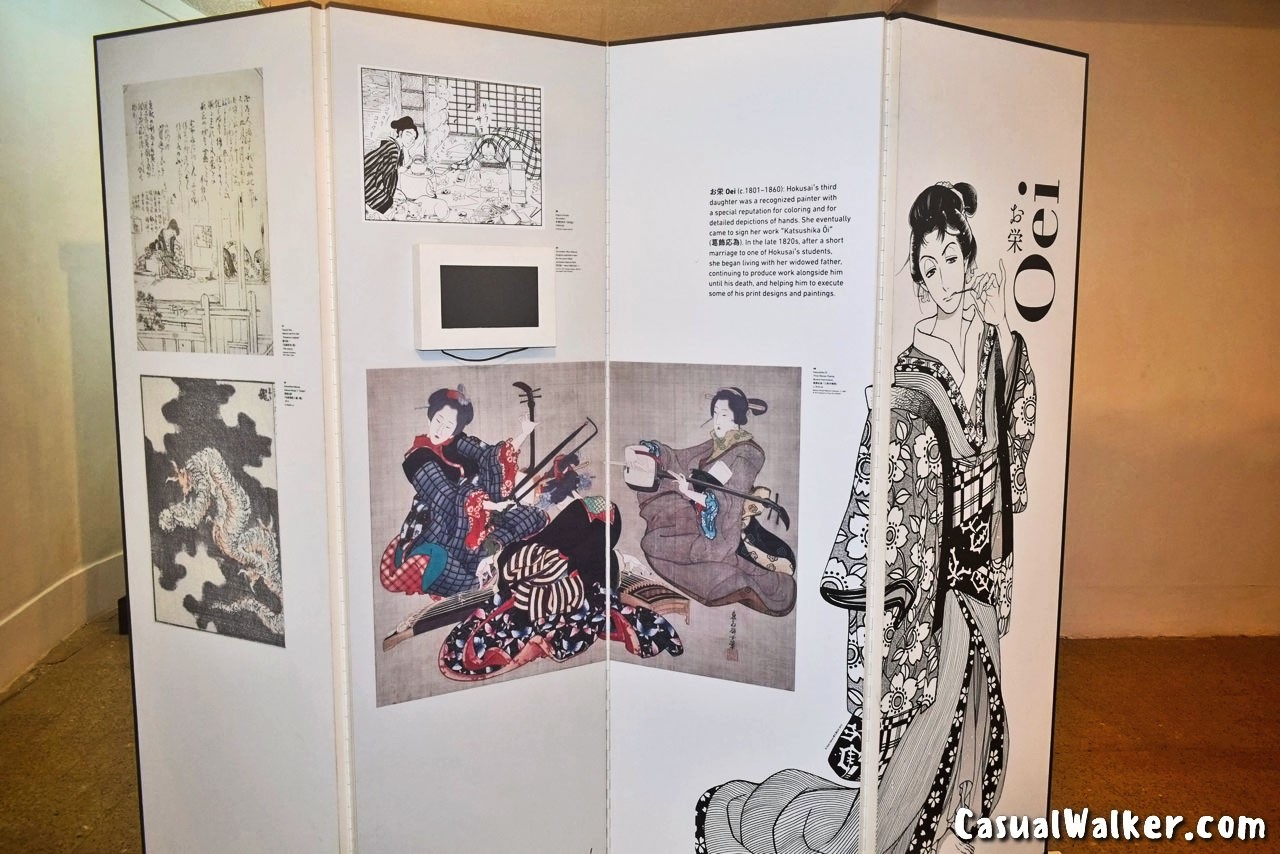
Oei (1801-1860)
Hokusai’s third daughter was a recognized painter with a special reputation for coloring and for detailed depictions of hands. She eventually came to sign her work “Katsushika Õi” (RM ). In the late 1820s, after a short marriage to one of Hokusai’s students, she began living with her widowed father, continuing to produce work alongside him until his death, and helping him to execute some of his print designs and paintings.
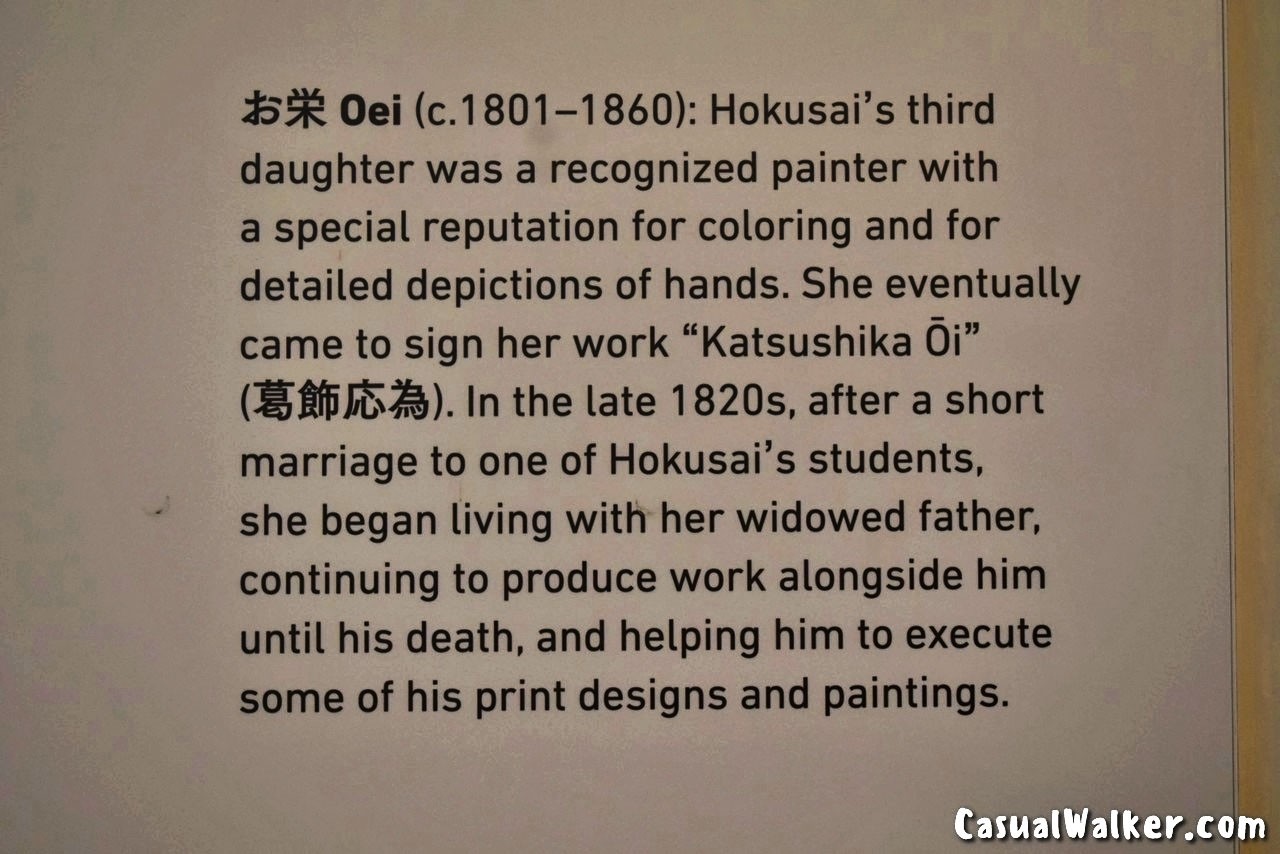
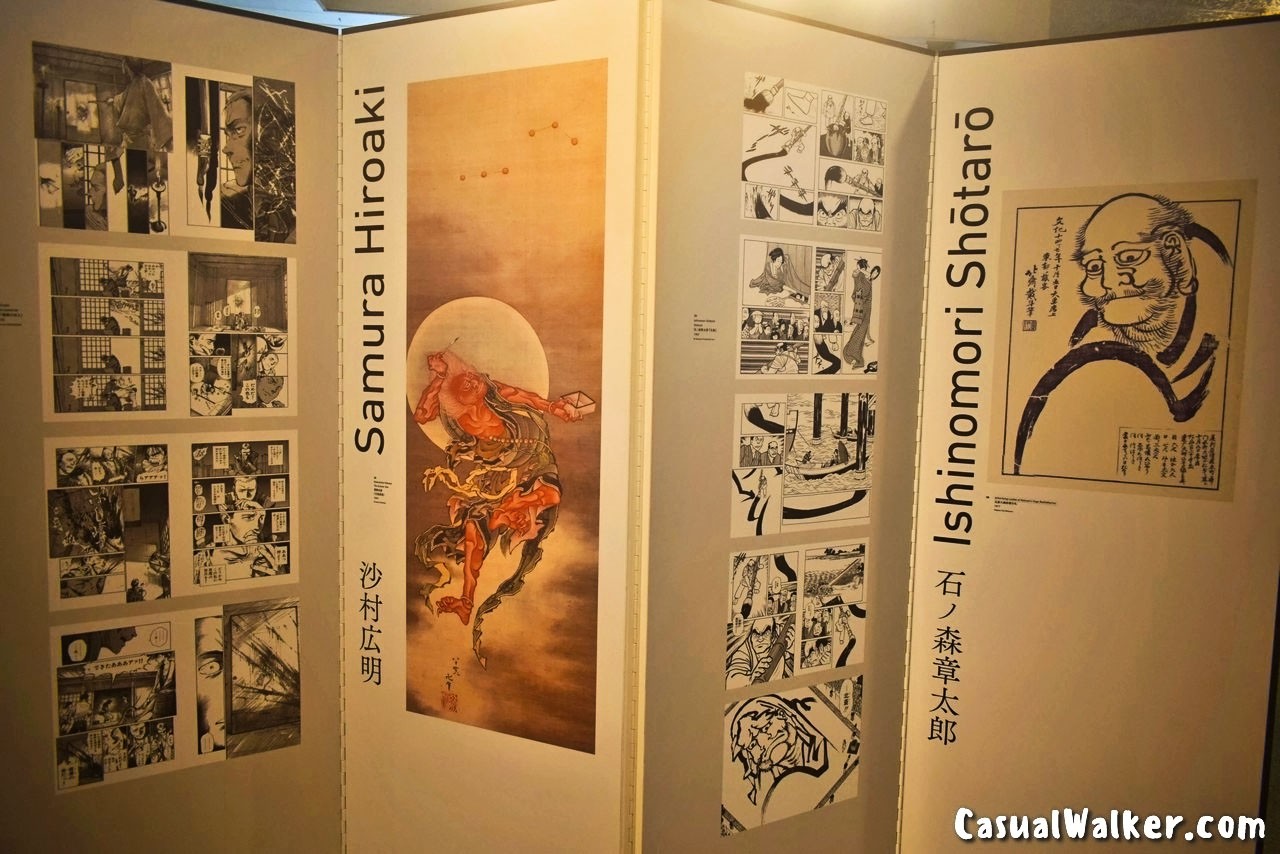
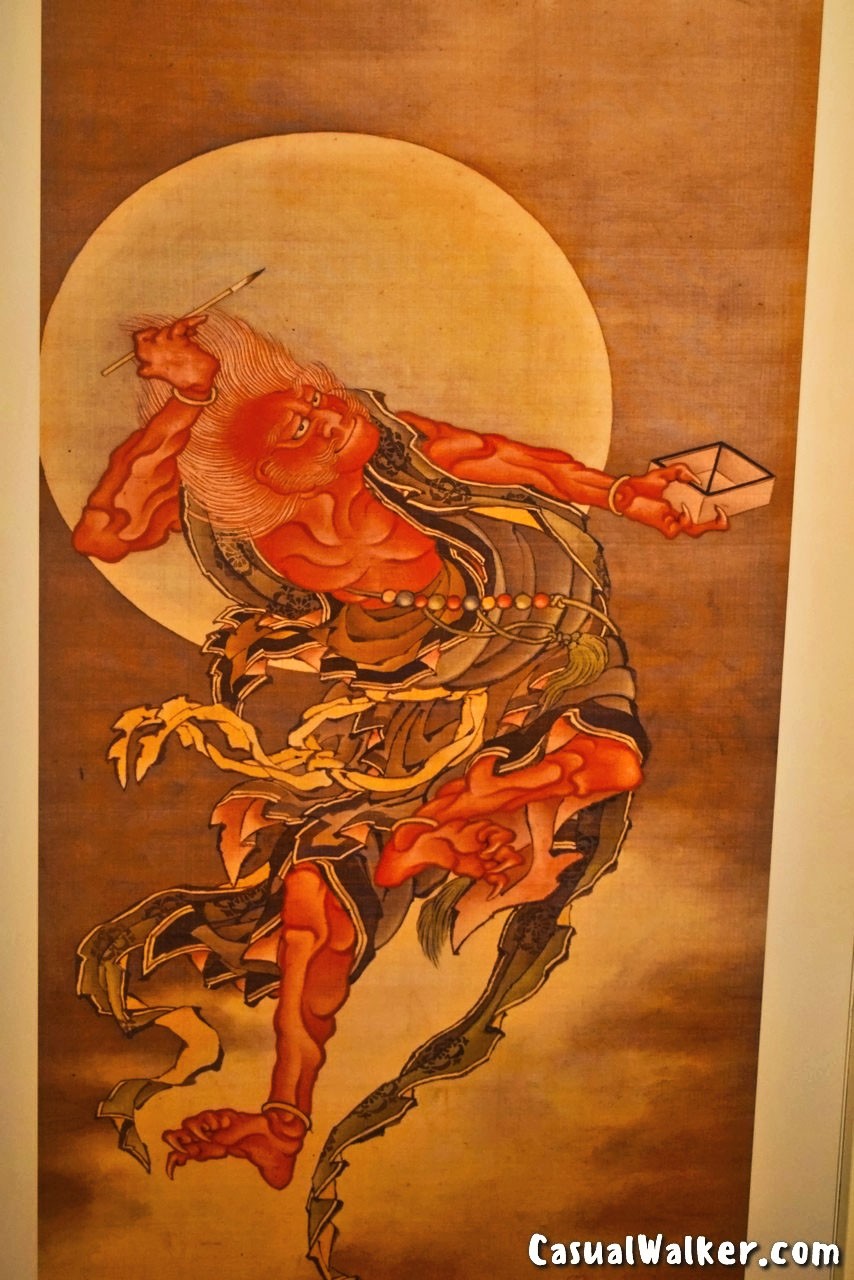
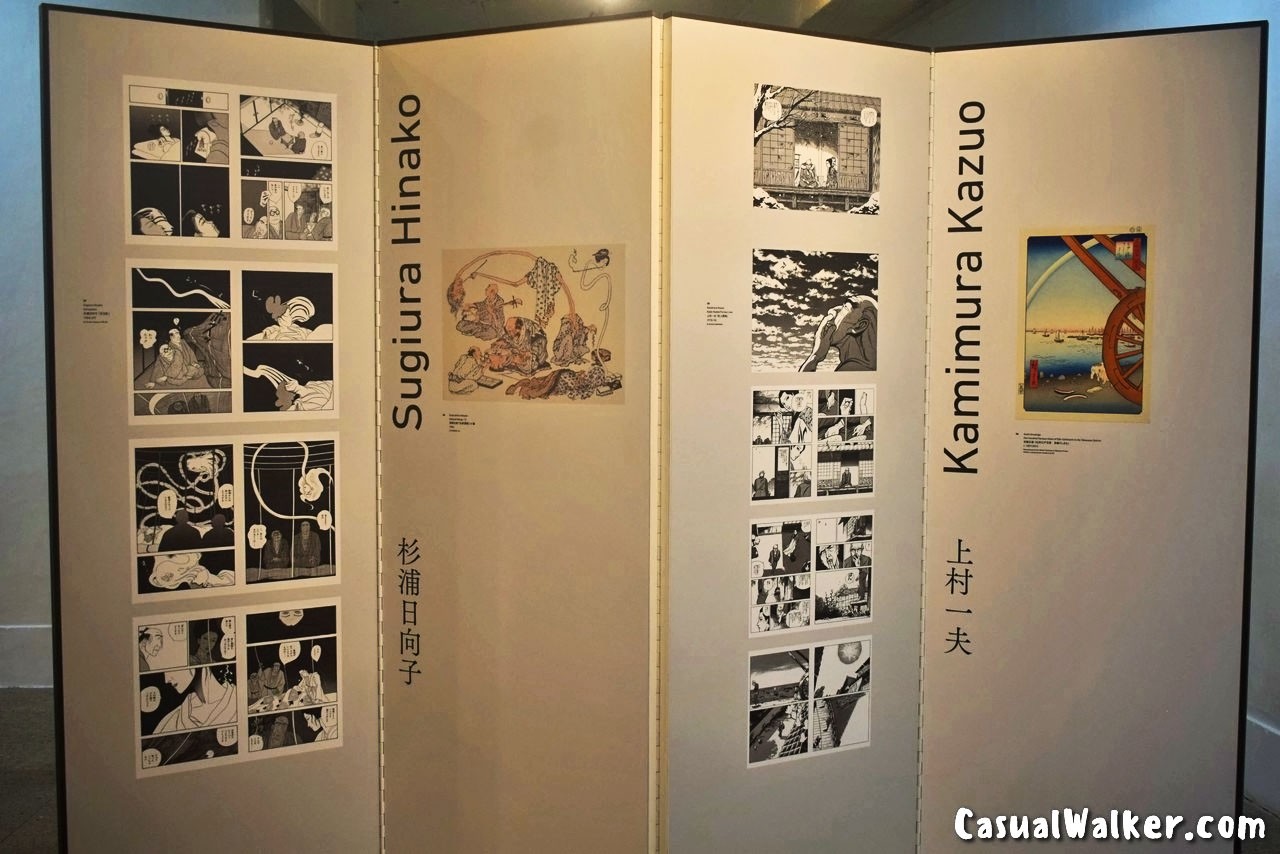
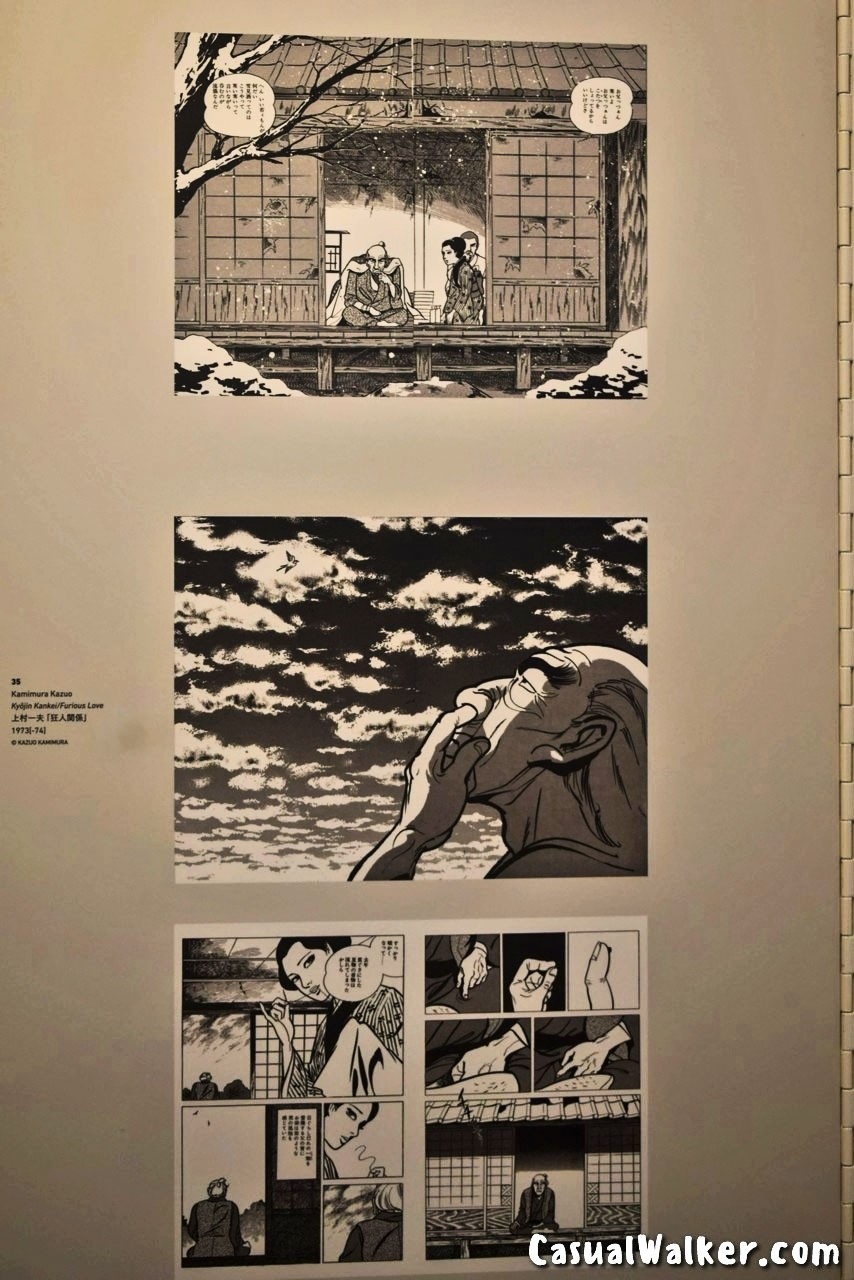
The third part showcased the ‘Manga Like Ukiyo-e, Ukiyo-e Like Manga’
It explores manga visualization and communication methods like the usage of symbolic lines and balloons.
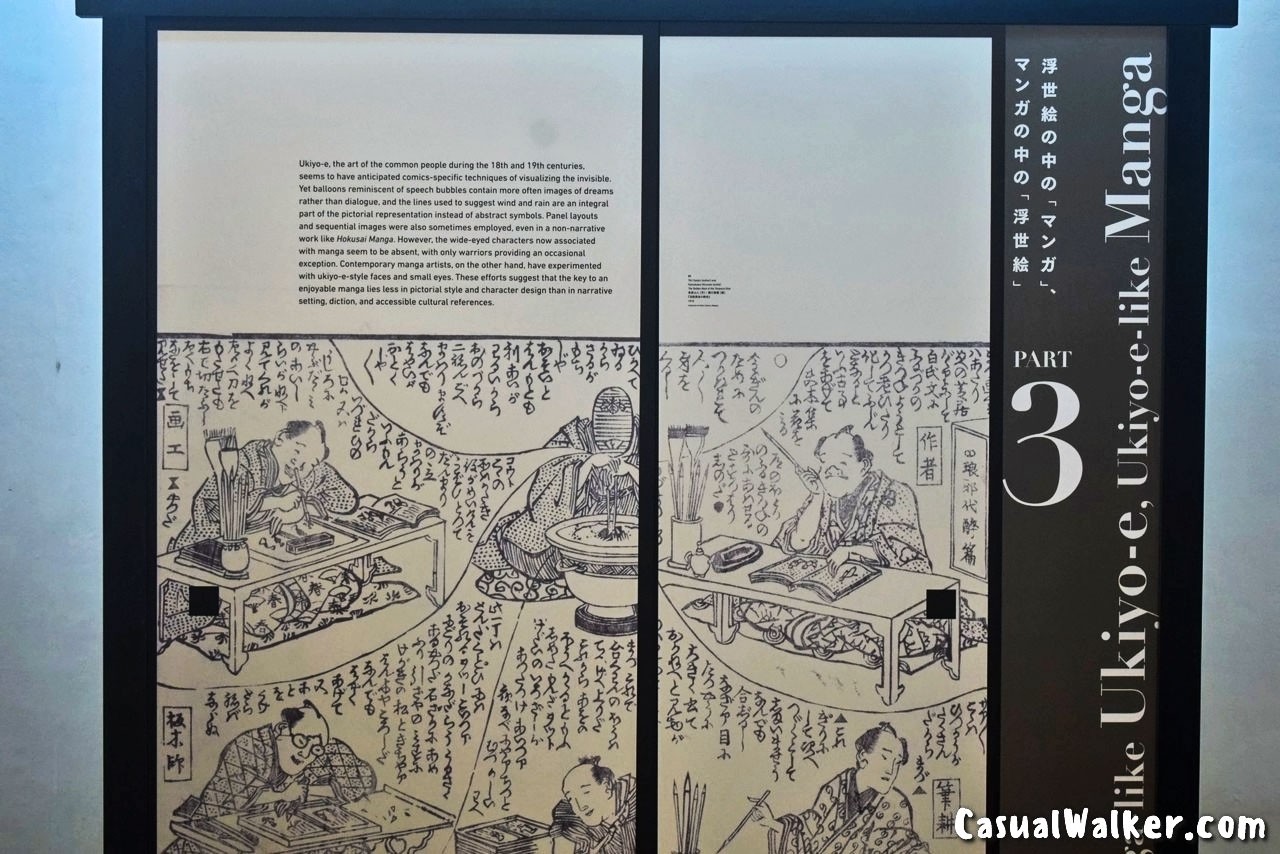
Ukiyo-e
Ukiyo-e, the art of the common people during the 18th and 19th centuries, seems to have anticipated comics-specific techniques of visualizing the invisible. Yet balloons reminiscent of speech bubbles contain more often images of dreams rather than dialogue, and the lines used to suggest wind and rain are an integral part of the pictorial representation instead of abstract symbols. Panel layouts and sequential images were also sometimes employed, even in a non-narrative work like Hokusai Manga.
However, the wide-eyed characters now associated with manga seem to be absent, with only warriors providing an occasional exception. Contemporary manga artists, on the other hand, have experimented with ukiyo-e-style faces and small eyes. These efforts suggest that the key to an enjoyable manga lies less in pictorial style and character design than in narrative setting, diction, and accessible cultural references.
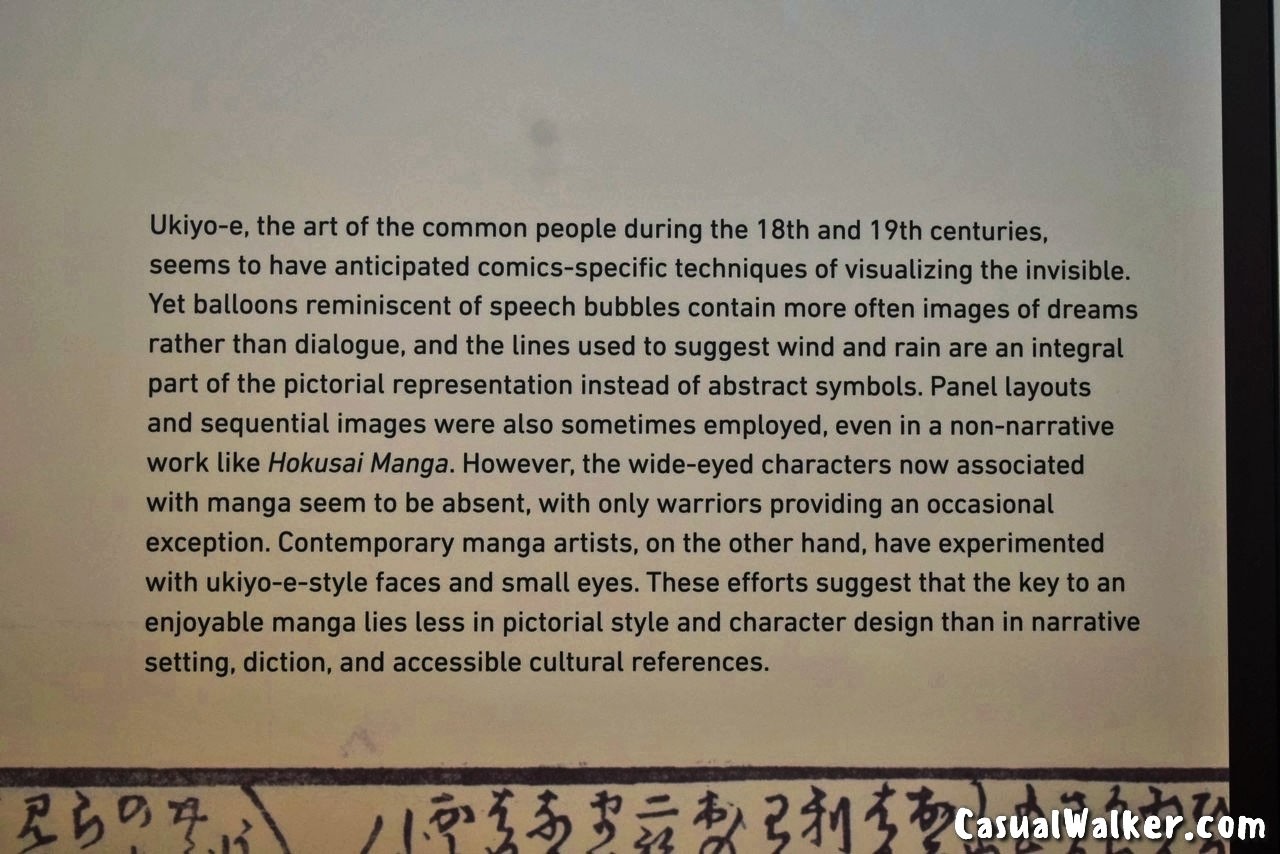
Sequences
In the late Edo period, the device of breaking down a picture plane or page into smaller frames was not unknown. Yet, it was not put to much narrative use by ukiyo-e artists due to its roots in mainly religious instruction. This is also the case for the Hokusai Manga. Only a few of its pages that resemble modern panel layouts present temporal or narrative sequences.
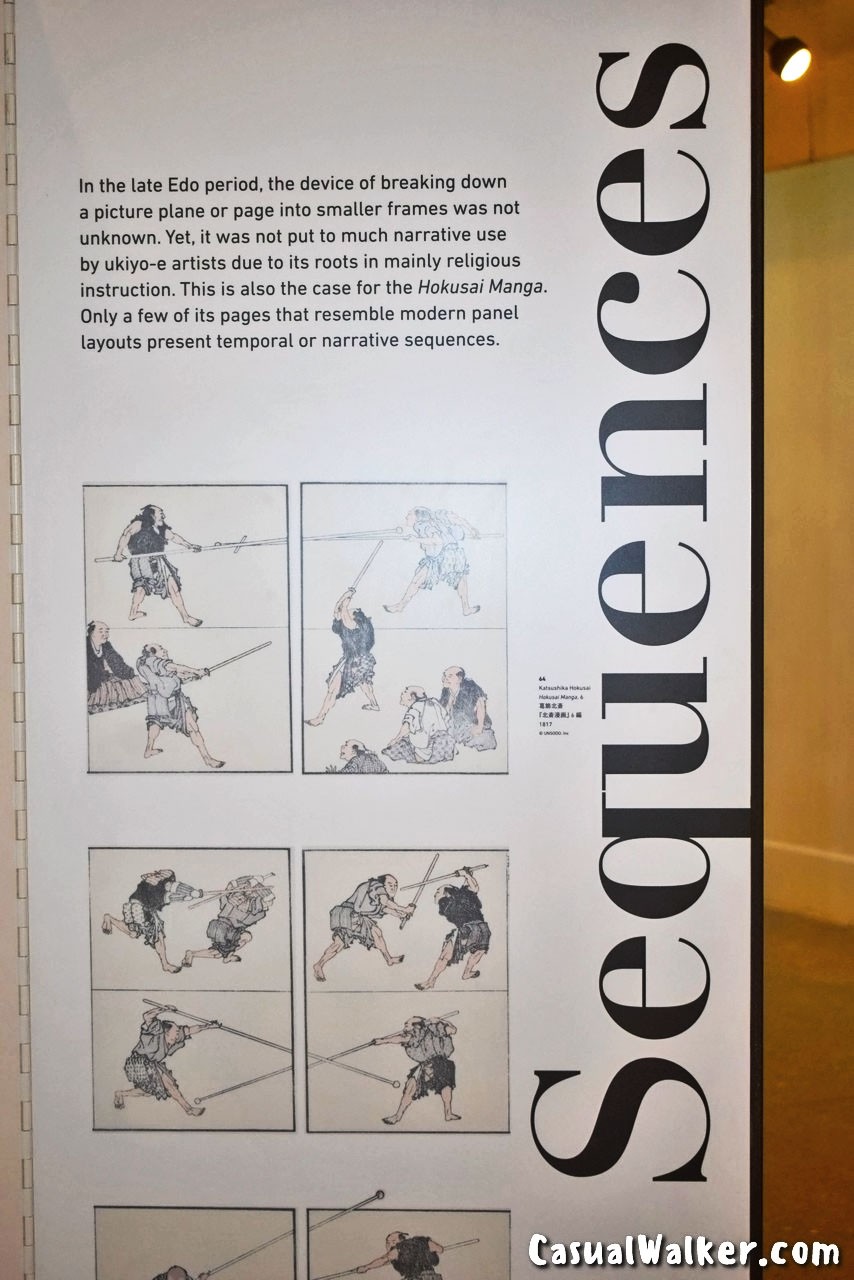
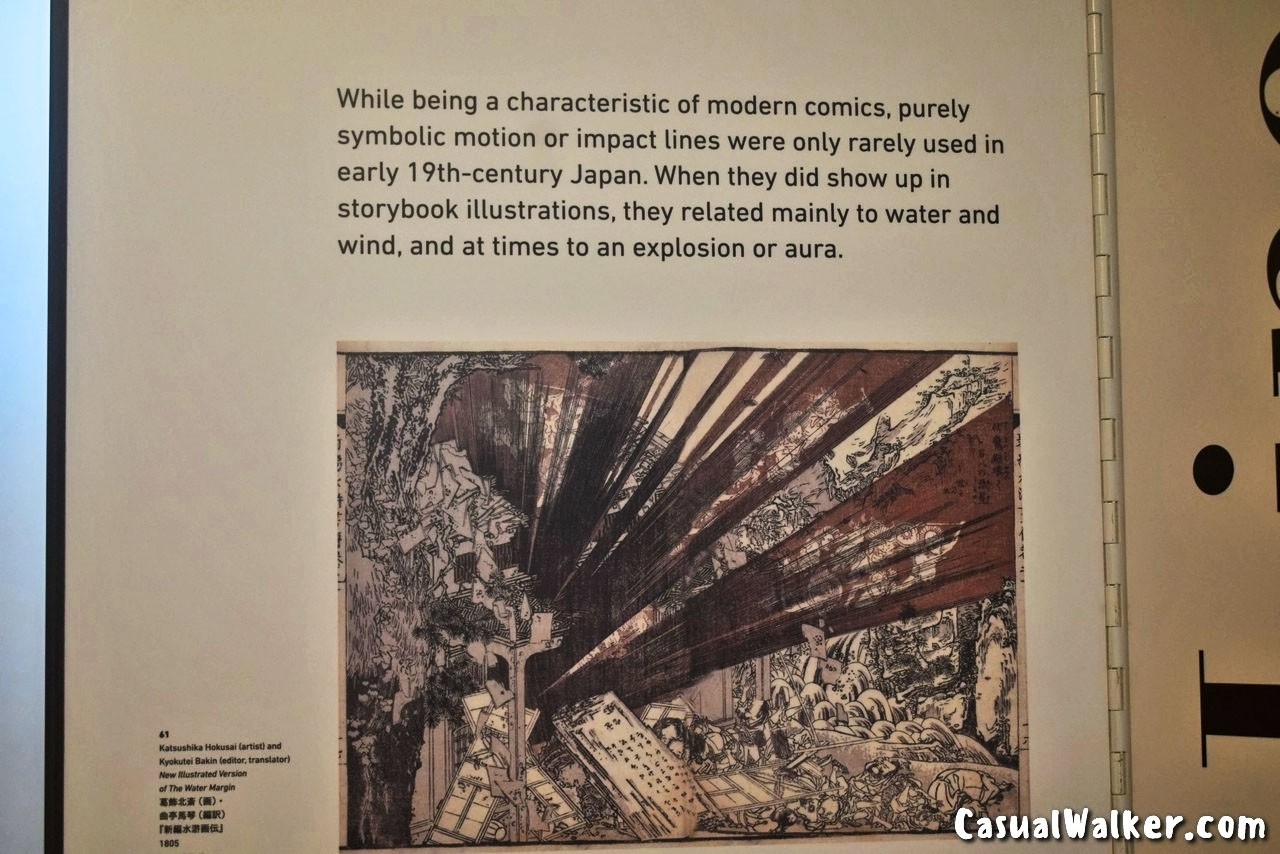
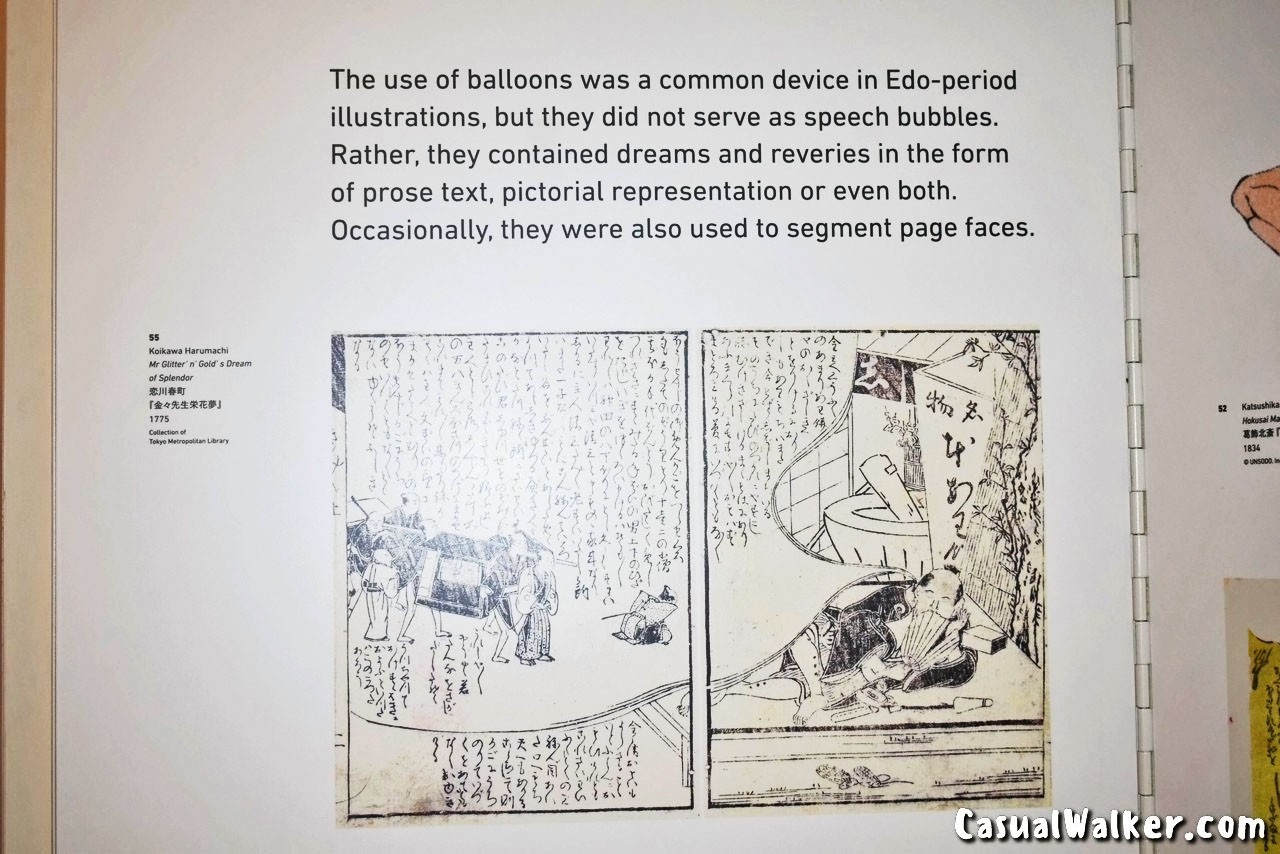
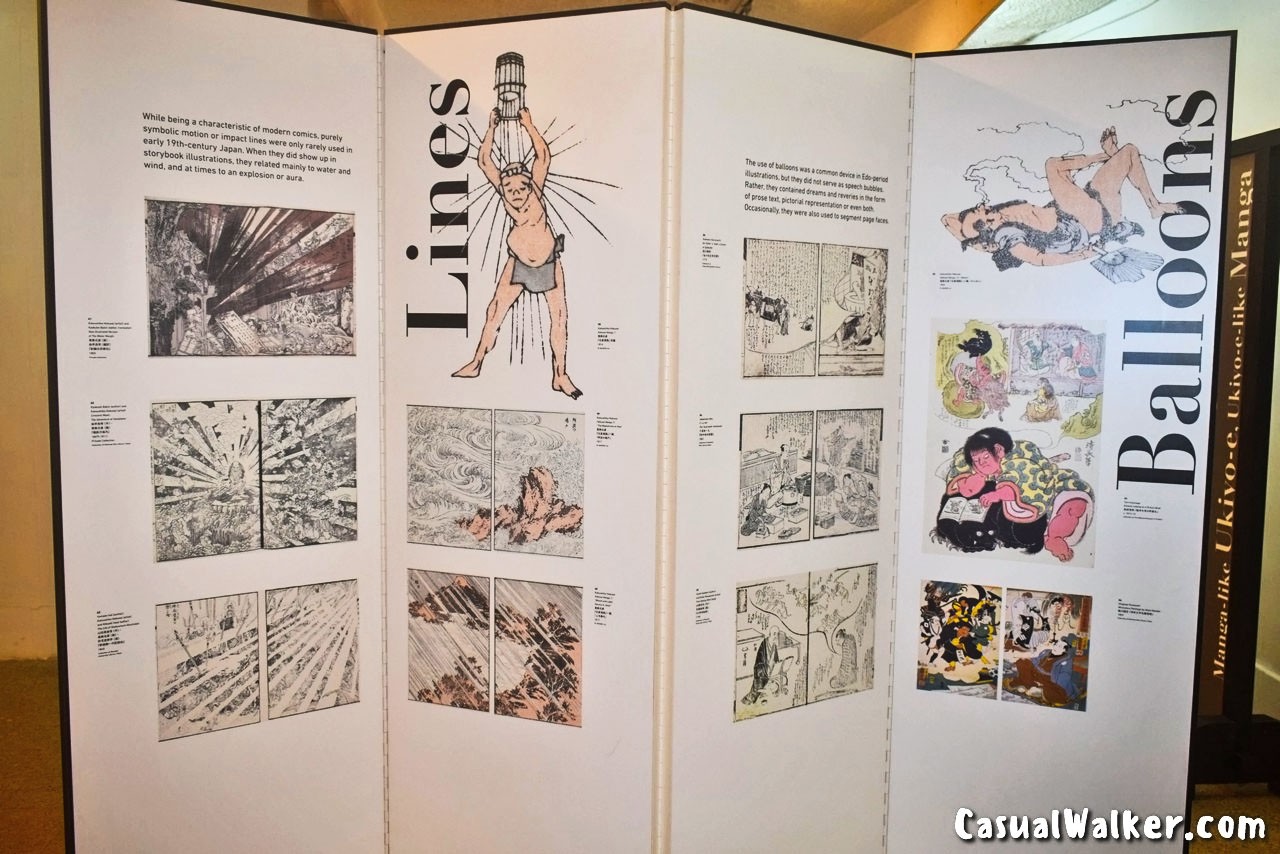
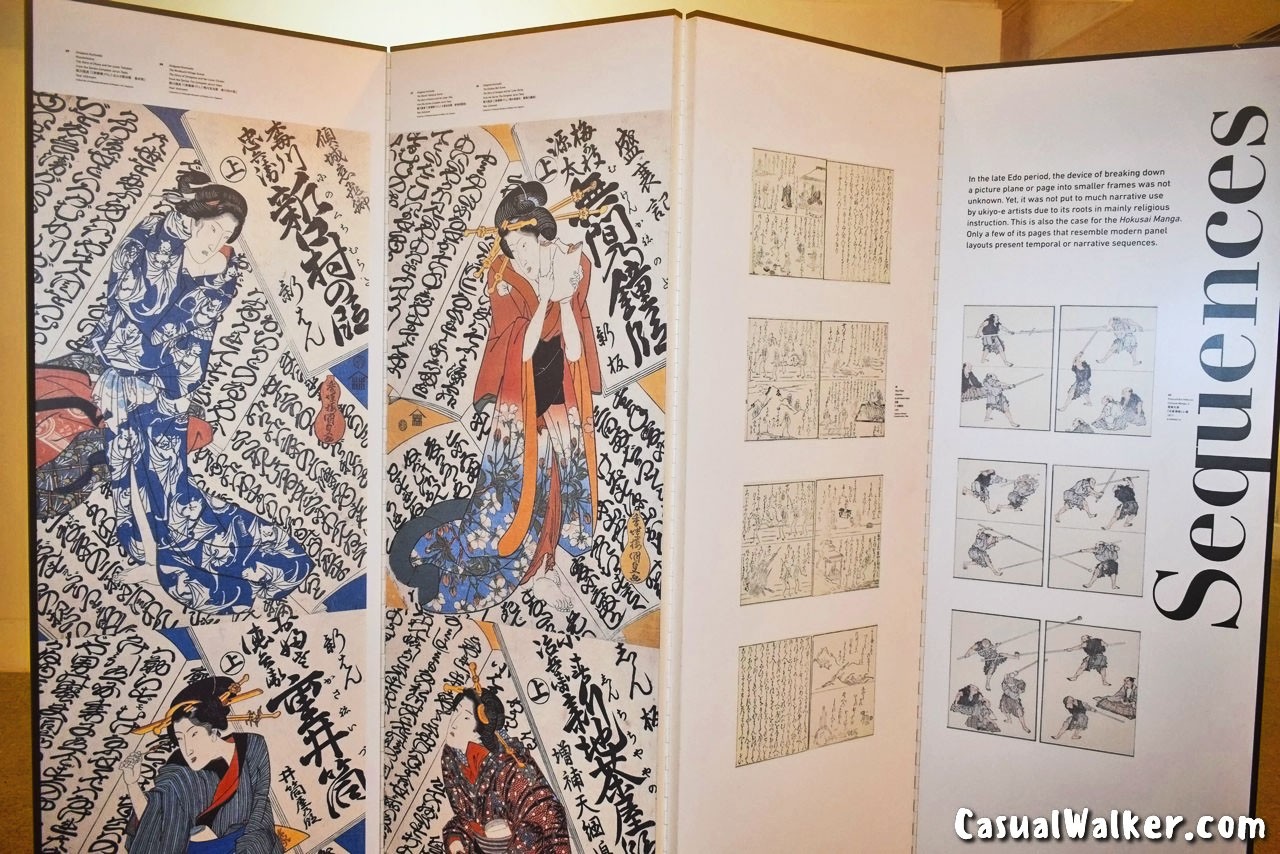
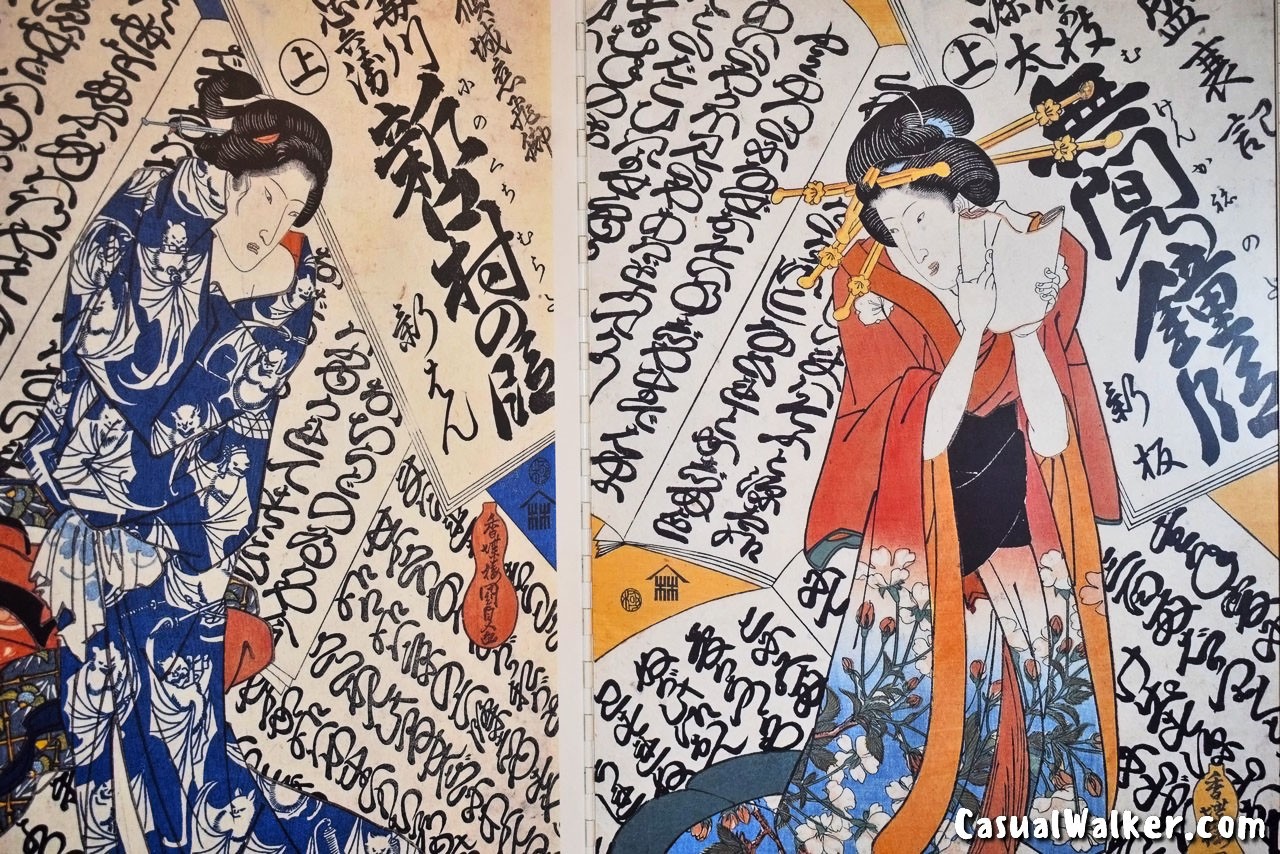
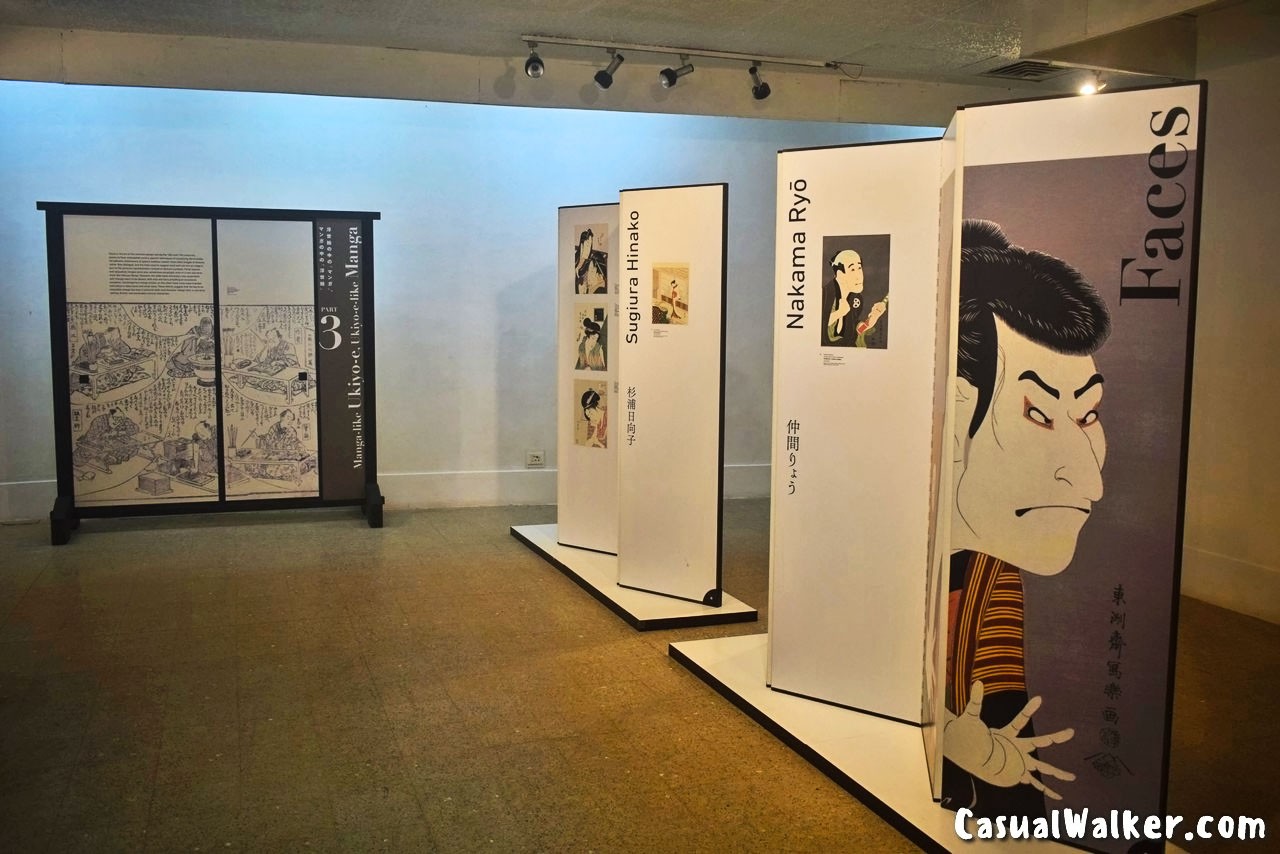
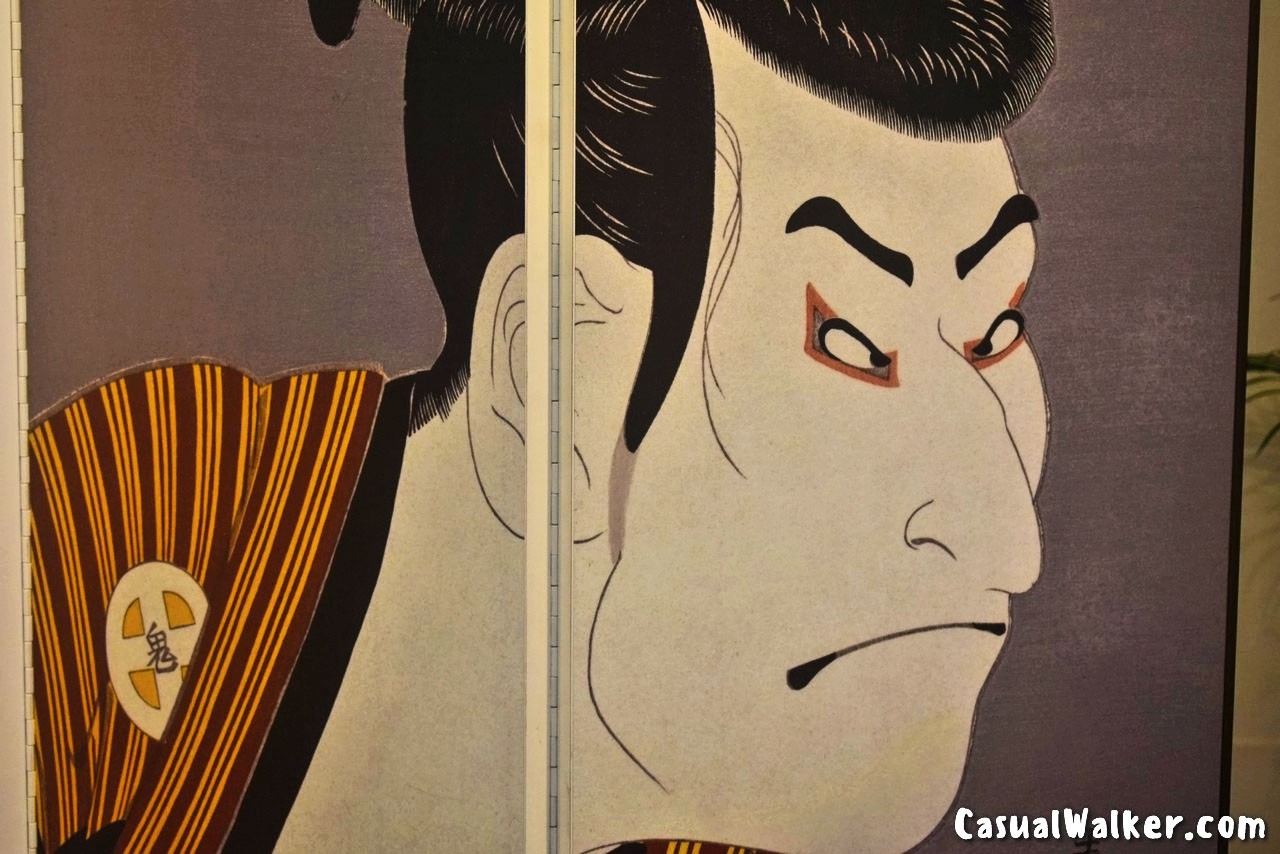
The final fourth category showcased the ‘Hokusai Manga: Shared Manual!’
It displayed the fun side of Hokusai’s manga.
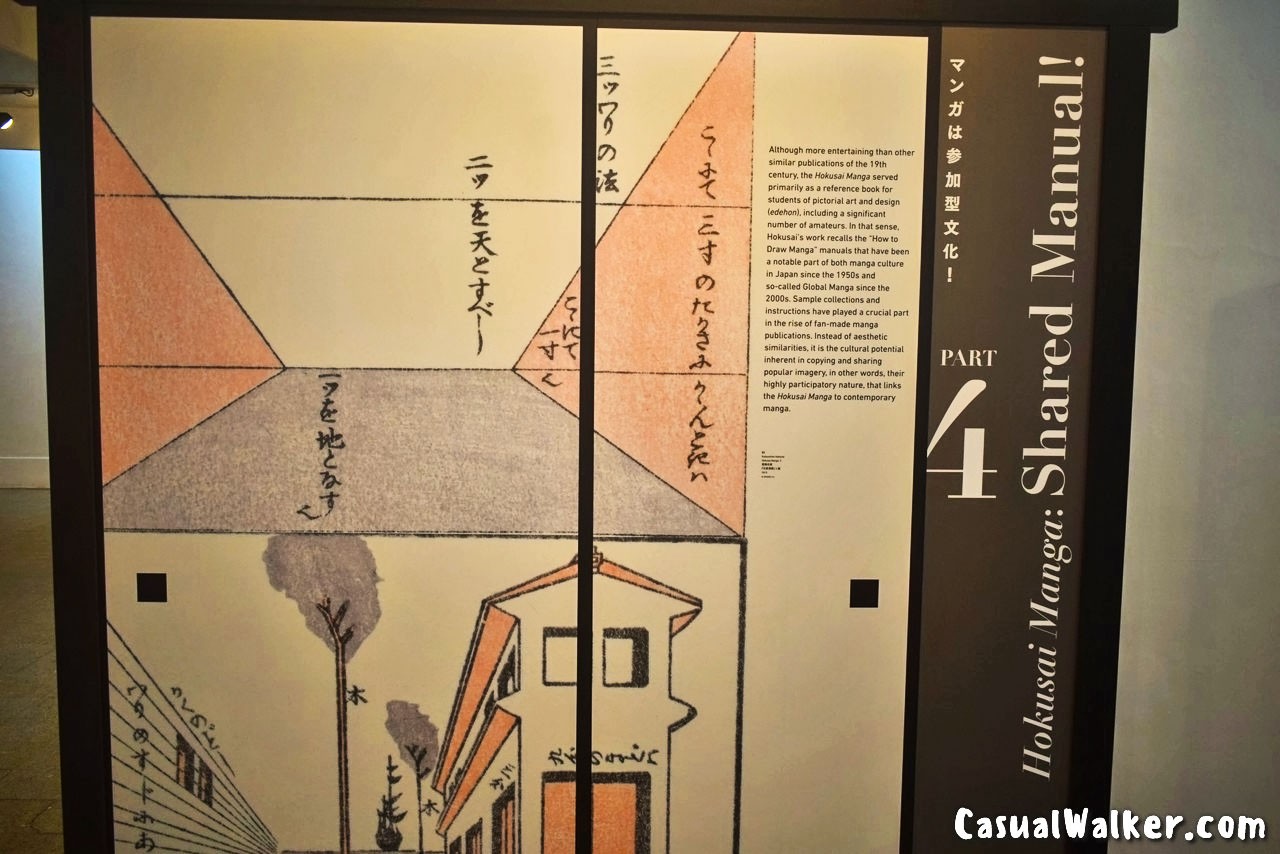
Although more entertaining than other similar publications of the 19th century, the Hokusai Manga served primarily as a reference book for students of pictorial art and design (edehon), including a significant number of amateurs. In that sense, Hokusai’s work recalls the “How to Draw Manga” manuals that have been a notable part of both manga culture in Japan since the 1950s and so-called Global Manga since the 2000s.
Sample collections and instructions have played a crucial part in the rise of fan-made manga publications. Instead of aesthetic similarities, it is the cultural potential inherent in copying and sharing popular imagery, in other words, their highly participatory nature, that links the Hokusai Manga to contemporary manga.
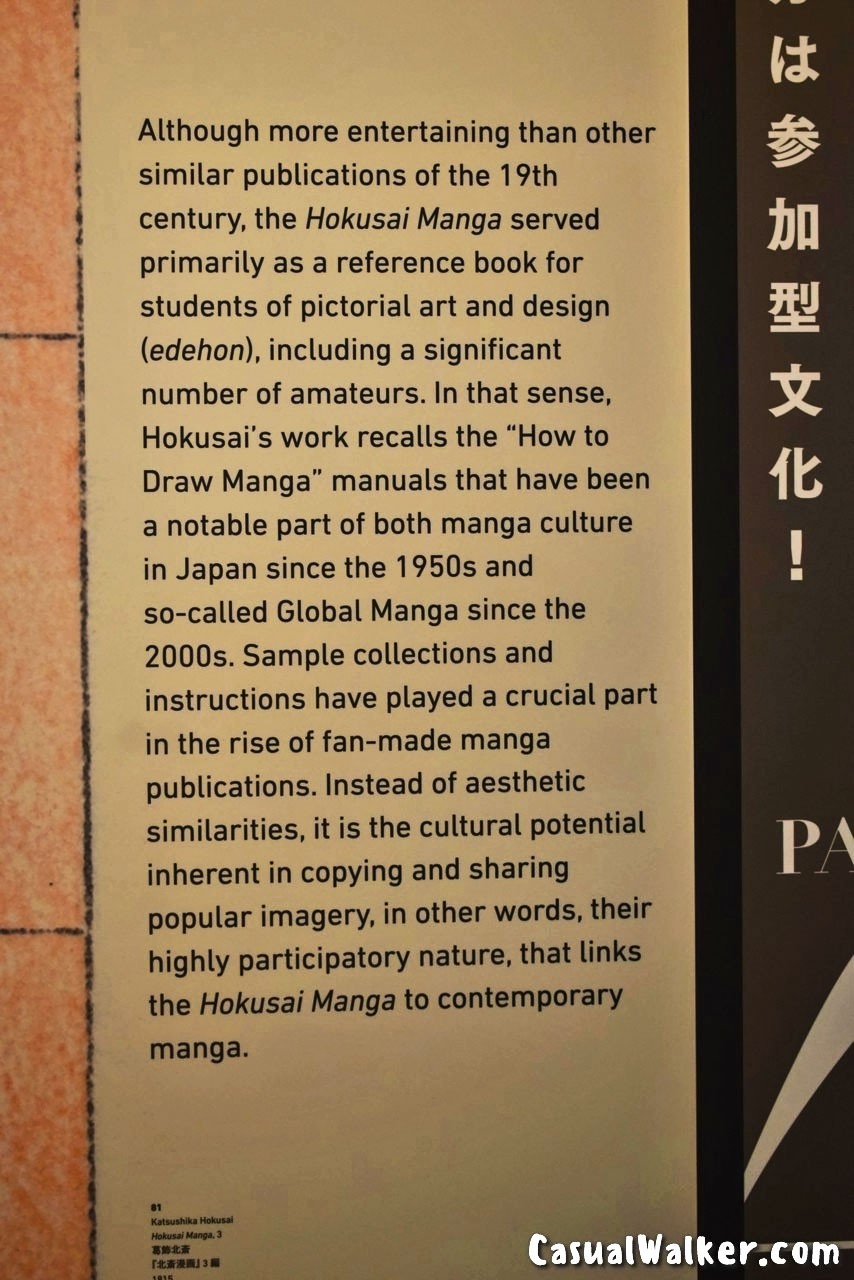
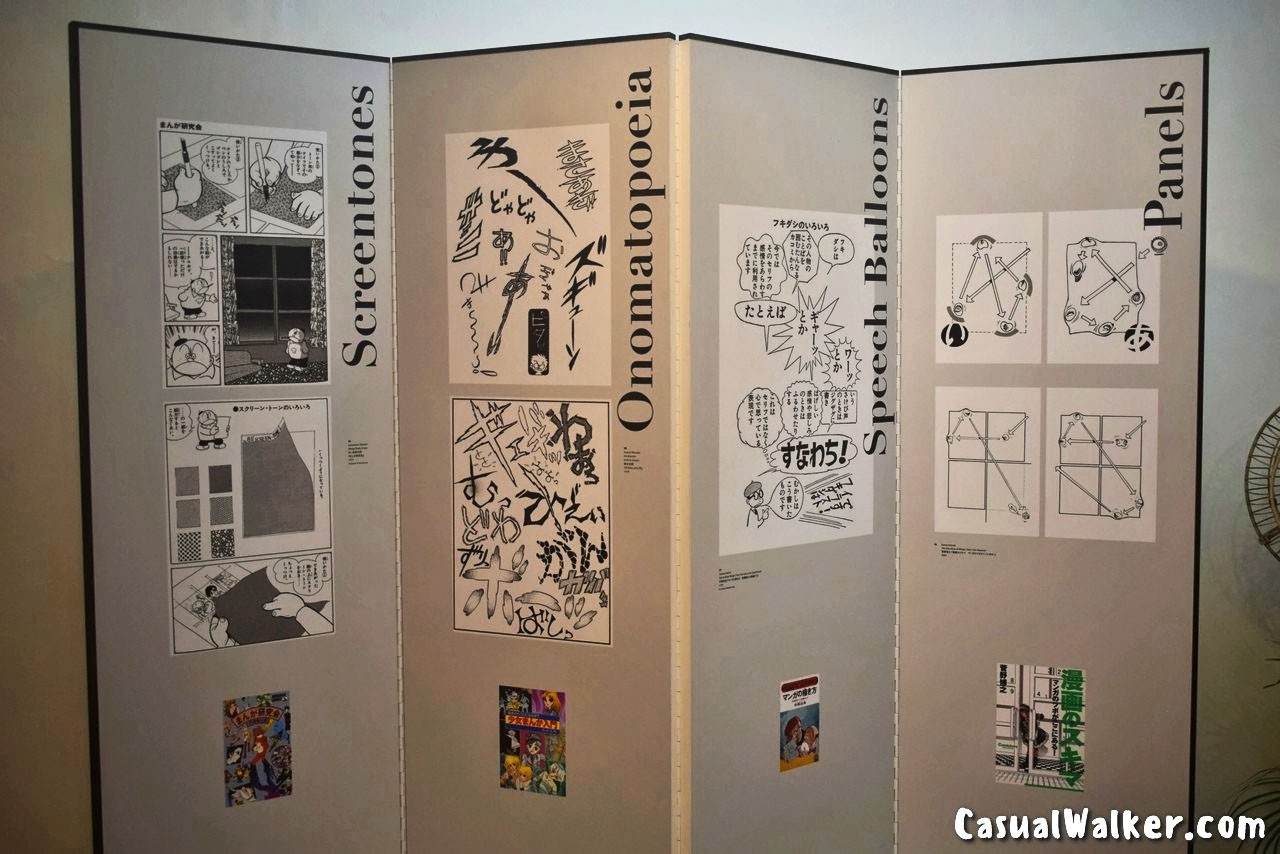
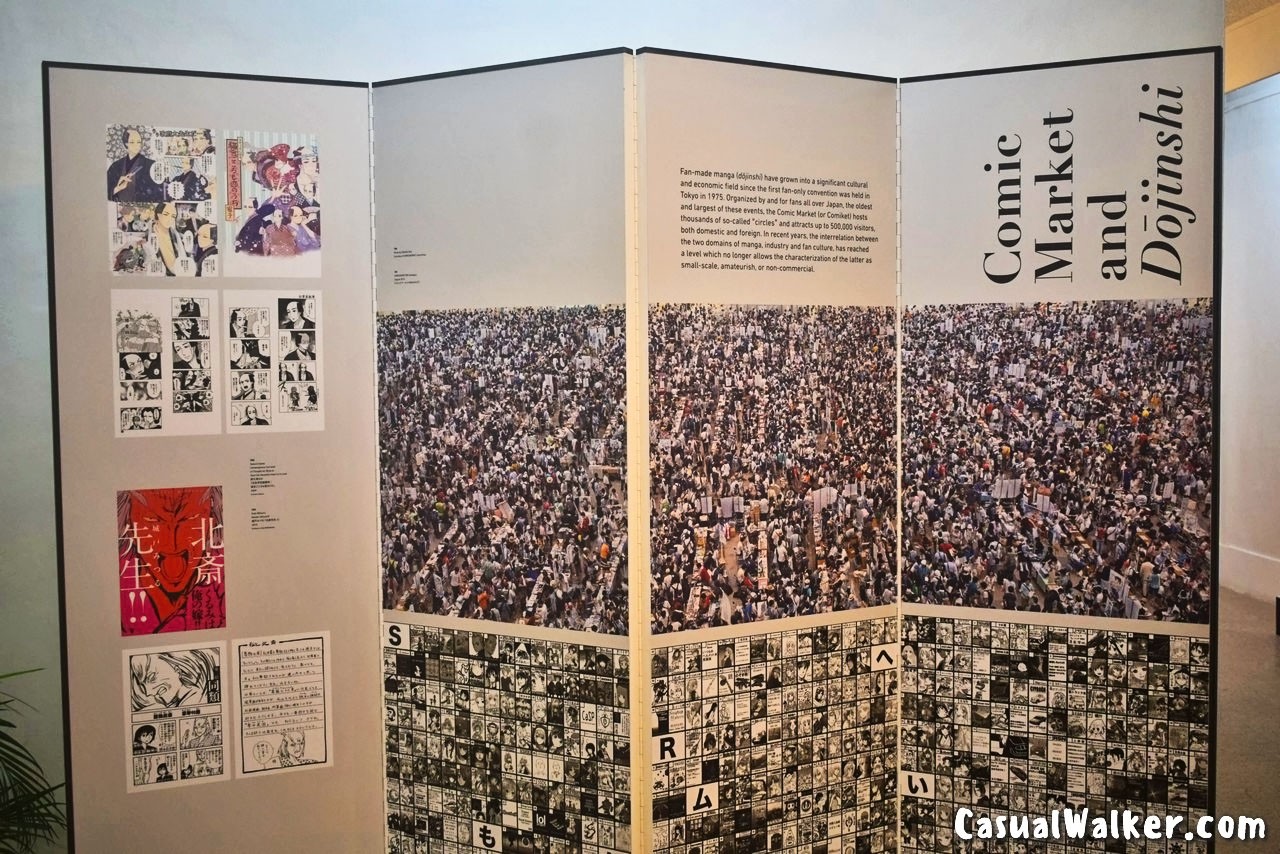
Fan-made manga (dõjinshi)
Fan-made manga (dõjinshi) has grown into a significant cultural and economic field since the first fan-only convention was held in Tokyo in 1975. Organized by and for fans all over Japan, the oldest and largest of these events, the Comic Market (or Comiket) hosts thousands of so-called “circles” and attracts up to 500,000 visitors, both domestic and foreign.
In recent years, the interrelation between the two domains of manga, industry and fan culture, has reached a level that no longer allows the characterization of the latter as small-scale, amateurish, or non-commercial.
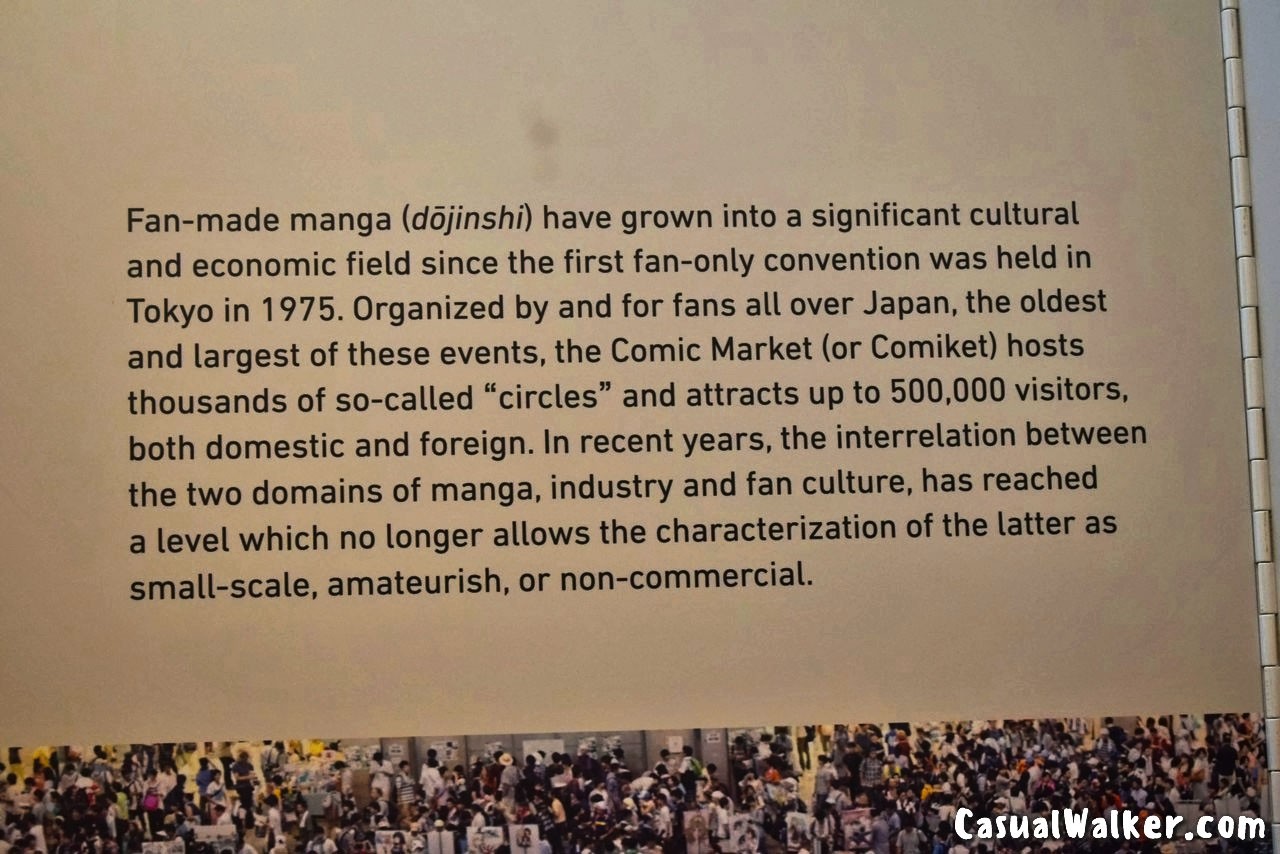
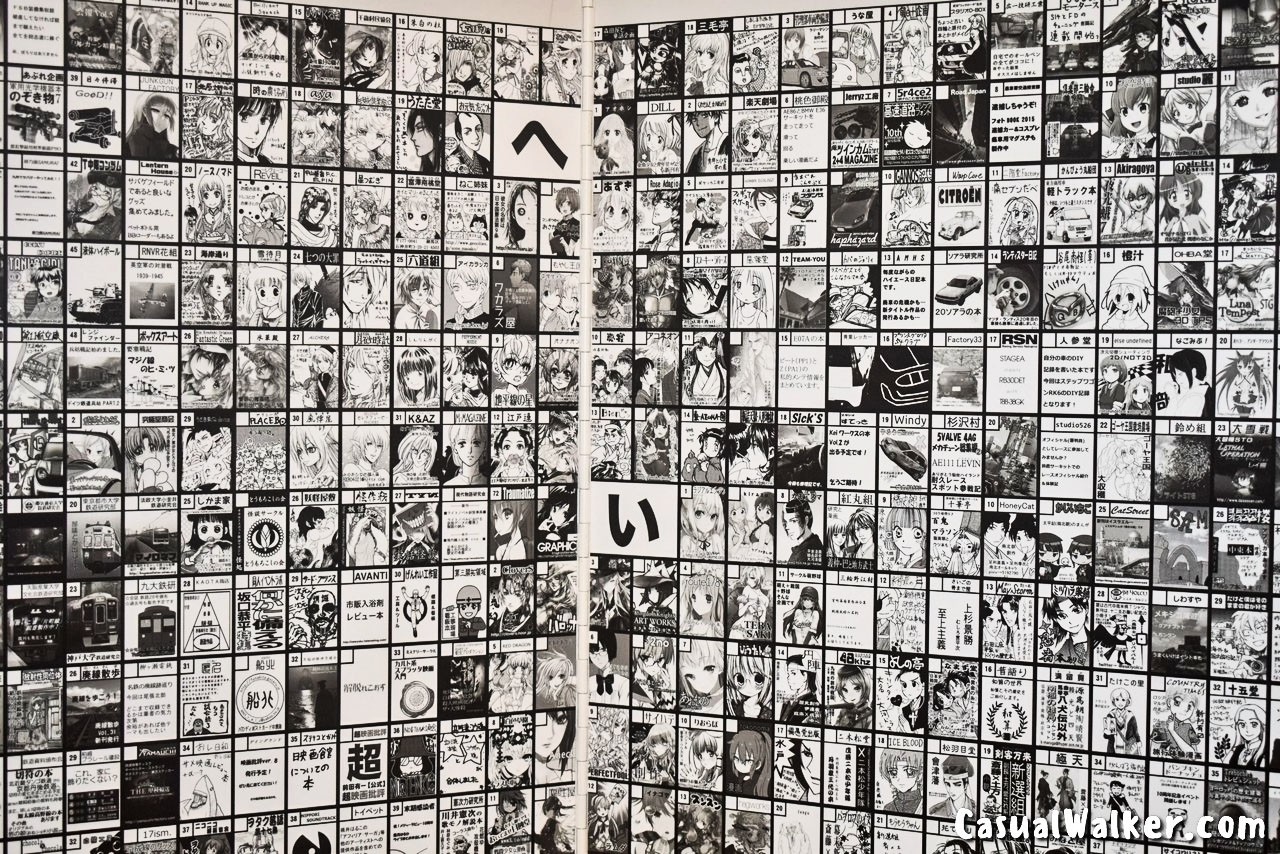
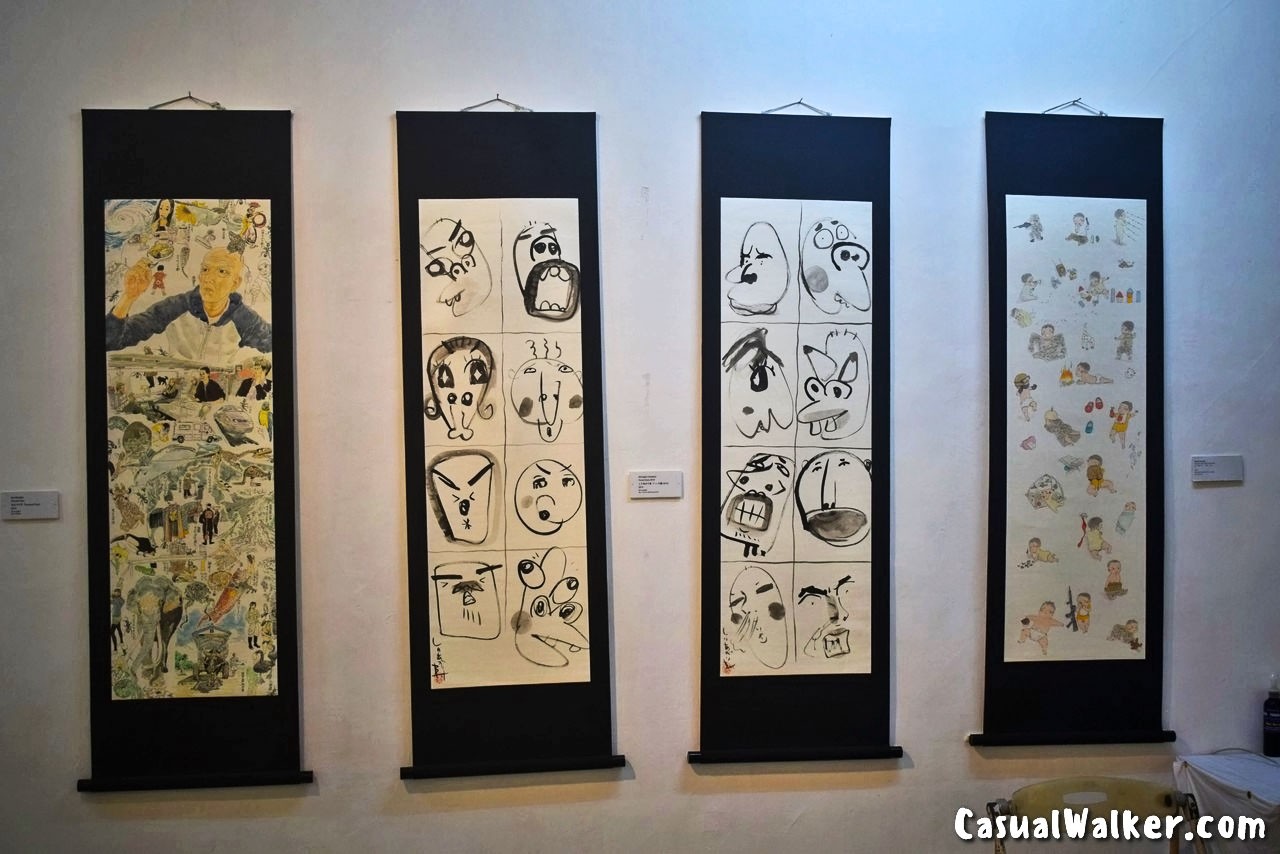
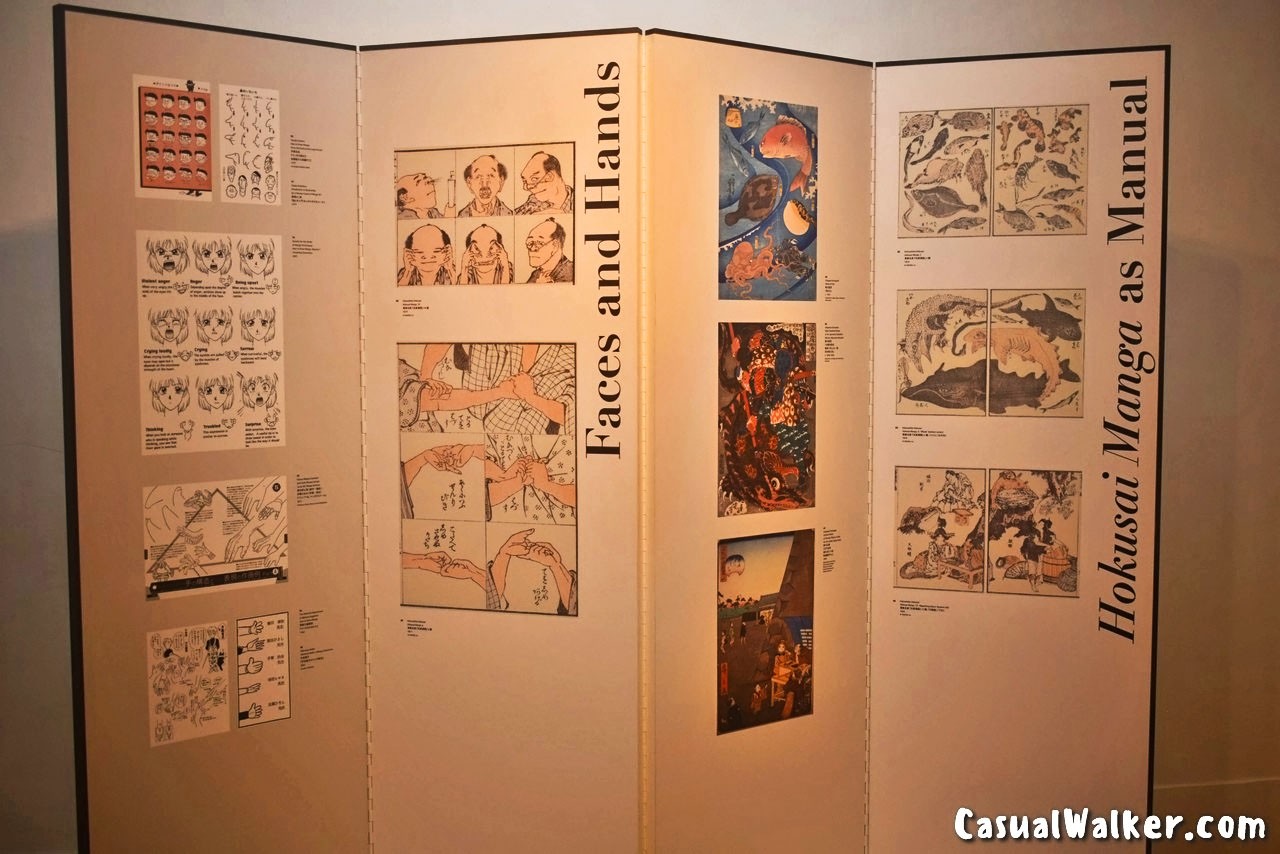
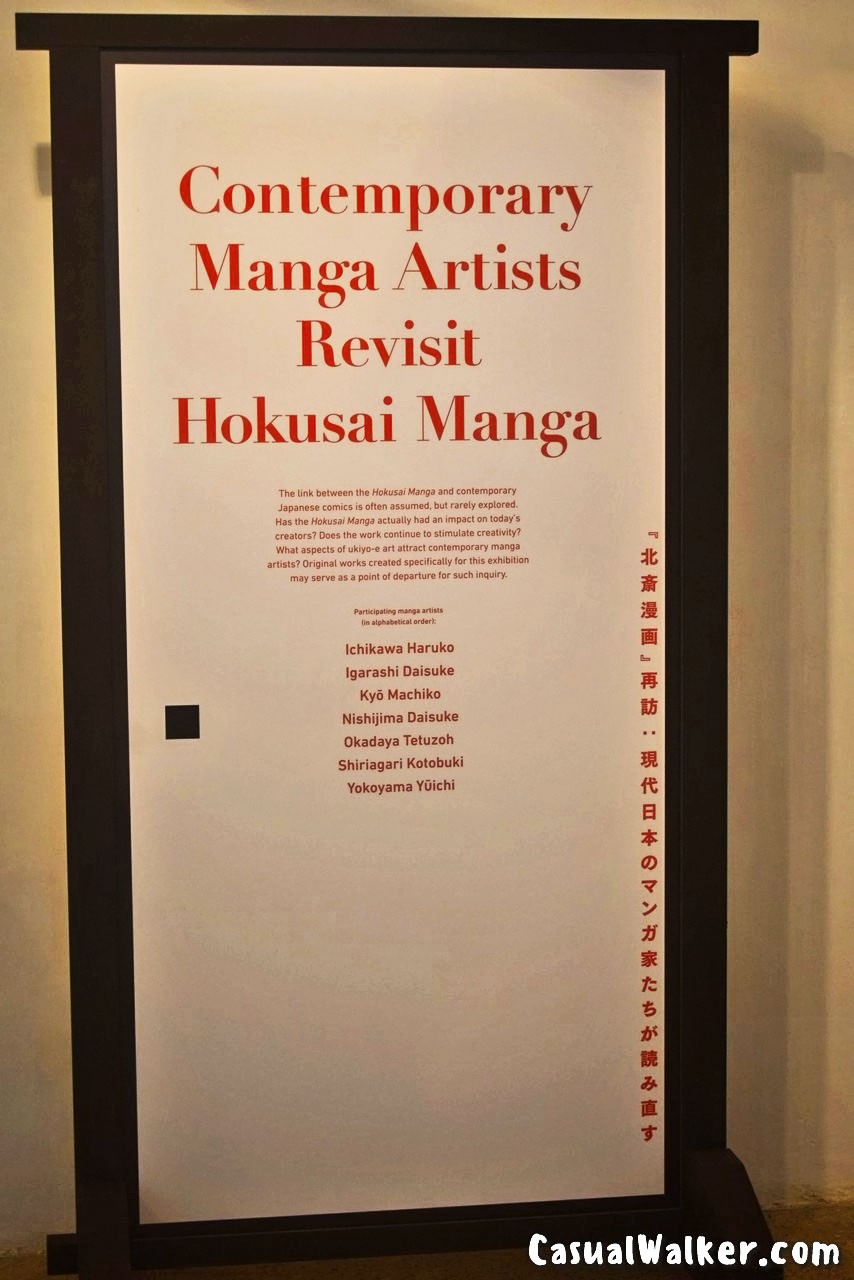
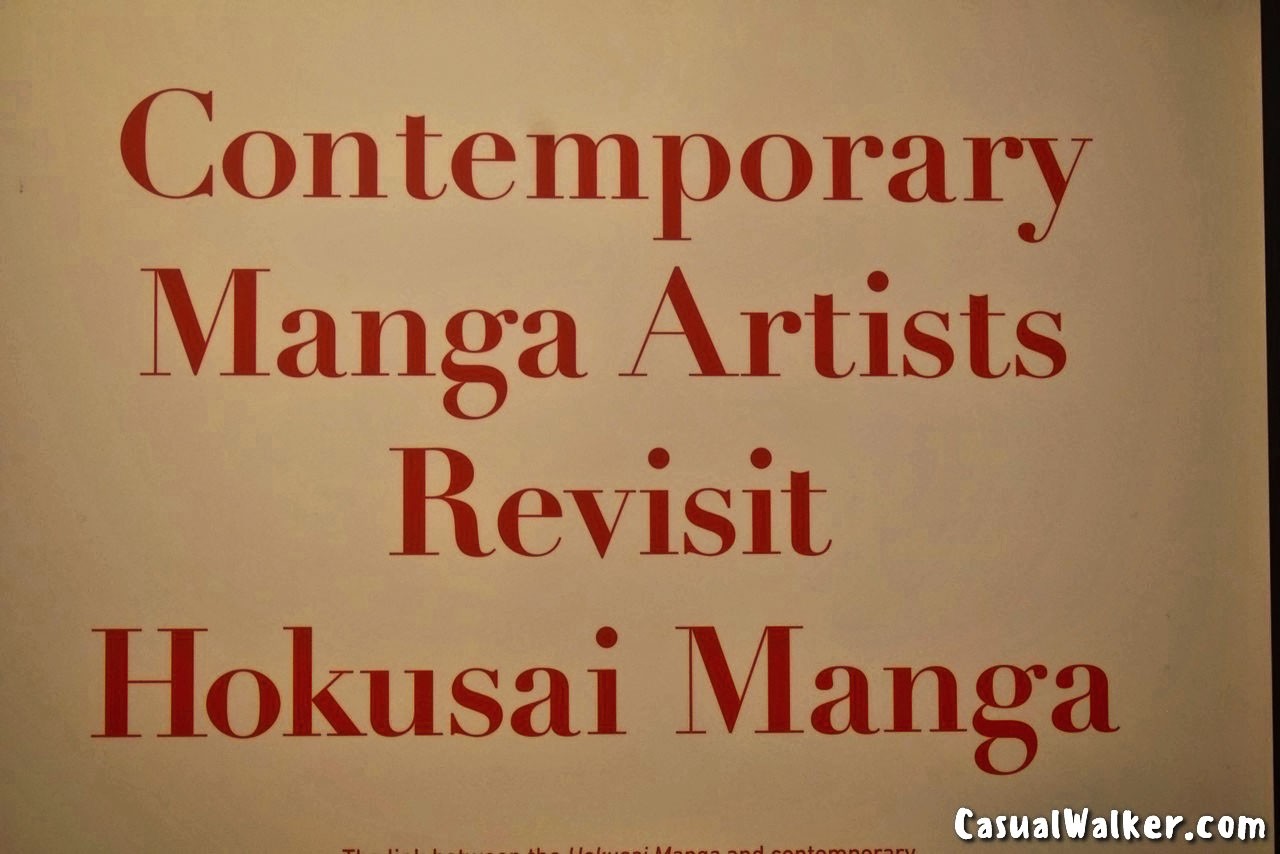
The link between the Hokusai Manga and contemporary Japanese comics is often assumed but rarely explored. Has the Hokusai Manga actually had an impact on today’s creators? Does the work continue to stimulate creativity? What aspects of ukiyo-e art attract contemporary manga artists? Original works created specifically for this exhibition may serve as a point of departure for such inquiry.
Participating manga artists – Ichikawa Haruko, Igarashi Daisuke, Kyō Machiko, Nishijima Daisuke, Okadaya Tetuzoh, Shiriagari Kotobuki, Yokoyama Yuichi
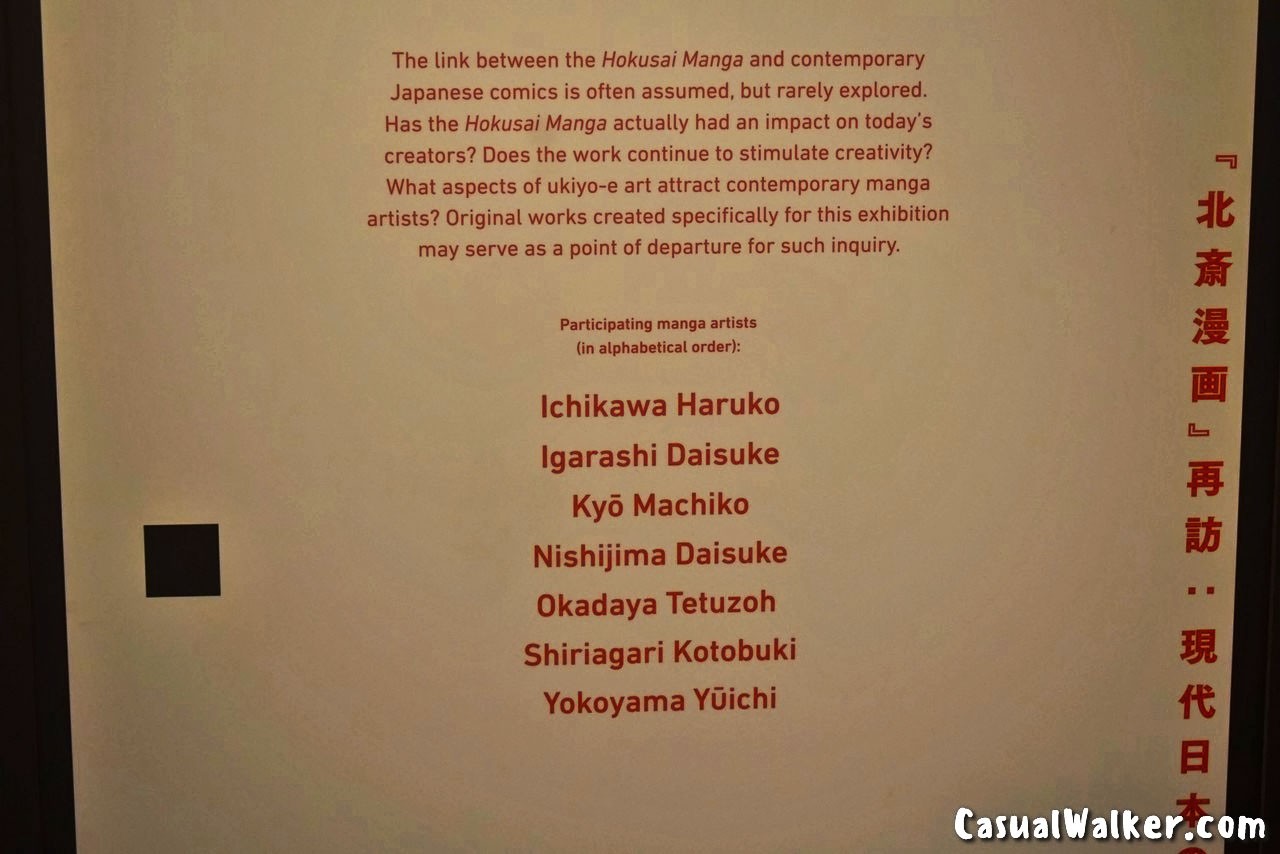
Toward the end of the exhibition, people can see various famous manga. The curation is packed with information and the history of manga.
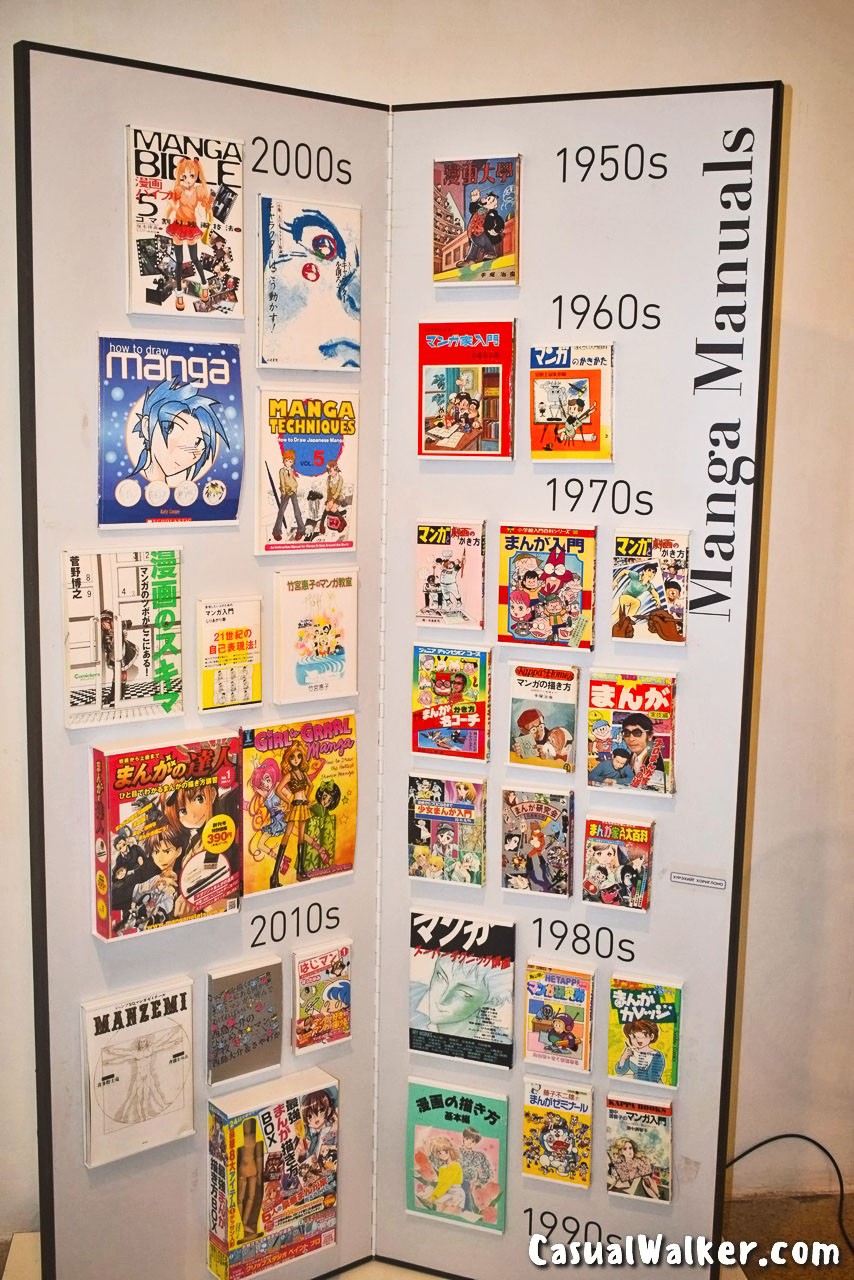
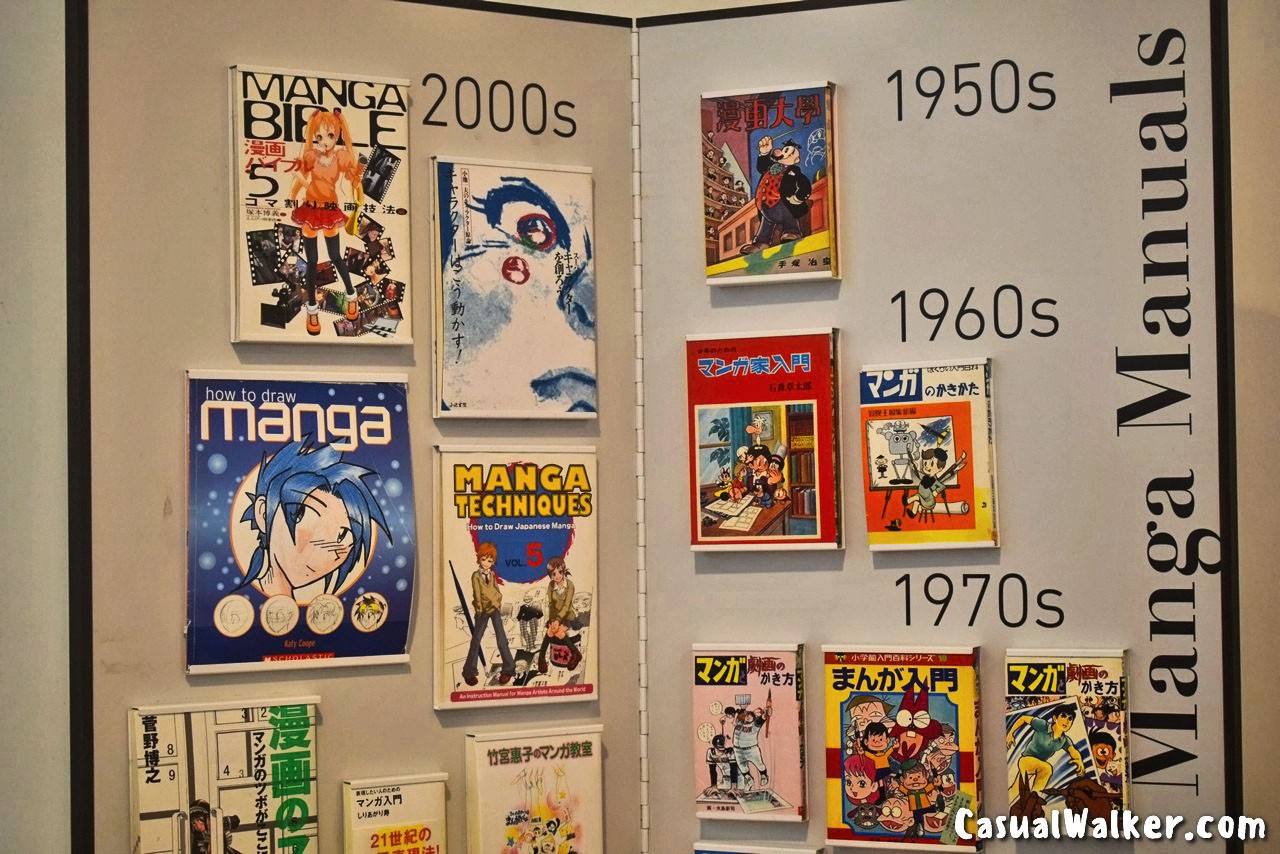
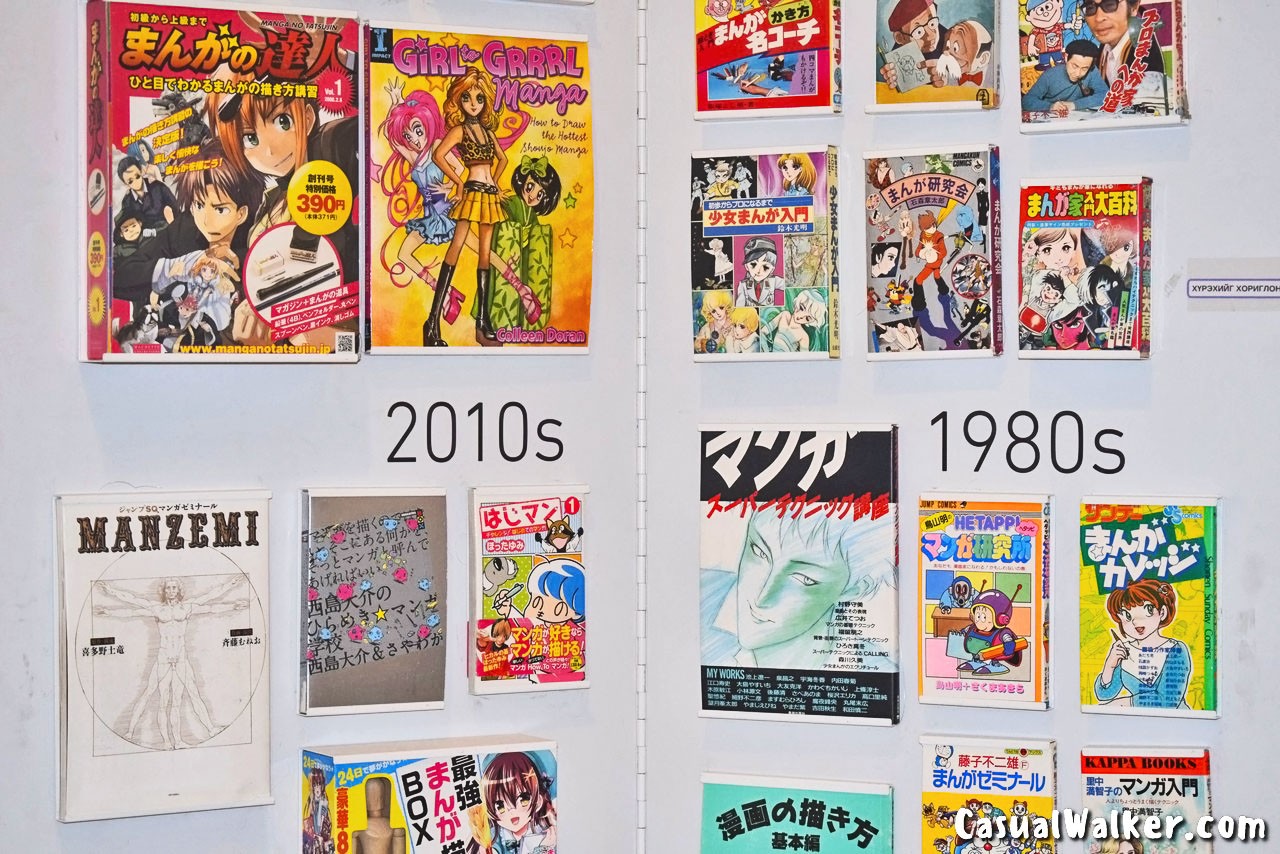
Also, check out Similar Interesting Art and Culture related Photo Stories:
Asuras – Swarna Kolu / Golu, an Indian mythological Dolls & idols Exhibition at Thejus, Chennai
Puppet exhibition by Dhaatu Puppet Theatre, Bangalore / Bengaluru

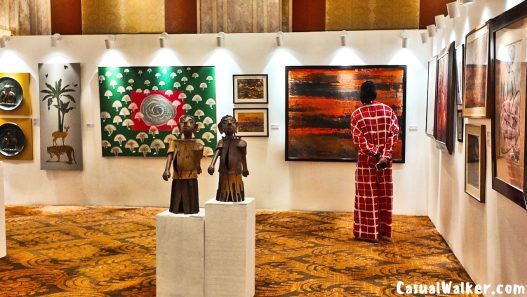

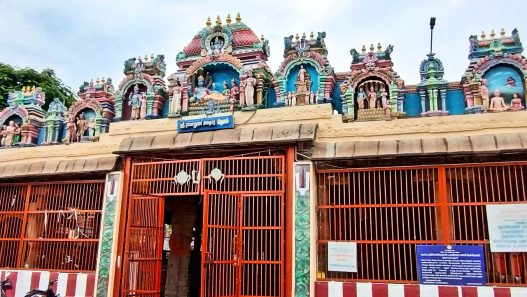

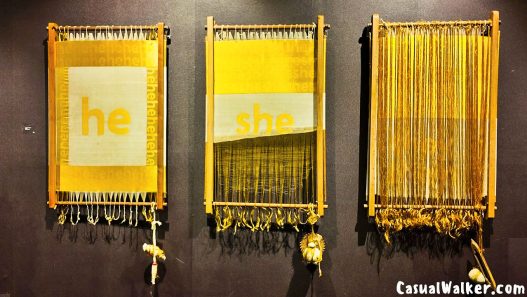

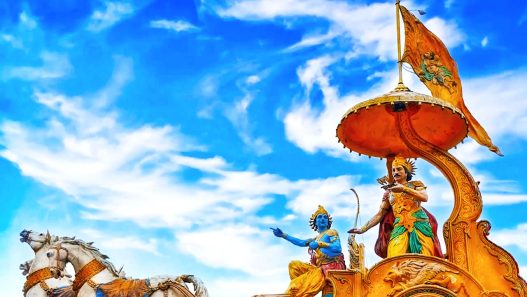
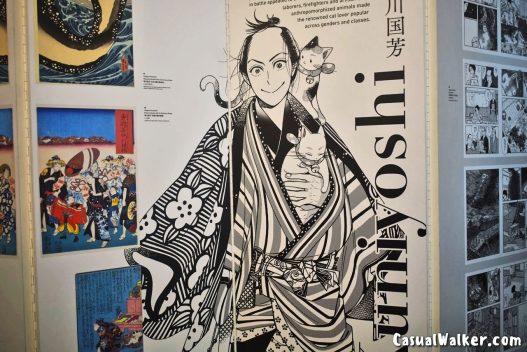

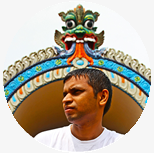

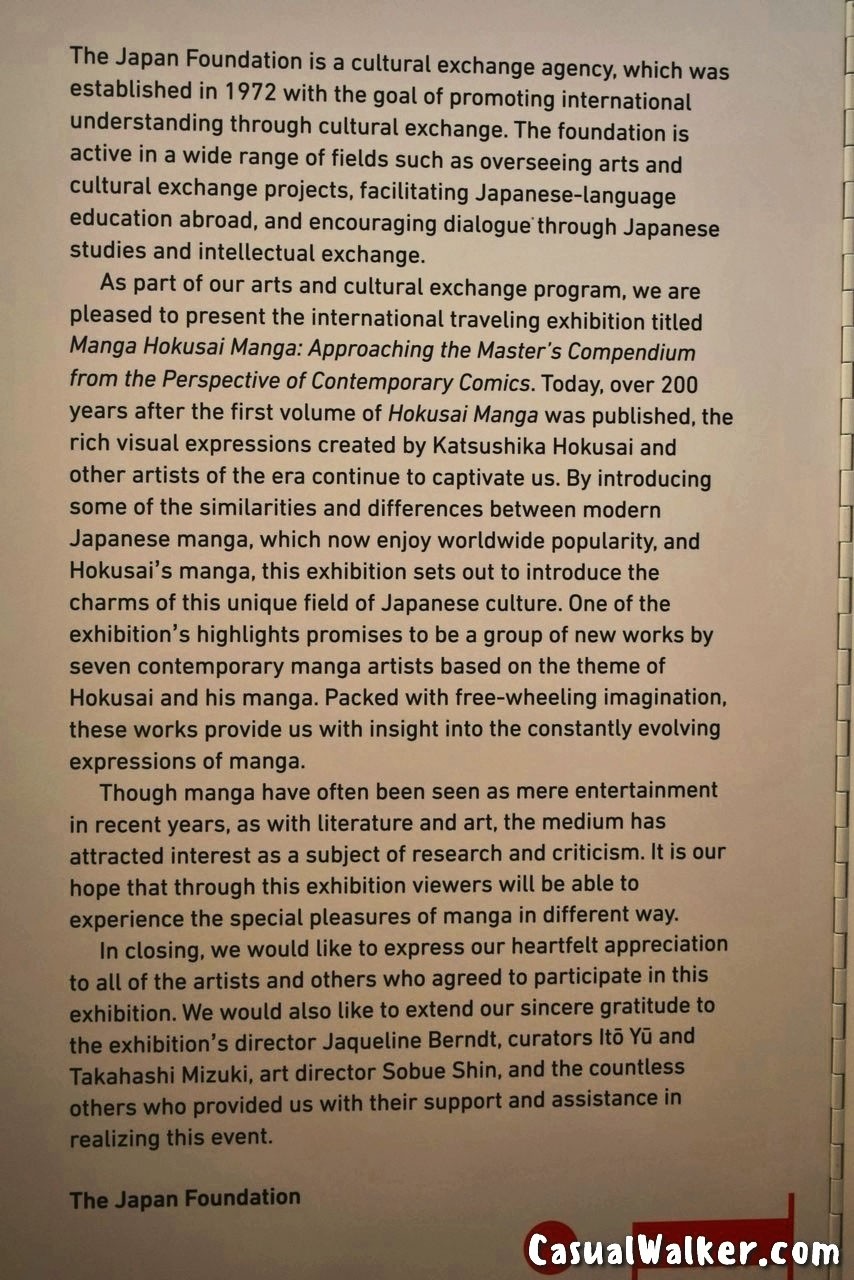
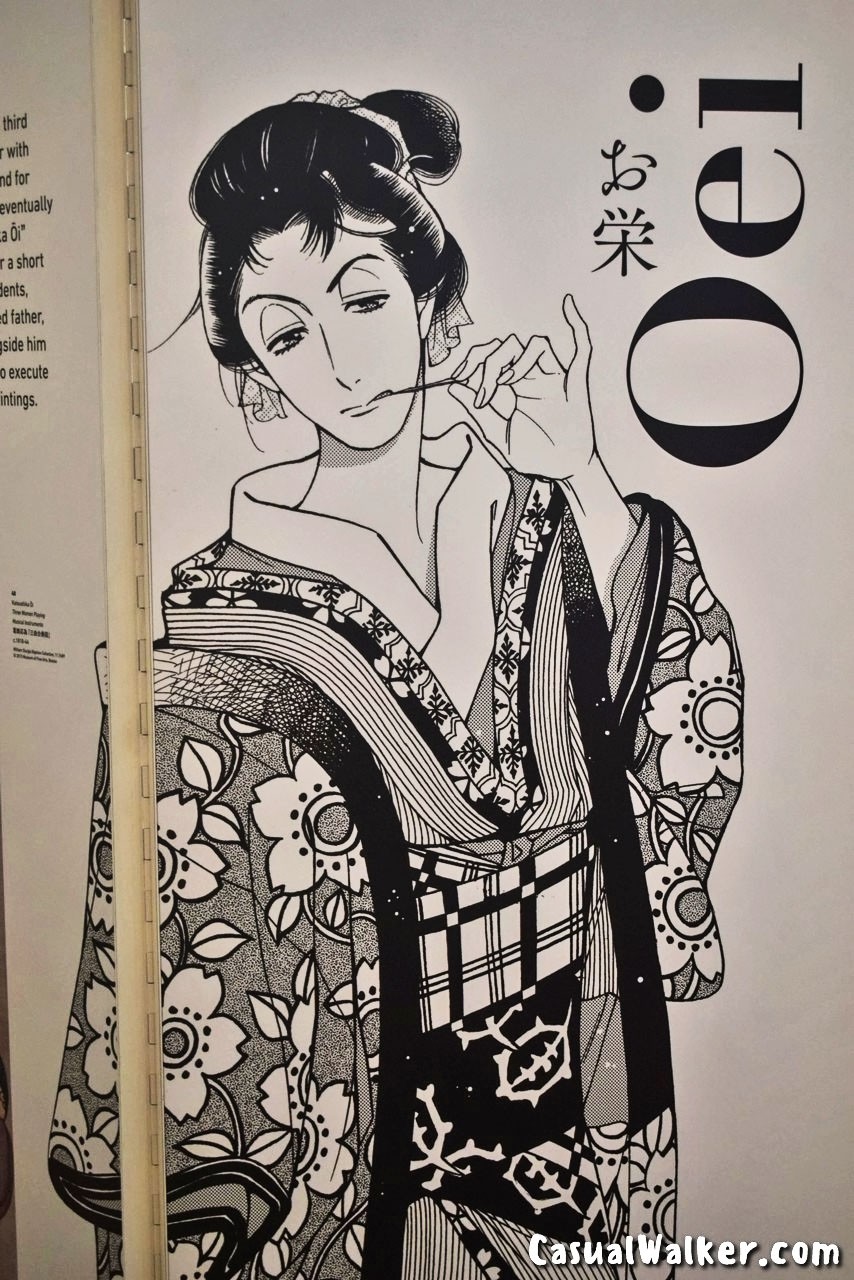













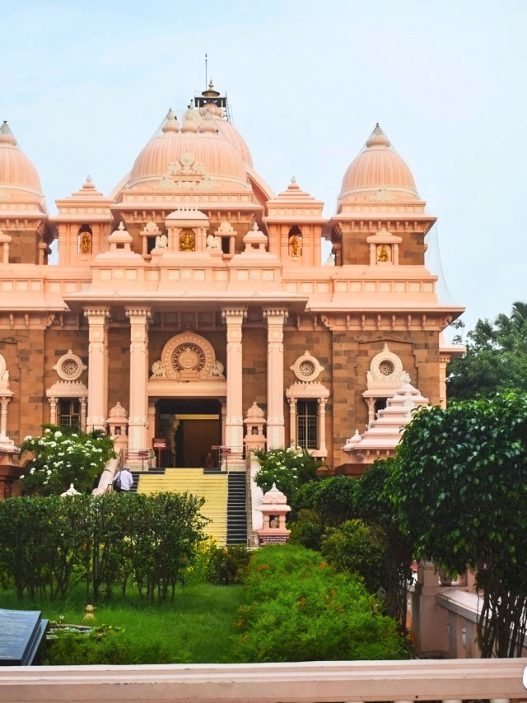
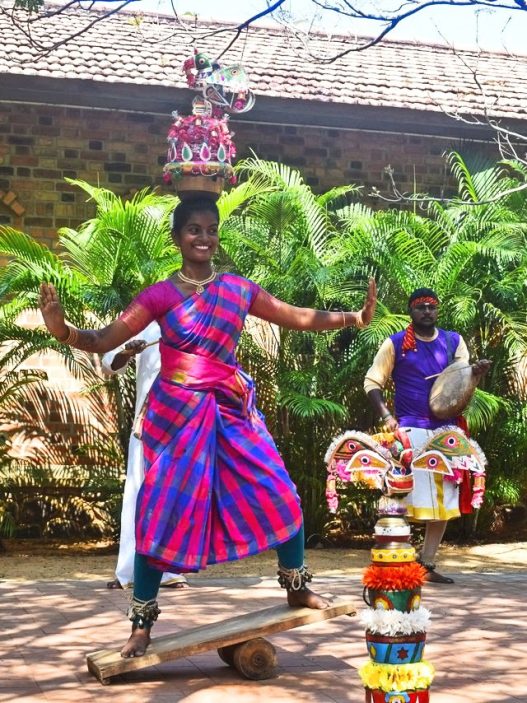
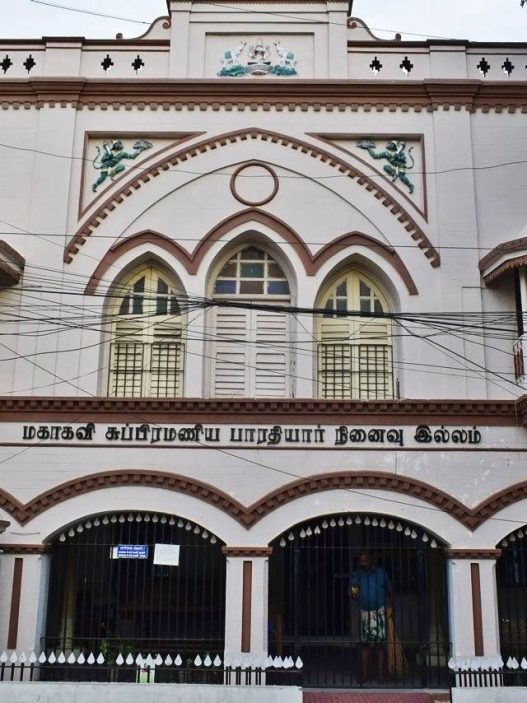
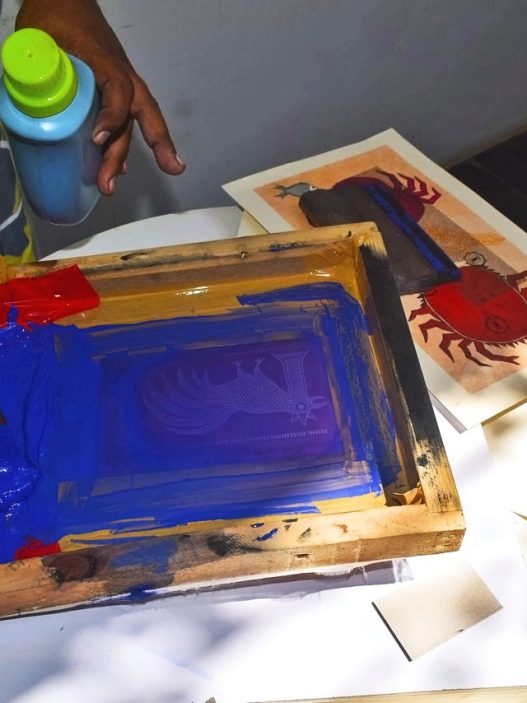

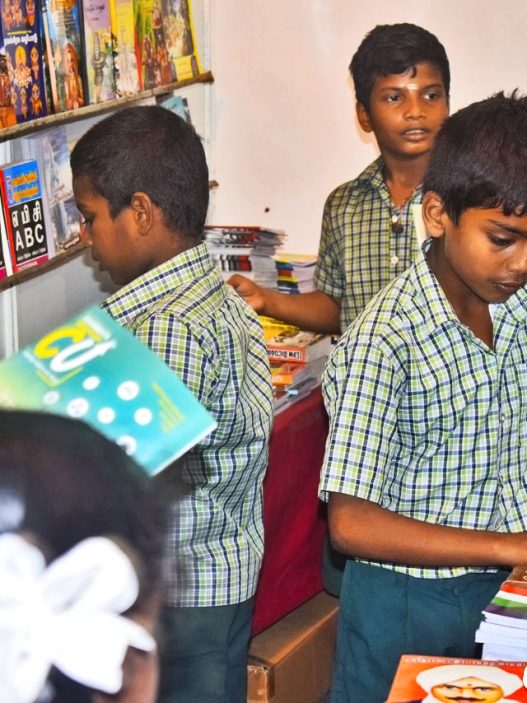
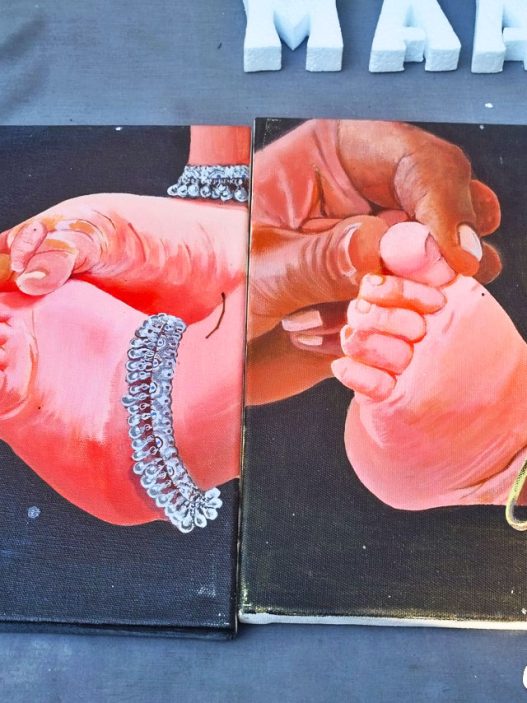
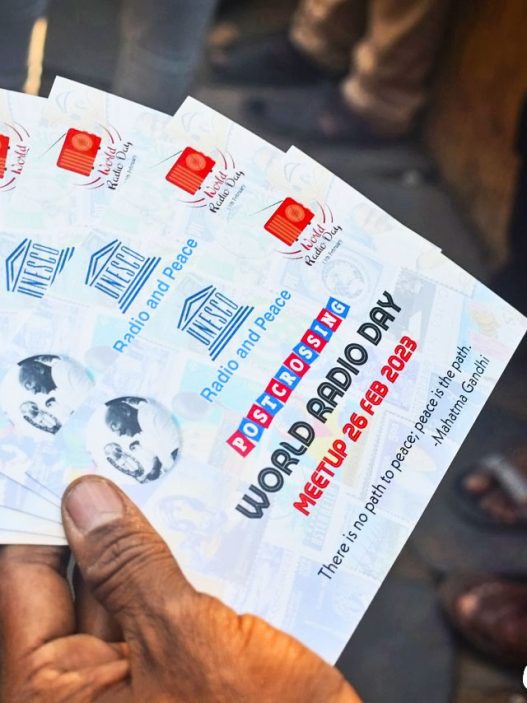
I wanted to thank you for this great read!! I definitely enjoying every little bit of it I have you bookmarked to check out new stuff you post…
I gotta favorite this website it seems very beneficial handy
It’s arduous to seek out knowledgeable individuals on this topic, but you sound like you know what you’re speaking about! Thanks
Hello.This article was extremely remarkable, particularly because I was browsing for thoughts on this issue last week.
Hi would you mind stating which blog platform you’re using? I’m planning to start my own blog in the near future but I’m having a tough time choosing between BlogEngine/Wordpress/B2evolution and Drupal. The reason I ask is because your design seems different then most blogs and I’m looking for something unique. P.S Sorry for being off-topic but I had to ask!
I was very happy to search out this web-site.I needed to thanks to your time for this excellent learn!! I undoubtedly enjoying each little bit of it and I’ve you bookmarked to check out new stuff you weblog post.
Regards for all your efforts that you have put in this. very interesting information.
I know this if off topic but I’m looking into starting my own blog and was curious what all is required to get setup? I’m assuming having a blog like yours would cost a pretty penny? I’m not very web savvy so I’m not 100 positive. Any suggestions or advice would be greatly appreciated. Appreciate it
I conceive you have remarked some very interesting details , appreciate it for the post.
I’m really impressed along with your writing talents and also with the layout on your weblog. Is this a paid topic or did you customize it your self? Anyway keep up the excellent quality writing, it’s uncommon to peer a great weblog like this one nowadays..
whoah this blog is magnificent i really like studying your articles. Keep up the great paintings! You already know, a lot of individuals are hunting round for this info, you could help them greatly.
Simply desire to say your article is as astounding. The clarity on your put up is simply excellent and i can assume you’re knowledgeable in this subject. Well with your permission let me to clutch your RSS feed to keep up to date with imminent post. Thanks one million and please keep up the rewarding work.
Very interesting info!Perfect just what I was looking for!
https://t.me/s/officials_pokerdom/4101
Good clarity
obviously like your website however you need to take a look at the spelling on several of your posts. Several of them are rife with spelling problems and I find it very troublesome to tell the truth however I will certainly come back again.
Impressive write-up